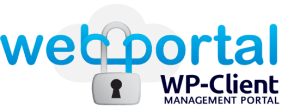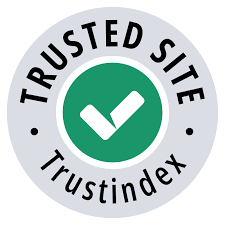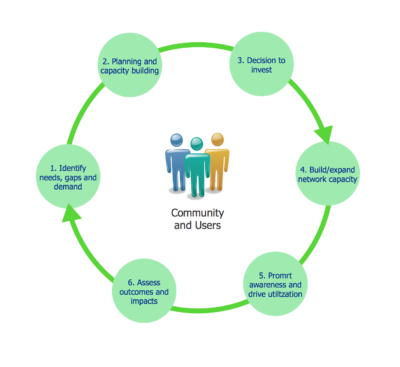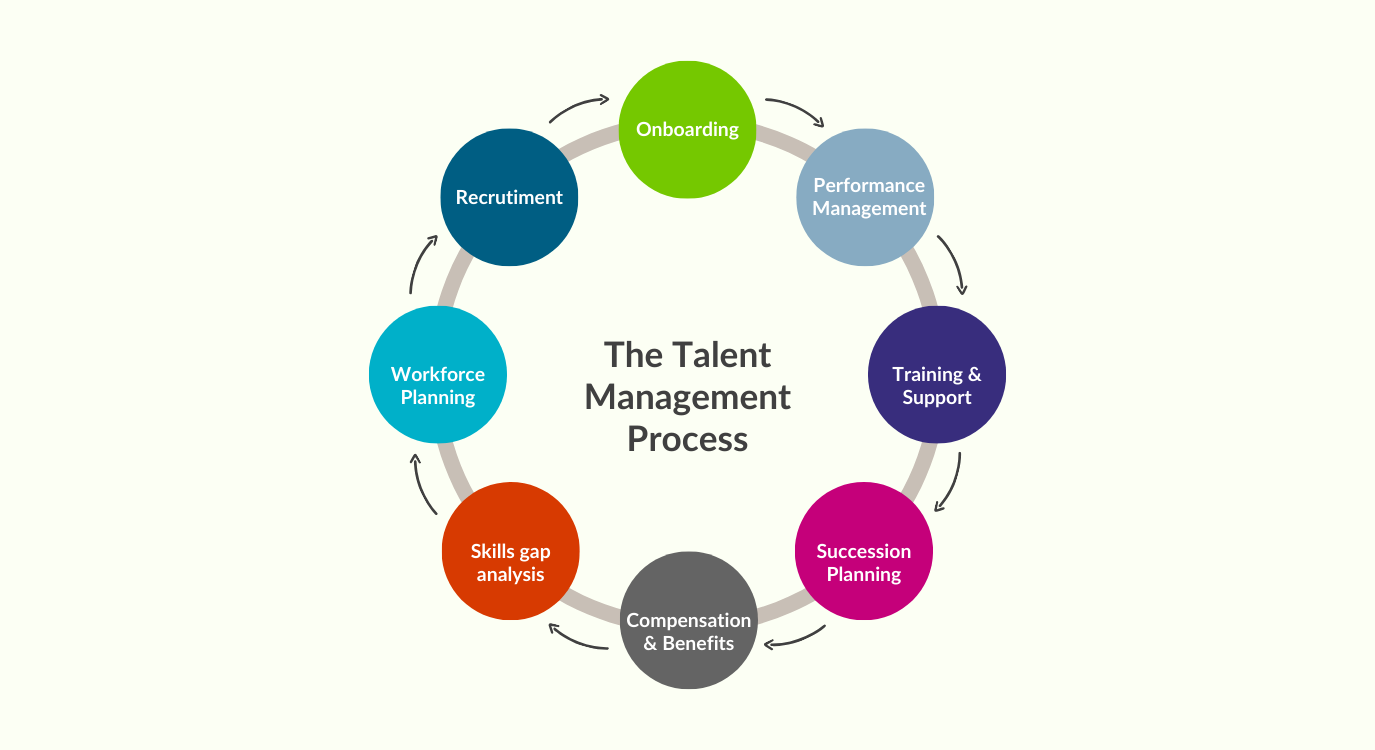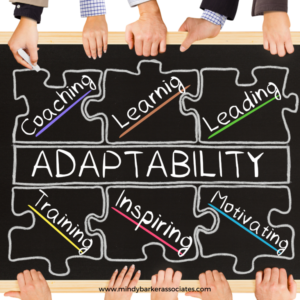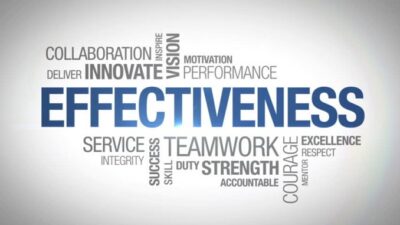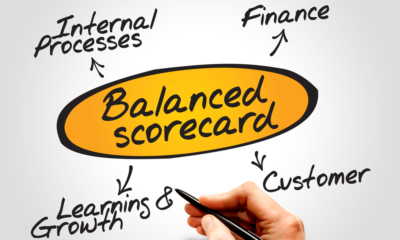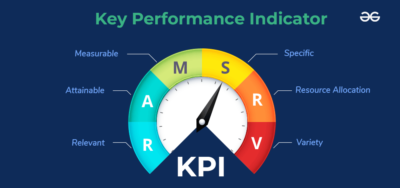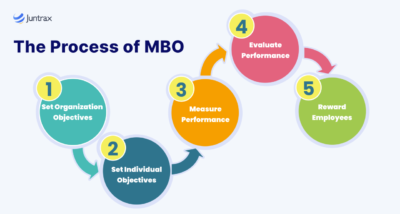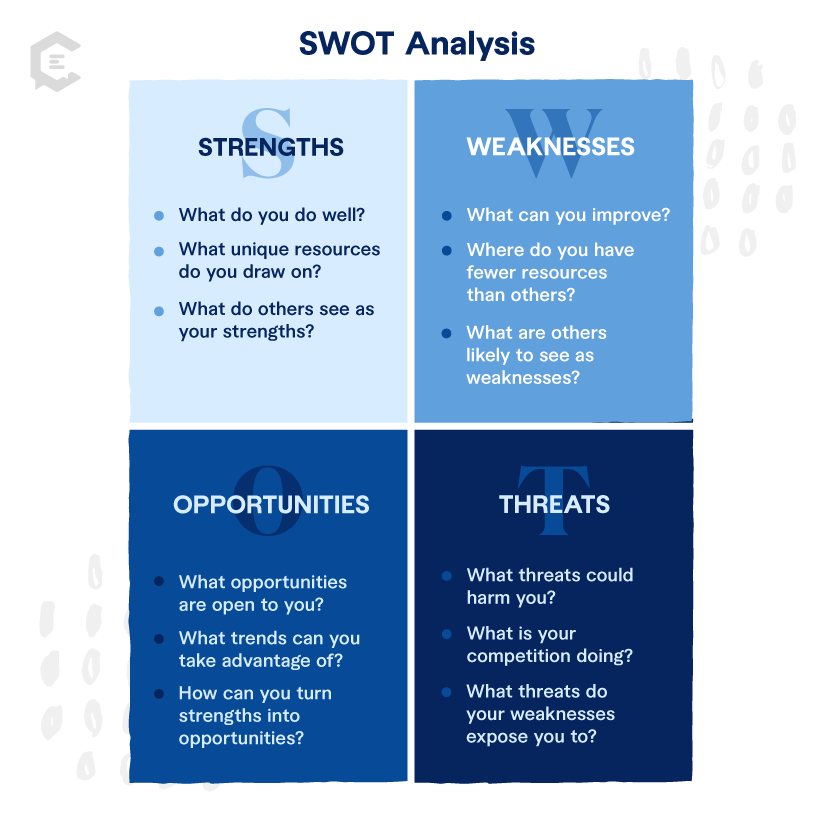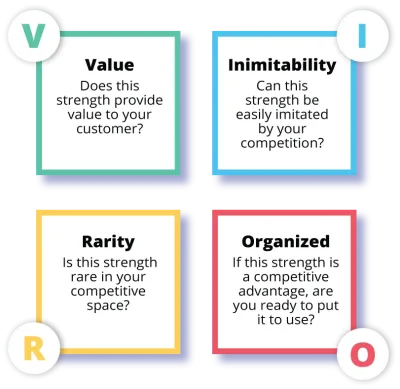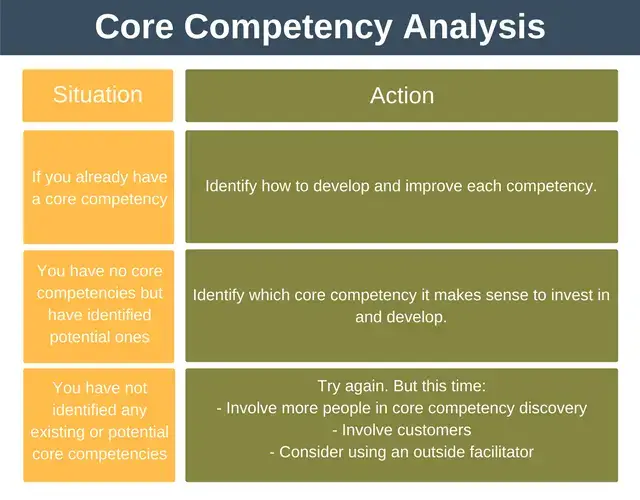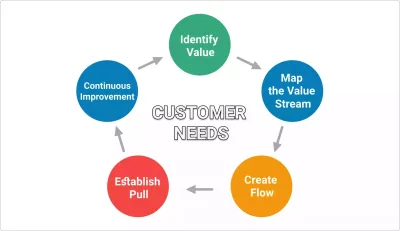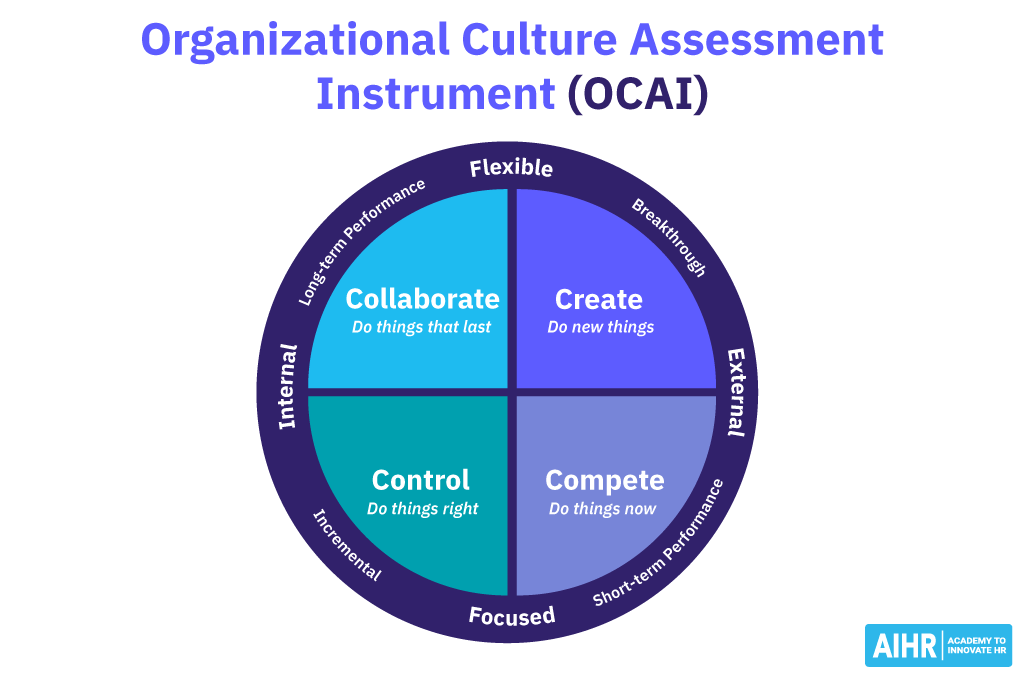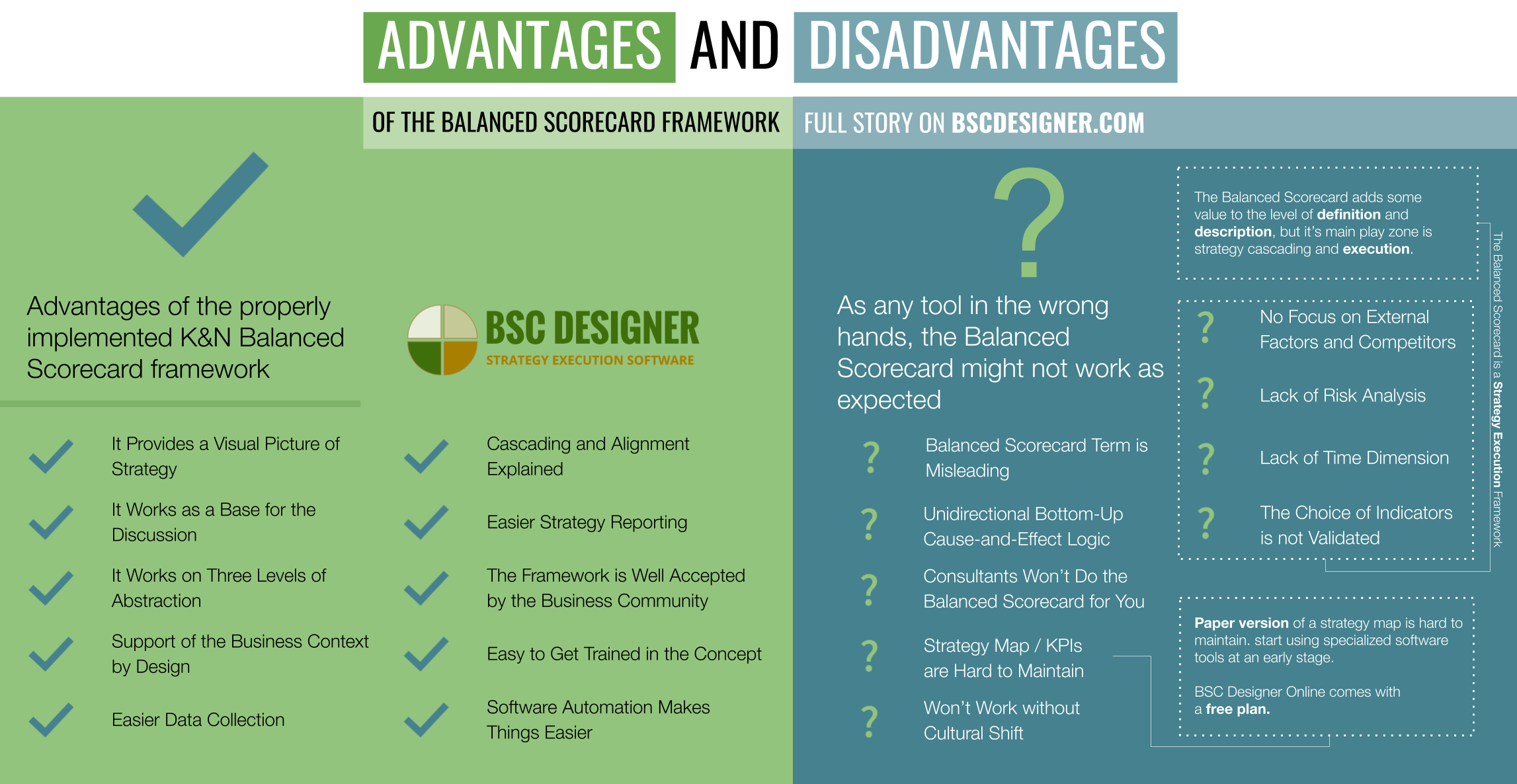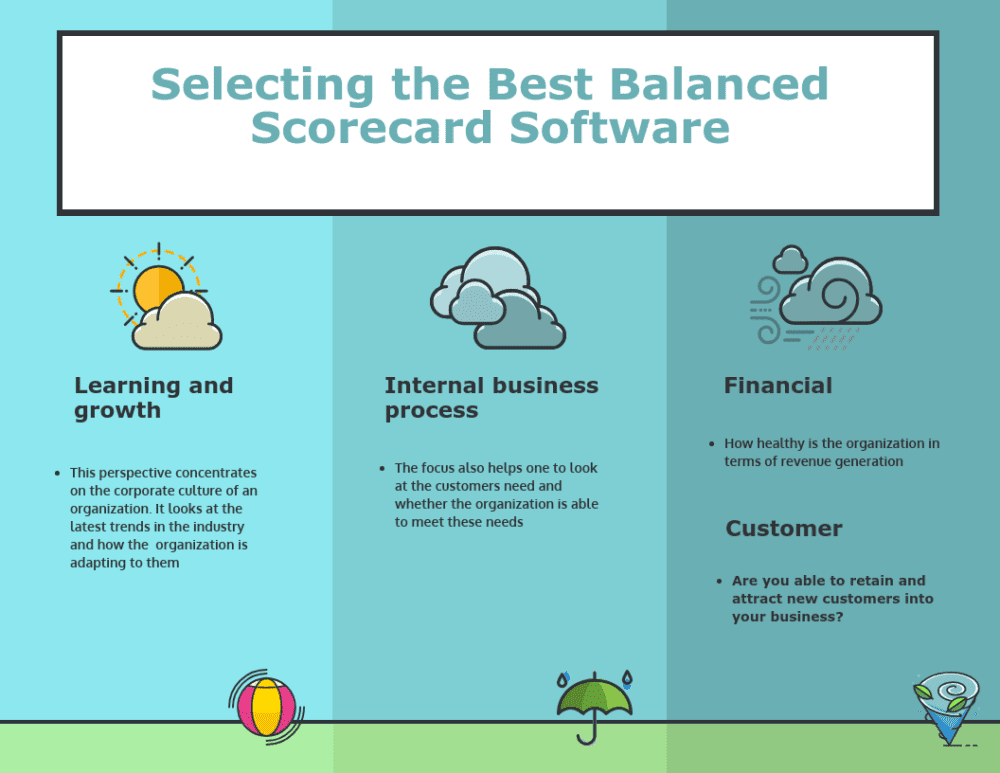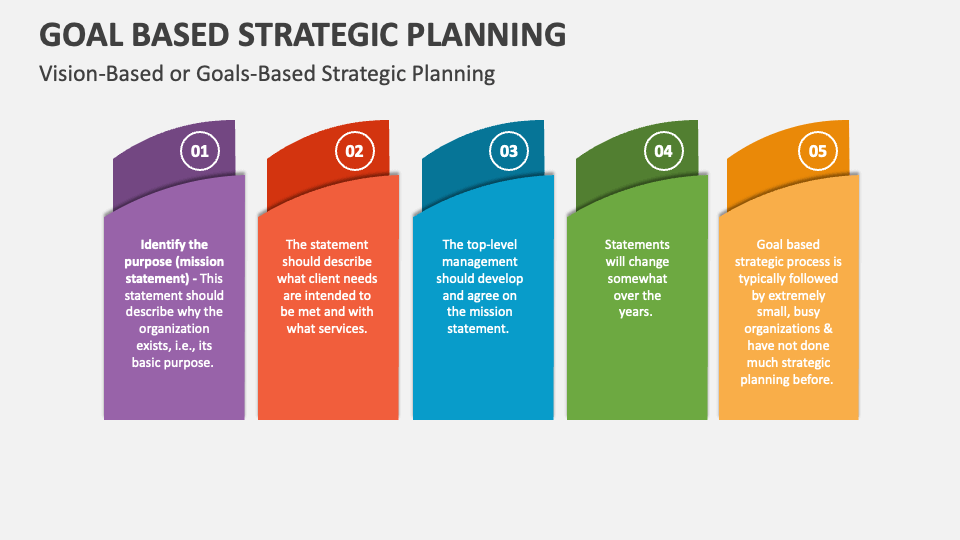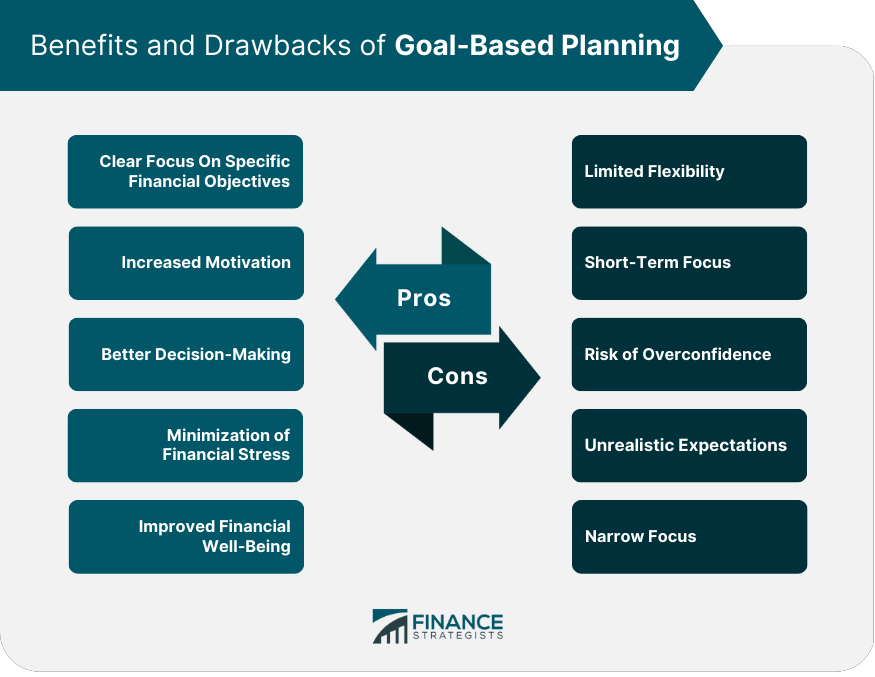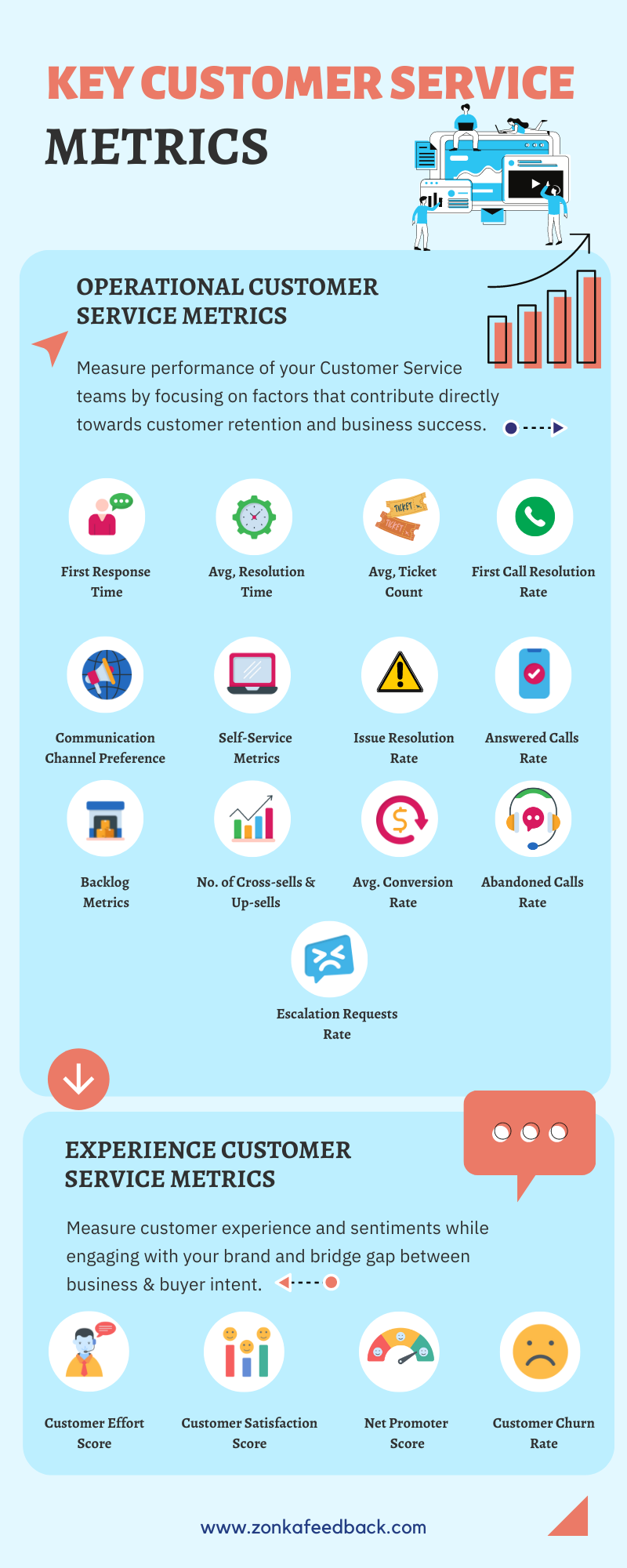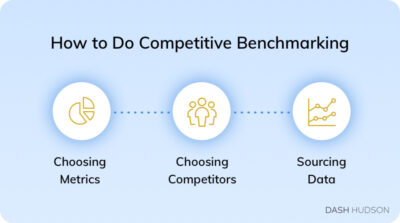Data Driven Decision Making – WDP1 (Business Effectiveness)

The Appleton Greene Corporate Training Program (CTP) for Data-Driven Decision Making is provided by Mr. Adama Certified Learning Provider (CLP). Program Specifications: Monthly cost USD$2,500.00; Monthly Workshops 6 hours; Monthly Support 4 hours; Program Duration 12 months; Program orders subject to ongoing availability.
If you would like to view the Client Information Hub (CIH) for this program, please Click Here
Learning Provider Profile

As an experienced workshop course provider with a diverse background in technology and consulting, Mr. Adama. has demonstrated exceptional adaptability in working with various stakeholders ranging from operational teams to executive and board members, as well as startup founders. His ability to communicate effectively and collaborate with different stakeholders has been crucial to his success in delivering outstanding results and driving improvements across multiple industries.
Over the years, he has garnered experience in various industries, including banking, manufacturing, petroleum energy, real estate, and automotive OEM. In 2023, he expanded his expertise into the SaaS domain, creating an end-to-end Real Estate AI Platform for Belgian investors. With a comprehensive understanding of each industry’s unique challenges and opportunities, he has excelled in delivering tailored solutions to meet his clients’ needs. His extensive experience in technologies like Python, SQL Azure, Azure Data Factory, Synapse Analytics, PowerBI, PowerBI Embedded, Bot, and AI Builder allows them to provide an engaging and informative learning experience for workshop participants across various fields.
His professional journey also includes a successful stint at Euroclear from 2015 to 2022, where he held various roles such as Power Platform Developer, Power BI Specialist, and Corporate Finance Expert. During his tenure, he focused on designing and implementing KPIs, automating reporting processes, and driving digital transformation through Power Platform solutions, which led to significant improvements in performance reviews and content sharing. As a business analyst, he excelled at identifying and analyzing budget deviations, providing valuable insights to steer actions. Before Euroclear, he worked at SeaOwl in the Mergers and Acquisitions domain, where he conducted valuation analyses and structured deals for potential acquisitions in the oil and services sector. With a proven track record of leading various continuous improvement projects, he is poised to provide an enriching and comprehensive learning experience as a workshop course
MOST Analysis
Mission Statement
As business analysts, we have been investigating the phenomenon of business effectiveness, which embodies the capability of a company to attain its aims and aspirations. It encompasses the measurement of a company’s optimal utilization of its resources to produce the desired results. It can be gauged by observing key performance metrics such as revenue escalation, profit margins, market dominance, customer satisfaction, employee commitment, and return on investment.
An organization that efficiently manages its resources generates value for its clients and realizes its objectives can be deemed effective. The ability to conform to market changes, persistently enhance its processes and operations, and expertly manage its finances adds another dimension to business effectiveness, further solidifying its position as a crucial aspect of business operations.
The companies listed here are widely recognized for their trailblazing and avant-garde approaches to business. Google, for instance, is lauded for its ingenuity in creating search engine technology and forays into cutting-edge concepts like self-driving cars and smart home devices. Meanwhile, Apple is known for its innovative products like the iPhone, iPad, and MacBook, all of which showcase its design savvy and technological prowess. Amazon is celebrated for its disruptive influence on retail markets, thanks to innovations like one-click ordering and same-day delivery, as well as its success in expanding into new ventures such as cloud computing and streaming media. Tesla is highly regarded for its forward-thinking approach to electric vehicles and energy storage systems and its unwavering commitment to sustainability and clean energy. Finally, Netflix has earned its place on this list for its game-changing impact on the TV and movie industries due to trailblazing initiatives like video streaming on demand and producing original content.
In conclusion, business effectiveness is a comprehensive notion that encompasses the proficiency of a company to attain its goals, create value for its customers, and optimize the utilization of its resources to attain the desired outcomes.
Objectives
01. Understanding Effectiveness: departmental SWOT analysis; strategy research & development. Time Allocated: 1 Month
02. Assessing Effectiveness: departmental SWOT analysis; strategy research & development. Time Allocated: 1 Month
03. Goal-Based Model: departmental SWOT analysis; strategy research & development. Time Allocated: 1 Month
04. Resource-based model: departmental SWOT analysis; strategy research & development. Time Allocated: 1 Month
05. Stakeholder-based model: departmental SWOT analysis; strategy research & development. Time Allocated: 1 Month
06. Internal Based model: departmental SWOT analysis; strategy research & development. Time Allocated: 1 Month
07. Competing values framework (CVF) Model: departmental SWOT analysis; strategy research & development. 1 Month
08. Balance Scorecard Model: departmental SWOT analysis; strategy research & development. Time Allocated: 1 Month
09. Prioritization Techniques: departmental SWOT analysis; strategy research & development. Time Allocated: 1 Month
10. Project Management Basis: departmental SWOT analysis; strategy research & development. Time Allocated: 1 Month
11. Key Performance Indicator and Metrics: departmental SWOT analysis; strategy research & development. Time Allocated: 1 Month
12. Benchmark Analysis: departmental SWOT analysis; strategy research & development. Time Allocated: 1 Month
Strategies
01. Understanding Effectiveness: Each individual department head to undertake departmental SWOT analysis, strategy research & development.
02. Assessing Effectiveness: Each individual department head is to undertake departmental SWOT analysis, strategy research & development.
03. Goal-Based Model: Each individual department head undertakes departmental SWOT analysis and strategy research and development.
04. Resource-based model: Each individual department head undertakes departmental SWOT analysis, strategy research, and development.
05. Stakeholder-based model: Each individual department head undertakes departmental SWOT analysis and strategy research and development.
06. Internal-based model: Each individual department head undertakes departmental SWOT analysis and strategy research and development.
07. Competing values framework (CVF) Model: Each individual department head undertakes departmental SWOT analysis, strategy research, and development.
08. Balance Scorecard Model: Each individual department head undertakes departmental SWOT analysis and strategy research and development.
09. Prioritization Techniques: Each individual department head is to undertake departmental SWOT analysis, strategy research & development.
10. Project Management Basis: Each individual department head undertakes departmental SWOT analysis, strategy research, and development.
11. Key Performance Indicators and Metrics: Each individual department head will undertake departmental SWOT analysis and strategy research and development.
12. Benchmark Analysis: Each individual department head is to undertake departmental SWOT analysis, strategy research & development.
Tasks
01. Create a task on your calendar, to be completed within the next month, to analyze Understanding Effectiveness.
02. Create a task on your calendar, to be completed within the next month, to analyze Assessing Effectiveness.
03. Create a task on your calendar, to be completed within the next month, to analyze Goal Based Model.
04. Create a task on your calendar, to be completed within the next month, to analyze Resource Based model.
05. Create a task on your calendar, to be completed within the next month, to analyze Stakeholder Based model.
06. Create a task on your calendar, to be completed within the next month, to analyze Internal Based model.
07. Create a task on your calendar, to be completed within the next month, to analyze Competing values framework (CVF) Model.
08. Create a task on your calendar, to be completed within the next month, to analyze Balance Scorecard Model.
09. Create a task on your calendar, to be completed within the next month, to analyze Prioritization Techniques.
10. Create a task on your calendar, to be completed within the next month, to analyze Project Management Basis.
11. Create a task on your calendar, to be completed within the next month, to analyze Key Performance Indicator and Metrics.
12. Create a task on your calendar, to be completed within the next month, to analyze Benchmark Analysis.
Introduction
We welcome you and thank you for attending the first Workshop on Data-Driven Decision Making (CDM), a ground-breaking strategy meant to transform the corporate sector. Today’s discussion examines the benefits of strategic and effective data utilization to reduce procedures, simplify business operations, and thus enhance corporate operations.
Making well-informed decisions requires the guiding ideas of data analysis and interpretation. Hence, these should be the foundations for all decisions. DDDM’s approach to decision-making is based on quantitative facts instead of depending on intuition or anecdotal data. This shows the great degree of expertise of the results and their objectivity. This approach allows companies to get insightful analysis, project future developments, and base decisions on correct data more effectively.
Since business effectiveness directly affects a company’s capacity to achieve its aims and objectives efficiently, it is imperative to underline its relevance. Successful companies give great importance to reaching their goals of improving their operational efficiency, optimizing their profitability, meeting the needs of their consumers, and obtaining a competitive advantage.
Effectiveness Importance
Business effectiveness is a critical factor in determining the success and longevity of organizations. It refers to the ability of companies to efficiently utilize their resources, including time, money, and talent, to achieve their goals and objectives. Effective organizations outperform their competitors, maintain a strong market position, and achieve their desired outcomes.
Achieving business effectiveness requires a combination of critical factors, including strategic planning, process optimization, talent management, performance measurement, and adaptability.
Strategic planning is plotting a course for ongoing success.
Strategic planning forms the basis of effective corporate operations since it helps define long-term goals and determine the actions needed to achieve them. This comprehensive approach guarantees that all efforts align with the company’s central vision by giving one a clear direction and road map.
Long Term Goal Setting
The first stage in strategic planning is the development of separate, long-term goals. These objectives will help the company mirror its vision and mission, giving it direction and a sense of purpose. Usually spanning three to five years, long-term objectives focus on significant achievements that will significantly affect the company’s future and time. Some possibilities are expanding into new markets, bringing fresh ideas, or reaching notable income growth.
Order of Steps to Reach Goals
After establishing long-term goals, the next phase is to indicate the actions to be done to reach those goals. Every goal must be dissected into exact, doable tasks to do this. Time-bound and thorough, these phases should specify who oversees each activity, what tools are needed, and which indicators will track development. These acts should also come with a deadline. Creating a thorough action plan helps companies ensure that every team member understands their responsibilities and that they cooperate in a coordinated way.
Learning About the Surrounding Environment
Effective strategic planning depends on one being able to understand the external surroundings fully. One must examine many aspects that could affect the company’s ability to achieve this. These elements include technical innovations, economic developments, competitive dynamics, legislative changes, and societal upheavals. Many tools can help one thoroughly assess these external factors, including the PESTLE analysis—which stands for political, economic, social, technological, legal, and environmental—and the SWOT analysis—which stands for strengths, weaknesses, opportunities, and threats. The degree of knowledge of the external environment directly determines an organization’s capacity to spot chances for profit and hazards to minimize.
Identifying Risk and Opportunity: The Process
Finding both possibilities and harmful circumstances is one of the most crucial parts of strategic planning. Opportunities are outside factors the company might use to reach its goals. Among the possibilities are changes in consumer behavior, technology developments, and market expansion. Conversely, threats are outside factors that could stop the company from running as it should. New rivals, legislative changes, or economic hardships are some potential hazards . Once these changes and risks have been recognized, companies may create plans that will enable them to maximize their assets, correct their shortcomings, seize possibilities, and protect themselves from possible hazards .
Applying Harmony’s Resources and Strengths
Companies that want to handle risks and seize possibilities effectively must first be able to match their resources and capacity. Internal research must be conducted to identify the core competencies, unique skills, and readily available tools to reach this. Aligning these strengths and resources with the acknowledged opportunities can help a company to develop a strategic advantage. For example, one company with a vital research and development team can focus on innovation to grab fresh market prospects. Conversely, a company with extensive distribution systems could use these networks to expand into other areas.
Developing Goals That Are Specified and Within Reach
Strategic planning also entails developing well-defined, reasonable, and supporting goals for the long run. These goals should be SMART, specific, measurable, attainable, relevant, and time-bound. One should ensure that If companies decide to create SMART goals, they may make sure their aims are reasonable and reachable. Furthermore, these goals form the basis of performance assessment, which helps companies track development and implement required changes.
Developing Strategies Fit for Use
Developing plans that can be implemented is essential to properly converting strategic objectives into operational activities. These plans should list the activities, projects, and actions to reach the goals. Crucial elements that should be included in practical plans are timelines, resource budgets, and performance indicators. Organizations with exact plans that can be implemented will be able to ensure that strategic initiatives are executed successfully and that progress is regularly monitored.
Making Decisions Using Correct Information
Strategic planning has one of the most significant benefits since it allows companies to make knowledge-based decisions. Suppose leaders thoroughly grasp the external environment, possibilities and dangers, internal strengths and resources, and SMART objectives. In that case, they can make decisions corresponding to the company’s strategic goals. This helps to lower uncertainty and significantly raise the possibility of success.
Maintaining Focus While Being Flexible
Strategic planning requires agility, even if it can help companies keep their attention on their long-term goals. The corporate environment is continually changing; hence, companies must be able to modify their strategies in reaction to fresh data and constantly changing situations. Please review and update the strategic plan often to ensure it remains relevant and efficient in guiding the company toward accomplishing its goals.
To reach long-term business effectiveness, one must participate in strategic planning—a dynamic and ongoing process. Setting long-term goals, outlining specific actions, understanding the external environment, spotting opportunities and hazards, matching resources and strengths, creating SMART objectives, and creating thorough strategies can help businesses negotiate complexity and uncertainty confidently. Effective strategic planning ensures that all efforts are directed, that resources are used to their best advantage, and that decisions are informed, thereby guiding the company toward the long-term success of the kind.
In addition, effective strategic planning involves considering different scenarios and contingencies and analyzing trends and data to inform decision-making. This enables organizations to anticipate and respond to changes in the market, stay ahead of the curve, and maintain a competitive edge.
Process optimization
Optimizing business processes is a strategic approach aiming at increasing the efficiency and effectiveness of company processes. The procedure involves rigorous research to discover and eliminate inefficiencies, reduce waste, and improve product quality. If companies simplify their operations, they can cut costs, boost their output, and deliver better customer value. The essential elements of process optimization are the identification of inefficiencies, the constraint of waste, the improvement of quality, the use of best practices, the use of technology, and continuous monitoring and improvement of the process.
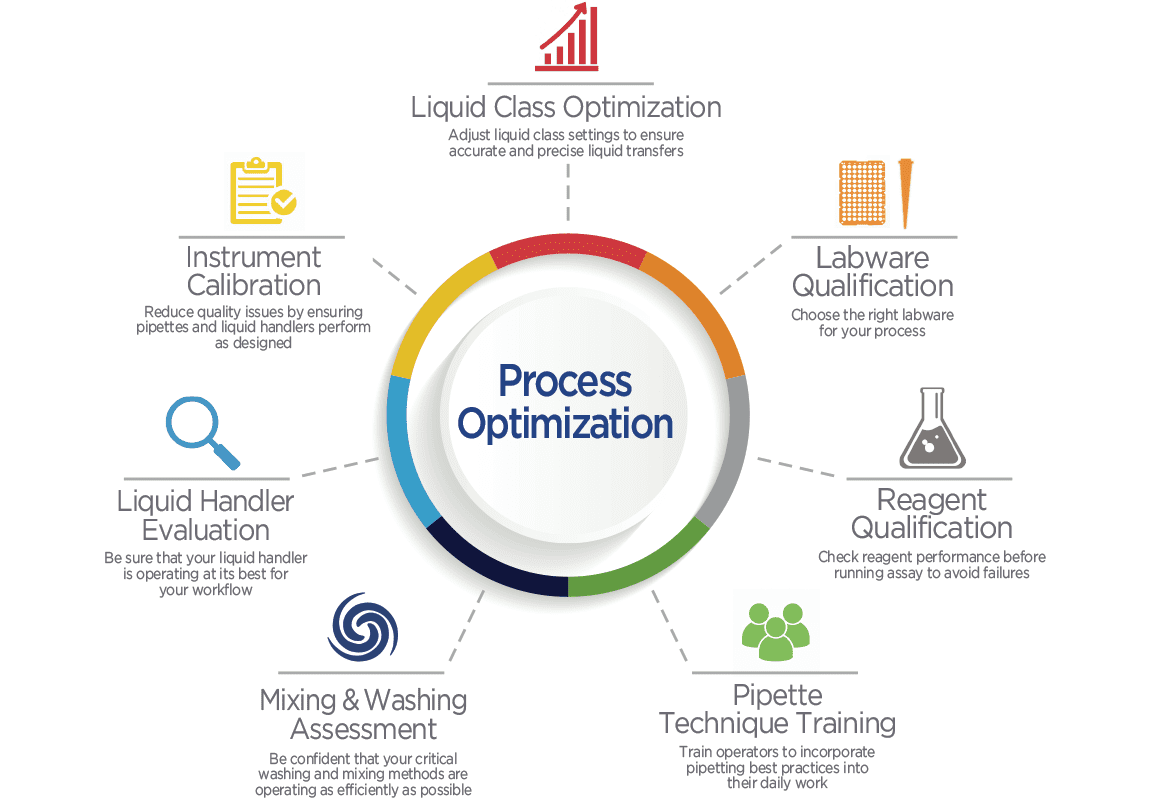
Spotting Underutilized Areas
The initial step in maximizing operations is spotting inefficiencies in the currently used systems. One must first map out the present systems to be aware of their flow and pinpoint areas where resources are being squandered, bottlenecks are developing, or unnecessary procedures are being inserted. Techniques include process mapping, workflow analysis, and value stream mapping that can be applied to finish a thorough study and visualization of processes. Finding these inefficiencies helps companies focus on areas that call for improvement, ensuring that efforts are targeted at the most in need.
Generating Less Waste
Reduction of waste is one of the most crucial features of process optimization. Among the several ways waste could manifest itself, time, resources, materials, labor, and money are among the most common. Lean techniques like the Toyota Production System stress the requirement of lowering waste to reach higher degrees of output. This area includes policies that include cutting waiting times, minimizing excess inventory, improving transportation efficiency, and stopping overproduction. Companies can simplify processes and reach more cost-effective and efficient procedures by methodically addressing and eliminating waste.
Raising the Standard of Quality
Improving output quality is among the main goals of process optimization. Higher-quality outputs translate into higher customer satisfaction, less rework and returns, and a better brand reputation. Six Sigma, Total Quality Management (TQM), and Continuous Improvement (Kaizen) are among the quality improvement strategies based on lowering errors and variability in the processes under their application. Driven by data, these approaches aim to identify the fundamental causes of quality issues and apply solutions ensuring constant, high-quality outputs.
Applying the Most Powerful Strategies
To achieve process optimization, best practices must be implemented. “Best practices” are established techniques and processes that achieve the intended results successfully. To apply strategies that have worked in such circumstances, an organization’s operations can be compared with industry standards. This can entail the acceptance of uniform policies, the application of quality control techniques, or the use of methods that have been shown successful in project management. Learning from other companies’ achievements helps companies enhance their procedures more quickly and effectively.
Benefiting from Technology
The use of technology is a critical factor in process optimization, simplifying and enhancing operations. Advancing technologies from recent years have enabled companies to streamline operations, automate repetitive tasks, and sharpen their data analytic capabilities. Tools such as Enterprise Resource Planning (ERP) systems, Customer Relationship Management (CRM) software, and Business Process Management (BPM) platforms are instrumental in this process. Two technologies that significantly boost process efficiency are artificial intelligence (AI) and robotic process automation (RPA), which provide predictive analytics by automating and enabling challenging tasks. By leveraging information technology, companies can simplify their procedures, making them more efficient and productive and reaping significant benefits.
Continuous Observation and Process Improvement
Two essential elements are constant monitoring and improvement to ensure that procedures remain effective and successful. Regularly reviewing the performance of the process, monitoring critical performance indicators (KPIs), and identifying areas that might utilize more development are crucial steps in this process. Techniques, including Business Process Reengineering (BPR) and Plan-Do-Check-Act (PDCA), are applied to assist ongoing optimization attempts. Organizations that foster a culture of continuing development not only adapt to changing conditions and handle fresh challenges but also maintain high performance levels, making them more prepared and resilient in the face of change.
Benefits of streamlining processing methods
• The advantages of process optimization influence several aspects of the performance of an organization; these are several and include the following:
• Reducing waste and eliminating inefficiencies helps companies improve their bottom line and reduce running expenses.
• Simplified processes help reduce the number of pointless jobs and boost staff productivity.
• Higher Customer Value By utilizing business process optimization, one can increase consumer pleasure and loyalty, which helps businesses offer better quality and more frequently.
• Effective procedures enable companies to react more quickly to market changes, higher customer expectations, and increased competition pressure.
• Optimization guarantees that resources such as time, money, and materials are used more wisely, enhancing their impact on the business’s objectives.
Method Optimization Application and Execution
The application of process optimization requires several necessary actions:
• Examining the present procedures holistically can help you spot possible improvement and inefficiency areas.
• Defining quantifiable objectives for the optimization efforts, such as cost savings, shortened cycle times, or improved quality.
• Planning should be a thorough strategy that includes the specific actions, tools, and dates to reach the optimization objectives.
• Implement the plan so that every pertinent stakeholder is engaged and any necessary changes are duly announced.
• Tracking: Ensure the process’s performance is constantly observed, collect data, and assess the outcomes against the set targets.
• Based on the acquired performance data and comments, make any required changes to the process to ensure that it continues to be optimized and in line with the corporate objectives.
Engaging in process optimization is among the most crucial ways a company can increase its efficiency and profitability. An organization can make notable operational changes by systematically identifying and eliminating inefficiencies, waste reduction, quality improvement, adoption of best practices, technology application, and continuous process improvement. Apart from lowering costs and improving output, these initiatives give customers more value, which helps the company to be competitive in the market and generally successful.
Talent Management
Excellent talent management is essential for business performance. It also addresses a thorough plan for hiring, developing, and keeping suitable people with the skills required to advance the company. Investing in their staff helps businesses build a competent and driven workforce, which significantly helps achieve strategic goals. Among the most crucial elements of talent management are performance management, workforce planning, recruitment, training and development, and succession planning.
Workforce Planning
Workforce planning is looking at and predicting an organization’s talent needs. Workforce planning ensures that a company has employees with the necessary capabilities at the right moment. This process includes evaluating the present workforce capabilities, identifying areas of weakness, and developing future needs based on the company’s strategic goals. Good personnel planning helps the company to keep a competitive edge by enabling a staff that is agile and well-equipped. This assures the company that it will be ready for the future’s challenges and difficulties.
The Hiring Procedure
Attracting and selecting the most qualified people to join the company is the aim of recruitment. Clearly defining the job responsibilities and requirements comes first in this process; then, developing attractive job descriptions and using several sourcing channels help to reach possible applicants properly. Successful hiring depends on traditional methods—such as ads for available positions and career fair attendance—and modern techniques—such as hiring via social media and depending on employee recommendations. The aim is to attract a broad spectrum of gifted candidates from many backgrounds and select those who best fit the company’s requirements and job specifications. A comprehensive recruitment process ensures that the company can draw the best-qualified people who can help ensure its success.
Instruction and Development
Giving staff members opportunities for training and development is essential to improve their abilities. An indispensable part of this is the provision of chances for continuous education and professional development through a range of programs, comprising but not limited to seminars, workshops, online courses, and on-the-job training. Practical training and development initiatives will help staff members remain current with the newest trends in their sector, enhance their performance, and equip them for future obligations inside the company. If a business invests in the growth of its staff, it can create a culture of outstanding performance, innovation, and ongoing progress inside that company.
Performability Administration
Performance management is the systematic process of observing, evaluating, and enhancing staff performance. Essential phases in this approach are defining precise performance criteria, providing regular comments, and doing performance assessments. An effective performance management system will combine personal ambitions with the company’s aims, inspire people to perform to the best of their abilities and point out areas needing work. It also means appreciating and rewarding exceptional performers, boosting morale, and preventing top talent from leaving the company. Companies that can keep a transparent and fair performance management system attain higher productivity and employee involvement.
Scheduling for Succession
Succession planning is identifying and developing talent inside a company to equip future leaders. This ensures that leadership is consistent and lessens the frequency of disruptions brought about by unannounced retirements, resignations, or departures. Early identification of future leaders, provision of opportunities for professional development, and building a talent pool ready to occupy critical roles constitute a practical approach to succession planning. Organizations may guarantee long-term stability and consistent performance through internal preparation for future leadership needs inside the company.
Establishing a Positive Culture Inside an Organization
One cannot correctly manage talent without first creating an excellent organizational culture. To do this, one must create an environment whereby staff members feel appreciated, valued, and involved. Essential elements are fostering diversity and inclusion, teamwork, appreciation and recompense of efforts, and support of a good work-life balance. An excellent business culture helps draw top talent, reduces staff turnover, and increases general employee satisfaction. Establishing a working environment where staff members take pleasure in their professions helps a company develop a motivated and loyal workforce.
The Utilization of Technology in Talent Management
Using modern technologies helps to improve personnel management strategies. Working together, Human Resource Information Systems (HRIS), applicant tracking systems (ATS), learning management systems (LMS), and performance management software simplify a range of HR tasks, hence increasing their efficiency and effectiveness. These technologies help manage personnel data, automate administrative tasks, and generate analytics-based insight. Using technology allows companies to keep their competitive edge in the often-shifting landscape of the corporate world, enhance the experiences of their employees, and improve their decision-making procedures.
Effective business operations depend fundamentally on competent people management. Strategic workforce management tools help companies assemble a strong, qualified, and driven team. These tactics include proactive succession planning, rigorous performance management, focused recruitment, excellent planning, and ongoing education and development. Besides guiding the company toward its strategic objectives, this creates a durable competitive edge in the market. Apart from investing in people, any company must fulfill a strategic need to succeed in the long run.
Performance Measurement
Performance measurement is another critical component of organizational effectiveness. Regularly monitoring and evaluating performance against established goals and benchmarks allow organizations to identify areas for improvement, address shortcomings, and celebrate successes. Effective performance measurement involves developing clear and measurable objectives, tracking progress, and providing employee feedback. It enables organizations to identify strengths and weaknesses, implement necessary changes, and achieve better results.
To optimize performance measurement, organizations must also prioritize data-driven decision-making. This involves analyzing and interpreting data to inform decision-making and measure progress. Organizations can make more informed decisions by adopting a data-driven approach, identifying trends and patterns, and optimizing performance.
Adaptability for effective business administration
Flexibility is a fundamental component of business performance in an always-changing corporate environment. Organizations that want to be successful must respond quickly and effectively to changes in the regulatory environment, technical scene, and market conditions. To do this, one must create an atmosphere that celebrates flexibility, ingenuity, and lifelong learning. When companies can fit evolving conditions, they can grab fresh opportunities, lower risks, and maintain their competitive advantage.
Dealing with the Market’s Variations
Constantly shifting customer preferences, competing strategies, and economic conditions add to the commercial market’s dynamic character. Particularly flexible are companies that can rapidly modify their plans to meet constantly shifting market needs. Examples of these could be changes to pricing strategies, product offers, or entrance into new markets. If companies are sensitive to the signals the market gives and agile in their responses, they will be ahead of their competition and better able to meet the needs of their consumers.
Helping New Technologies to Grow
Unmatched is the speed with which technology innovations are driving industries to change. Companies embracing new technologies can enhance their operations, deliver better client experiences, and create original goods and services. To do this, one must keep current with the most recent technological advancements, make relevant investments in technologies, and equip staff members with training on correctly applying these technologies. If they use technology, flexible companies can increase efficiency, foster innovation, and maintain relevance in a technologically advanced society.
Getting Ahead of Regulatory Changes
The constant changes in the regulatory environment can affect the running policies of different companies. Organizations must be able to properly manage these developments to keep following rules and avoid paying fines. To achieve this, one must stay current on the most recent legislative changes, understand their consequences, and modify business activities in line with these developments. To meet new criteria, a flexible organization can quickly implement the required system, policy, and procedure adjustments. This guarantees that the company will maintain operating stability and follow the laws.
Encouragement of a Flexible Culture
If we want to improve adaptability, we must have a flexible culture! This requires creating an environment where staff members are urged to have an open mind, welcome change, and play around with other ideas. Flexible companies leave room for innovation and are ready to veer off course as needed; they do not have strict systems or procedures. Leadership that stresses and models adaptation, open communication about the need for flexibility, and methods that enable rather than hinder quick reactions shape this culture.
The Enhancement of Innovation
One of the main drivers of adaptability is probably creativity. Organizations that give innovation top importance usually find themselves more suited to producing fresh ideas and adjusting to changing circumstances. Establishing an environment fit for innovation, one that encourages creativity, and one that enables staff members the power to try out fresh ideas and take chances would help one to achieve this. If companies invest in research and development, support cross-functional cooperation, and acknowledge creative ideas, they may keep a competitive edge and carry on growing.
Encouraging a Continuous Education Attitude
Adaptation requires constant learning from all directions. Organizations should help and inspire a culture of learning whereby individuals are always learning new skills and knowledge. Making training programs available, encouraging professional growth, and developing a mindset that supports lifelong learning over one’s life are all essential steps toward doing this. Constant learning guarantees that staff members remain competent in their professions and can adjust to evolving technology, practices, and market conditions. This will also help them be more suited to handle fresh challenges and support the company’s agility.
Capitalizing New Possibilities
Adaptable companies actively approach their recognition and grasping of fresh possibilities. This could call for using fresh technology, creating new goods or services, building strategic alliances, or entering new markets. One other example is entering developing markets. If companies keep an awake and responsive attitude, they can fully seize opportunities presented by changes in the external environment. Apart from contributing to the company’s expansion, the proactive strategy enhances its capacity for innovation and supports its preservation of competitive advantage.
Lessening the Effect of Risks
Furthermore, adaptation is a necessary element in connection to lowering risk. Businesses benefit from the ability to quickly change strategy and operations in reaction to unexpected events such as market disruptions, natural disasters, or economic downturns since it helps them minimize the adverse effects of these hurdles. Scenario planning, keeping flexible supply chains, and creating backup plans are all vital to achieve this. Those who can adapt are more suited to withstand shocks and come out of crises stronger.
Maintaining a Competitive Advantage: Maintenance
Maintaining a competitive edge in a business environment and moving quickly requires constant adaptation. Companies slow to adapt to changes face the risk of being outperformed by rivals nimbler. Adaptable companies can differentiate themselves from competitors by innovating, reacting quickly to consumer needs, and adequately controlling transformation. Their continuous feeling of agility helps them stay relevant and competitive over the long run.
Methods for Applying Adaptability Strategies
• There are several strategies one may use to teach flexibility inside a company:
• Leaders are responsible for promoting flexibility and an open culture that welcomes change and supports adaptation.
• Create an environment where open communication is highly appreciated, and staff members feel free to express their ideas and offer comments.
• Employee empowerment is part of the third step. It empowers staff members to make decisions and take initiative, fostering a feeling of ownership and responsibility.
• Agile methods are advised in operations and project management to increase responsiveness and flexibility.
• Invest in training to ensure staff members have the tools required to adjust to changes regularly. Give them opportunities for personal development and regular exercise.
• Engaging in scenario planning will help you to predict future changes and create strategies for handling them.
Successful company operations depend on the capacity to adapt to new conditions in a continually changing environment. Companies that foster flexibility, innovation, and lifelong learning will be more suited to respond rapidly and forcefully to changes in the regulatory environment, as well as in the market and technical scene. This guarantees they will remain one step ahead of their rivals and helps them seize fresh possibilities and lower dangers. Companies that can adapt do better than others in terms of surviving in the face of uncertainty and guiding long-term sustainable success.
Communication
In addition, effective communication is another critical factor in maximizing organizational effectiveness. Clear and concise communication helps to ensure alignment between individual and organizational objectives, promotes collaboration and teamwork, and fosters a culture of innovation and continuous improvement. To optimize communication, organizations must prioritize transparency, clarity, and empathy. This involves creating an open, inclusive workplace culture that values and respects diverse perspectives and experiences. Effective communication also involves listening actively to feedback and addressing concerns promptly and empathetically.
Finally, technology is a game-changer in optimizing organizational effectiveness. Organizations can streamline workflows, automate tasks, and significantly enhance collaboration and communication by adopting the right technologies and tools. Effective technology adoption involves analyzing and understanding the organization’s needs and identifying the right tools and solutions, which can revolutionize how teams work together.
In conclusion, achieving organizational effectiveness is a journey that requires a combination of critical factors. Strategic planning, process optimization, talent management, performance measurement, adaptability, learning and development, effective communication, and technology adoption are all crucial. Organizations can confidently steer toward their goals and objectives by prioritizing these factors and adopting a strategic and data-driven approach, ensuring a successful future.
Deliverable Impact
Business effectiveness is not just a matter of internal operations; it directly influences the quality of products and services a company delivers to its customers. The more effective an organization is, the better it can optimize its processes, ensuring that products and services meet or exceed customer expectations. This, in turn, leads to greater customer satisfaction and loyalty, ultimately resulting in increased market share and improved business performance.

An organization’s effectiveness in product development, marketing, customer service, and supply chain management can significantly impact the quality of its products and services. For example, a company that effectively manages its product development process will be better positioned to create innovative, high-quality products that meet customer needs. This, in turn, leads to greater customer satisfaction, loyalty, and increased market share.
A structured and data-driven approach is imperative for organizations to achieve greater effectiveness in product development. This involves identifying customer needs and preferences, conducting market research and competitive analysis, and leveraging data to inform decision-making. By adopting such an approach, organizations can develop innovative products that meet customer needs and preferences, ultimately leading to greater customer satisfaction and loyalty.
In addition, effective marketing is another critical factor in optimizing business effectiveness. By effectively promoting products and services, organizations can increase their visibility and reach, attract new customers, and retain existing ones. Effective marketing involves understanding customer needs and preferences, developing targeted messaging, and leveraging channels to reach and engage customers.
To optimize marketing effectiveness, organizations must also adopt a data-driven approach. This involves analyzing and interpreting data to inform marketing strategy, measure performance, and identify opportunities for improvement. By adopting a data-driven approach, organizations can make more informed marketing decisions, improve their messaging and targeting, and optimize their marketing spend.
Customer service is another critical factor in optimizing business effectiveness. Effective customer service involves understanding customer needs and preferences, providing timely and responsive support, and resolving issues and concerns promptly and empathetically. Organizations that provide excellent customer service can build strong customer relationships, increase customer loyalty, and drive business performance.
To optimize customer service effectiveness, organizations must adopt a customer-centric approach. This involves prioritizing customer needs and preferences, empowering customer service representatives to make decisions, and leveraging technology to improve responsiveness and efficiency. By adopting a customer-centric approach, organizations can create a culture of customer service excellence that contributes to their overall success in the marketplace.
Supply chain management is also a critical factor in optimizing business effectiveness. Effective supply chain management ensures that products and services are delivered on time, at the correct cost, and with quality. Organizations can reduce costs, improve quality, and enhance their competitiveness in the marketplace by optimizing supply chain management.
Organizations must adopt a holistic and data-driven approach to optimize supply chain effectiveness. This involves analyzing and optimizing the entire supply chain, from procurement to distribution, to ensure that products and services are delivered on time and of high quality. Organizations can improve their supply chain resilience, reduce costs, and enhance competitiveness by adopting a holistic approach.
In conclusion, business effectiveness is critical in determining the quality of products and services a company delivers to its customers. Organizations can optimize their processes, meet or exceed customer expectations, and drive business performance by prioritizing product development, marketing, customer service, and supply chain management effectiveness. Organizations must adopt a structured, data-driven approach to optimize efficacy, leverage technology and innovation, and prioritize customer needs and preferences.

Case Study 1: Toyota
Toyota is a prime example of a company prioritizing business effectiveness, resulting in high-quality products and services. The company’s commitment to the Toyota Production System (TPS) has helped it maintain a strong reputation for quality and reliability. TPS emphasizes continuous improvement, waste reduction, and efficient resource utilization, resulting in a highly effective production process.

Illustration from Reuters.com

Illustration from Reuters.com
Toyota’s focus on business effectiveness has allowed it to consistently deliver top-quality vehicles, earning its loyal customer base and a significant market share in the automotive industry. Toyota has maintained its competitive edge by prioritizing effectiveness and driving sustainable success.
Toyota employs a high-productivity approach to gain competitive advantages, such as 1. The Toyota Production System (TPS): The TPS is a renowned manufacturing philosophy that focuses on continuous improvement (kaizen), elimination of waste (muda), and standardization of processes. By relentlessly pursuing efficiency and minimizing waste, Toyota achieves cost reductions, enhanced productivity, and improved product quality.
2. Just-In-Time (JIT) production: JIT is a core aspect of TPS that emphasizes producing the right parts in the right quantities at the right time. This approach minimizes inventory costs, reduces lead times, and promotes flexibility in responding to market fluctuations.
3. Jidoka (automation with a human touch): Jidoka focuses on identifying and addressing production issues as soon as they arise. Toyota ensures quality control and continuous improvement in its manufacturing processes by incorporating automatic error detection systems and empowering employees to halt production when a problem occurs.

Case Study 2: Apple
Apple is another example of a company that has achieved remarkable success by focusing on business effectiveness. Apple’s commitment to innovation, design, and customer-centricity has allowed it to develop a suite of products and services that consistently exceed customer expectations.

Illustration from Apple.com

Illustration from Apple.com
The methodology that Apple has developed that prioritizes effectiveness is customer satisfaction, which follows three main principles:
1. Customer-centric approach: Apple’s primary focus has always been understanding customer needs and preferences and designing products and services catering to those demands. By keeping the end user in mind throughout the product development process, Apple consistently delivers products that resonate with its target audience.
2. Vertical integration: Apple’s decision to control both hardware and software development enables the company to maintain a high level of quality control, ensuring that all components of its products work seamlessly together. This approach differentiates Apple from competitors and contributes to a superior user experience.
3. Innovation and design: Apple’s commitment to innovation and aesthetically pleasing design has set it apart from competitors. Apple has created a strong brand identity and a loyal customer base by prioritizing user experience and consistently pushing the boundaries of what’s possible.
Executive Summary
In today’s fast-paced and ever-changing business environment, organizational effectiveness is critical to business success and longevity. Organizations must develop and implement strategies to enhance their problem-solving and decision-making abilities to thrive in this environment. This workshop explores the importance of structured problem-solving methodologies and decision-making strategies, highlighting their crucial role in addressing critical organizational issues and driving business success.
Practical problem-solving is a critical element of organizational effectiveness. However, not all problems are created equal, and different business problems require different problem-solving approaches. Some issues are simple and can be solved with a straightforward solution, while others are more complex and require a more structured and systematic approach. Organizations can improve their problem-solving abilities and enhance organizational effectiveness by understanding business problems and adopting the appropriate problem-solving techniques.
One of the most effective problem-solving methodologies is the structured problem-solving approach. This approach involves a systematic and step-by-step process for identifying and addressing the root causes of problems. It begins by defining the problem and identifying its causes, followed by brainstorming and evaluating potential solutions, and finally, selecting and implementing the most effective solution. The structured problem-solving approach is beneficial for complex and multifaceted problems, as it enables professionals to break down complex issues into manageable parts and identify the root cause of the problem.
Two effective structured problem-solving methodologies are the 5 Whys and Fishbone Analysis. The 5 Whys methodology is a simple yet powerful tool that asks a series of five ‘why’ questions to identify the root cause of a problem. On the other hand, the Fishbone Analysis is a visual tool that helps professionals determine the cause-and-effect relationships underpinning a problem. Organizations can improve their problem-solving abilities and enhance overall organizational effectiveness by mastering these methodologies.
Effective decision-making is another critical element of organizational success. It involves selecting the most appropriate course of action from several options based on predetermined criteria. Decision-making can be challenging, especially when dealing with complex and multifaceted issues. Professionals must use a structured and systematic approach incorporating data-driven analysis and evaluating options to make effective decisions.
One of the most effective decision-making methodologies is the Decision Matrix. The Decision Matrix is a visual tool that helps professionals evaluate multiple decision factors and rank options based on their relative importance. It involves defining decision criteria, weighing the importance of each criterion, and assessing options based on the requirements. Another effective decision-making methodology is the Pros and Cons method, which involves weighing the advantages and disadvantages of different options to arrive at a decision.
Mastering problem-solving methodologies and decision-making strategies can reap numerous benefits for organizations. These include improved problem-solving abilities, enhanced decision-making skills, and increased confidence in addressing complex business challenges. These skills can help organizations identify opportunities for growth and innovation, ultimately leading to greater success and competitiveness in the market.
Effective problem-solving and decision-making require a certain level of creativity and innovation. While structured methodologies are essential, professionals must also be willing to think outside the box and consider unconventional solutions. This approach can help organizations identify unique opportunities for growth and innovation, ultimately leading to a competitive edge in the market.
In addition, effective problem-solving and decision-making require a high level of collaboration and communication. Professionals must work together to identify and address complex problems, drawing on each other’s strengths and expertise. Effective communication is also essential, enabling professionals to exchange ideas and insights, clarify goals, and ensure alignment across the organization.
Organizations must prioritize effectiveness in problem-solving and decision-making to successfully navigate the complexities of today’s business landscape. Organizations can equip themselves with the necessary tools and skills to overcome challenges and drive business success by understanding the importance of structured problem-solving methodologies and learning decision-making strategies. Adopting a more structured approach to problem-solving and decision-making and a willingness to think outside the box will enable organizations to thrive in today’s complex business environment, ultimately leading to tremendous success and longevity.
Professionals must also develop their leadership skills to enhance organizational effectiveness further. Influential leaders are essential for driving innovation, fostering collaboration, and creating a culture of excellence within an organization. They inspire and motivate others to achieve their full potential, leading to tremendous success and competitiveness in the market.
Leadership development involves various skills and competencies, including effective communication, decision-making, and problem-solving. It also involves developing a clear vision and strategy, setting goals and objectives, and leading the organization through change and transformation. Organizations can build their leadership skills through various training and development programs, including leadership coaching, mentoring, and workshops. These programs can help professionals develop their leadership skills, increase confidence, and enhance their effectiveness as leaders. In addition to developing their leadership skills, organizations must also prioritize talent management and development. Effective talent management involves identifying and developing the skills and capabilities of individuals within the organization, ensuring that they are aligned with the organization’s goals and objectives.
Talent development programs can include a range of initiatives, such as training and development programs, job rotations, coaching and mentoring, and performance management. These programs can help organizations build a highly skilled and motivated workforce, enabling them to achieve their goals and objectives and drive business success.
In conclusion, organizational effectiveness is a critical factor in determining the success and longevity of businesses. Organizations must prioritize problem-solving and decision-making, leadership development, and talent management and development to thrive in today’s complex business environment. By developing these essential skills and competencies, organizations can equip themselves with the necessary tools and capabilities to overcome challenges, drive innovation, and achieve their goals and objectives, ultimately leading to tremendous success and competitiveness in the market.
Chapter 1: Understanding Effectiveness
Many obstacles affect organizations’ operational efficiency and effectiveness. Root cause analysis (RCA) is a necessary technique for methodically finding and fixing the fundamental causes of these issues or failures. Approaches like the 5 Whys and Fishbone (Ishikawa) diagram allow companies to identify cause-and-effect links inside their systems, enabling focused solutions that address underlying issues.
Advantages of Root Cause Analysis
By addressing root causes and developing targeted solutions, RCA improves efficiency, lowers operational problems, and maximizes performance. This simplification of procedures enhances customer happiness and output and offers a competitive edge. RCA also promotes a culture of ongoing development by motivating groups to seek aggressive improvements. Long-term greater efficiency, cost savings, and more effective operations follow.
The Methodology of “Five Whys”
The “5 Whys” approach is pragmatic and flexible. It is perfect for tackling reoccurring issues and process simplification. Usually, in five iterations, this approach asks “why” a problem arose again until the root cause is found. Process improvement and technical problem solving significantly benefit from it since it helps to rapidly find root causes and apply corrective actions to reduce downtime and increase general corporate effectiveness.
Still, the “5 Whys” have limits. It might not be sufficient for complicated problems involving several connected elements. More complex techniques, including the Ishikawa diagram, could be required.
Doing a Five-Whys Analysis
• First, start with a particular issue: Clearly state the problem.
• Ask the first “why”: Decide the first cause of the issue.
• Ask “why” after every response: Explore more of the fundamental reasons for the issue.
• Agreements on the underlying cause: Guarantee team agreement on the found root cause.
• Create a strategy for action.
• Plot to handle and fix the problem to stop recurrence.
Ishikawa’s Fishbone Diagram
The Ishikawa diagram, designed by Dr. Kaoru Ishikawa, is particularly helpful for complicated problems with several contributing elements. It helps find and evaluate the sources of a given problem. This graphic tool supports group problem-solving by helping to brainstorm and examine likely reasons.
Ishikawa Diagram Applications
Process development points to inefficiencies and bottlenecks in many different fields.
Product quality: identifies main reasons for variances or flaws.
Customer satisfaction helps one to find fundamental causes of low ratings or complaints.
Project management looks at elements causing delays, cost overruns, or other problems.
Understanding the causes of workplace accidents or events helps one to investigate instances.
Doing a Fishbone Analysis
Establish a problem statement: Specify precisely the problem.
Possible causes are personnel, technique, machine, material, environment (medium), and measurement.
Generate every conceivable cause: Using root cause analysis techniques, including the five Whys, discover contributing factors for every category.
Examining the diagram: By careful study, find underlying problems and possible fixes.
Final Thought
Employing tools such as the 5 Whys and Fishbone diagram, RCA helps companies identify the underlying causes of problems, enabling better procedures, efficiency, and general effectiveness. These approaches encourage a culture of ongoing development, assisting companies in overcoming obstacles and attaining steady success.

Chapter 2: Assessing Effectiveness
Retaining success and competitiveness in today’s very competitive corporate environment requires a thorough assessment of the engaged company’s performance. In this context, the word “effectiveness” describes the degree to which an organization successfully fulfills its objectives, makes the most of its resources, and meets the expectations of its stakeholders. Businesses apply several evaluation models with formal structures for measurement, analysis, and improvement. These models offer a picture of performance in several spheres, including strategy, operations, human resources, and customer satisfaction.
BSC, or the Balanced Scorecard
The Balanced Scorecard (BSC) is a well-known assessment instrument developed by Robert Kaplan and David Norton. It is a tool with non-financial and financial components in its evaluation system. From four various points of view—financial, customer, internal business processes, and learning and development—the Business Strategy Committee (BSC) probes the performance of an organization. Adopting a comprehensive strategy ensures that the organization’s financial performance is not given too much weight at the expense of other vital elements required for long-term survival.
From a Financial Standpoint:
The financial perspective is a crucial element of the business strategy canvas (BSC) since it allows one to record the economic results of choices and activities carried out inside the company. Important considerations include the rise in income, general profitability, return on investment (ROI), and economic value added (EVA). Combining financial data guarantees that the company’s strategic objectives and financial situation align with utilizing the Business Support Center (BSC).
From a Customer Standpoint:
The customer viewpoint emphasizes these fundamental elements since long-term success depends on the loyalty and pleasure of consumers. The factors under review are customer retention rates, market share, customer satisfaction ratings, and net promoter scores (NPS). Businesses that pay attention to the needs and opinions of their consumers are better equipped to understand the market’s expectations, enhancing customer value and expansion.
From the Standpoint of the Internal Company Operations:
From this point of view, the efficiency and effectiveness of internal operations are examined, with particular attention paid to those activities that significantly affect customer happiness and the accomplishment of financial goals. Key performance indicators (KPIs) include process cycle times, quality measures, and production ratios abound in the analysis. Improved operational efficiency, lower costs, and better product and service quality can all follow from bettering internal procedures.
From the standpoint of learning and development:
Often known as the innovation and growth perspective, this component emphasizes the company’s learning, creativity, and expansion ability. It also underlines the need for staff development, corporate culture, and knowledge management. Indicators can be personnel turnover rates, training hours spent, employee contentment ratings, and the speed of innovation. Companies that foster a culture of ongoing development are more suited to adapt to changing environments, retain their most gifted staff, and realize consistent success over time.
Key Performance Indicators, or (KPIs)
Key performance indicators (KPIs) are specifically quantified assessments of an organization’s performance concerning its operational and strategic goals. Effective key performance indicators (KPIs) clearly show performance, are measurable, link with the company’s goals, and are actionable. When companies define and track pertinent key performance indicators (KPIs), they may follow development, spot areas for improvement, and base decisions on statistics.
The Logic Model
Moreover, the Logic Model is another valuable instrument for managing projects and initiatives. It graphically presents the logical links among the resources, activities, outputs, effects, and results. The Logic Model helps businesses understand how their operations support the intended results, enabling them to enhance their planning, execution, and assessment systems.
Two such are Six Sigma and Total Quality Management (TQM).
TQM and Six Sigma are practical evaluation tools emphasizing quality assurance and ongoing development. While Total Quality Management (TQM) integrates efforts made throughout a company to develop a quality culture, Six Sigma uses data-driven methods to eliminate defects and process variability. Both models’ Significant indicators of success stress the need to ensure consumers are happy and reach operational excellence.
Business Success Model (BSC), Key Performance Indicators (KPIs), Logic Model, Total Quality Management (TQM), and Six Sigma provide companies with robust tools to assess and enhance performance. These methods encourage a culture of constant development and help to enable strategic alignment and systematic research. Adopting and improving these models helps companies get better results, allowing them to understand their strengths and deficiencies, implement focused adjustments, and get better outcomes. Maintaining long-term performance and attaining operational excellence in the modern environment—defined by continuous change—depends on using these models.

Chapter 3: Goal Based Model
Maintaining and enhancing the company’s effectiveness is crucial in the fast-paced and always-changing modern corporate world. One of the models regarded as complete in assessing and improving operational performance is the goal-based model. This approach is predicated on the idea that an organization’s capacity to set, pursue, and achieve quantifiable goals unique to its mission defines its success most essentially. The goal-based model offers a disciplined framework for performance assessment and continuous development by stressing the need for clearly defined goals.
The Foundation Ideas of the Goal-Based Model Fundamentals:
Many fundamental ideas support the approach emphasizing goals since they help link the execution of operational activities with the strategic vision. These include clarity, alignment, measurement, and adaptability.
Clearly:
The effectiveness of the goal-based approach depends on developing clear, unambiguous aims that are free of doubt. These goals should be SMART—that is, specific, quantifiable, reachable , relevant, and time-bound. By precisely stating their aims, companies may ensure that every member understands the standards for success, which helps steer the business.
Standardization:
Alignment is the linchpin for the practical application of the goal-based paradigm. This principle ensures that the company’s main strategic objectives align with the goals of departments, teams, and individuals. This alignment fosters a sense of unity, guaranteeing that resources are correctly focused on essential areas that stimulate overall performance, enhancing the general coherence and coordination of the business.
The goal-based paradigm heavily relies on measurement as a necessary element. Tracking progress towards set goals helps companies properly assess performance. Identifying essential performance indicators (KPIs) with quantifiable data on the progress and results of the effort is crucial. Early detection of deviations from goals provides a sense of control, supporting the acceptance of corrective actions and making the audience feel secure and proactive.
Capacity for Adaptation: The need for adaptation in the framework of the goal-based paradigm is underlined because of changing conditions. Organizations operate in dynamic environments where components both inside and outside of the company could change quickly. Maintaining productivity over time requires changing one’s goals and methods in response to new information and changing circumstances. This adaptability helps businesses to keep their resilience and responsiveness, always matching their operations with the realities of the current situation.
Benefits of Application of a Goal-Based Model
The goal-based paradigm offers many benefits that will help boost company efficiency. The model promotes operational effectiveness and strategic orientation through a systematic framework for accomplishing objectives. This approach helps to encourage responsibility since people and teams know their roles and the expected results. Furthermore, the focus on measurement and adaptability enables a culture of ongoing development using data analysis and feedback-based strategy modification of tactics and performance enhancement.
The goal-based model for corporate success is an all-encompassing framework that can help companies fulfill their strategic objectives using the exact definition, alignment, measurement, and goal flexibility. If companies follow properly defined objectives methodically, they can increase their operational performance, create constant development, and preserve long-term success. This strategy provides a rational way to reach performance and promotes a proactive and robust organizational culture, which helps one properly negotiate the complexity of the contemporary business environment.

Chapter 4: Resource Based model
To stay successful in the present corporate climate, which is marked by a great degree of competitiveness and a fast-paced environment, companies must be able to acquire and preserve a sustainable competitive edge. The resource-based model is among the most perceptive models available for enhancing the performance of a business. From this point of view, a company’s internal resources and skills—as opposed to the external market conditions—are the most crucial elements influencing the success of a business. Utilizing the management and use of these unique resources, companies can create value, set themselves apart from their rivals, and, over time, realize success.
Core values and considerations of the resource-based model – Essential Values and Thoughtfulness
Although the resource-based approach stresses the need for internal assets in promoting organizational success, several basic ideas underline the worth of these assets. These concepts capture the variety of resources, their immobility, the creation of value, and the search for a sustainable competitive edge.
Resource heterogeneity is the idea that numerous companies have different sets of skills and collections of resources, therefore defining their heterogeneity. This category includes tangible and intangible resources, such as brand reputation, intellectual property, and organizational culture. Among the physical resources are financial capital and physical objects. Businesses can engage in events their rivals cannot just copy, which eventually forms the basis of their uniqueness. The particular mix of these resources makes this possible.
Resources’ Immobility:
Resource immobility is the idea that moving valuable resources from one company to another is difficult. It is challenging for rivals to get or replicate these resources since they are usually profoundly established in the organization’s operations, culture, or contacts. The company’s immobility helps it retain its competitive advantage over its rivals.
The Generation of Value:
The paradigm grounded in resources emphasizes the need for resources to be exceptional and valued. The availability of priceless resources allows one to create products or services that appeal to consumers and are ready for purchase. To achieve higher performance and success in the market, one must be able to produce value with these resources.
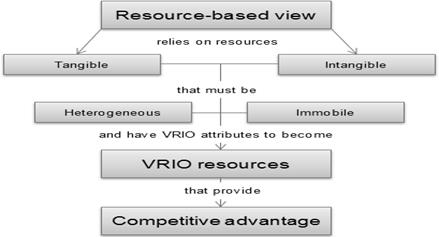
The competitive market’s sustainable advantage:
Developing a sustained competitive advantage is one of the main objectives of the resource-based strategy. When an entity owns valuable, rare, inimitable, non-substitutable (VRIN) resources, it is said to have possession of them. These tools enable companies to maintain their competitive posture and profitability over time despite constantly changing market conditions utilizing which they might remain.
The Benefits of Apply a Resource-Based Model
The resource-based approach offers several benefits that support the effectiveness of a company, among which are the following:
When companies concentrate on their internal resources, they can create plans that use their unique advantages, resulting in more focused and efficient corporate operations.
Emphasizing the development and protection of vital resources helps one foster creativity and continuous improvement, supporting long-term growth and market leadership.
Resilience: Businesses that use unique and immovable resources are better positioned to resist the demands of competition and market instability and ensure stability and resilience.
Companies that adequately manage their resources can give their consumers high-quality goods and services, raising customer happiness and loyalty and improving general performance.
Employing strategic management of internal resources and capabilities, the resource-based model presents a robust framework that can be applied to understand and raise a company’s performance. Suppose organizations prioritize resource heterogeneity, immobility, value production, and consistent competitive advantage. In that case, they can set themselves apart from their rivals, inspire creativity, and experience long-term success. This approach emphasizes leveraging one’s unique qualities to create value and maintain a competitive edge in the fast-paced, technologically enhanced, modern company environment.

Chapter 5: Stakeholder Based model
In the current corporate environment, marked by a great degree of connection and mobility, achieving and preserving organizational success calls for more than just market share and profitability alone. The stakeholder-based model offers a framework for company strategy. This approach considers the interests and effects of every participant interacting with or under the influence of a corporation. This paradigm has become increasingly important with the rise of sustainable business methods and corporate social responsibility. It underlines the need to balance numerous stakeholders’ expectations and demands to attain long-term success and resilience.
The Elements Comprising the Foundation of the Stakeholder-Based Model
The Stakeholder-Based Model is built on the premise that decision-making should include the opinions of a broad spectrum of stakeholders. These stakeholders include employees, consumers, vendors, investors, residents of nearby towns, and government departments. When businesses recognize the interdependence of different groups and consider this, they can create policies that satisfy the needs and interests of all members.
Effective management of such stakeholders depends on their active participation. To reach this, constant communication, advice, and teamwork are needed to acquire knowledge about their needs, expectations, and any consequences on the business. Engagement, trust, and good connections help build both necessary for adequately controlling risks and optimizing opportunities.
Juggling Conflict amongst Interests
Among the most critical problems the Stakeholder-Based Model raises is juggling conflicting interests. Organizations that want to succeed must be able to manage the sometimes contradictory needs of several stakeholder groups. For instance, whereas investors would be more focused on financial gains, workers could value job stability and fair pay more. This approach urges companies to develop a harmonic balance in line with their strategic goals, guaranteeing all stakeholders’ ethical treatment.
Extended Attention to Sustainability
The Stakeholder-Based Model is somewhat compatible with ideas within the sustainability framework. Businesses must examine the long-term effects their activities will have on many stakeholders if they are to create strategies supporting environmental stewardship, social responsibility, and economic viability. This long-term view helps companies become resilient and flexible enough to survive in constantly changing surroundings.
Benefits of applying a model grounded on stakeholders
Enhancements in credibility and reputation
Most of the time, companies that can effectively manage their connections with several stakeholders have enhanced their reputation and raised degrees of trust. This could all lead to enhanced consumer loyalty, improved staff morale, and more community support.
Risk Management: The Management
Finding and reducing such hazards requires prioritizing knowledge and settlement of issues expressed by stakeholders. When companies participate in proactive engagement, they may foresee challenges and create strategies to overcome them before their intensity increases.
Development and Originality
Engaging in events involving various stakeholder groups can inspire innovation by providing fresh ideas and viewpoints. Cooperative problem-solving can lead to developing goods, services, and procedures that better meet the stakeholders’ needs, promoting the development and enhancement of competitive advantage.
Following Legal Standards
Organizations that ensure their business operations match their stakeholders’ expectations raise their chances of following legal requirements and avoiding legal issues. This proactive approach can minimize the expenses and disruptions resulting from non-compliance.
Regarding corporate strategy, the stakeholder-based model offers an approach that surpasses the usual profit-driven methods. Giving the needs and expectations of every stakeholder first attention helps companies create not just environmentally friendly but also robust and morally sound business procedures. Apart from increasing long-term profitability, this approach enables the environment and society. It accomplishes this by aligning environmental and social goals with corporate objectives.
A Powerful Stakeholder Mapping Guide to Lead You Through Every Turn
Strategic management first involves mapping the stakeholders engaged in a project or company. All that is needed is to name all the leading players, understand their interests and influence, and decide on the best contact approach. This procedure helps you ensure that all points of view are considered and that chances and hazards are controlled sensibly. The following describes a general framework for mapping stakeholders:
Stakeholder Identification
The first stage should be compiling an exhaustive list of every possible participant. Stakeholders are people, groups, or companies impacted by the project’s result or those who can help shape it. Familiar stakeholders include competitors, staff, customers, vendors, investors, community members, legal authorities, and other players.
Different categories of stakeholders will help enable better management. Common categories include internal—such as management and staff—and external—such as consumers, suppliers, residents, and government agencies.
Analyzing stakeholders’ influence and impact will help one decide their relevance and create priorities. Prioritizing helps to ensure that resources go toward the most crucial stakeholders for the project’s success.
Perform a stakeholder analysis.
Analyze the different expectations and interests of every stakeholder regarding the project. This kind of study helps one ascertain the values and goals of every stakeholder.
Recall that every stakeholder has different control and power over the project. When assessing their influence and strength, one should consider several variables, such as their organizational position, capacity to mobilize resources, and possible positive or negative impact on the project.
Map Stakeholders
You must develop a power-interest matrix to show the several stakeholders graphically. This matrix helps stakeholders be split into four different groups based on their degree of interest and influence:
“High Power, High Interest”: Keep great control and actively participate in the procedure.
Stay content and give updates as needed. High Power, Low Interest:
Low power, high interest: Keeping educated and acting when it fits is crucial.
“Low Power, Low Interest:” Monitoring requires relatively little effort.
Creating Plans for Involvement in Activities
Develop communication plans tailored to every group of stakeholders, considering their degree of influence and interest. Consistent and thorough communication channels should be created for high-power and high-interest stakeholders. Giving groups less influence and regular information and ensuring they feel involved helps them stay interested.
One should have well-defined goals for involving stakeholders. These goals could include getting support, lessening resistance, or updating interested parties about developments and changes.
Involve the pertinent stakeholders using the best strategies. Examples of communication methods include meetings, emails, reports, seminars, polls, and social media updates. The approach should be suitable for the stakeholders’ type of involvement and preferences.
Start the Engagement Process and Track It
The communication techniques and engagement tools meant for the phase before this one should be put into use. Every team member should be aware of their obligations regarding the involvement of stakeholders and should maintain open and continuous communication.
Check the responses and input from interested parties regularly. This input helps you make any required changes to the engagement strategies, ensuring the effective management of stakeholders.
Monitoring One’s Engagement Process’s Effect
Measure the success of your attempts to involve stakeholders in reaching engagement goals utilizing indicators like stakeholder satisfaction, degrees of participation, and the attainment of engagement objectives.
Change to the Stakeholder Map
Regular evaluation and modification of the stakeholder map will help to guarantee its accuracy and relevance. As projects and organizational contexts grow, the influence and interests of stakeholders could change.
These assessments should guide adjustments in engagement techniques meant to accommodate extra stakeholders, changes in their impact, or changes in their interests. This method of constant improvement ensures that stakeholder management remains successful throughout the project duration.
Since the mapping of stakeholders is dynamic and continuous, one must pay constant attention to and make regular corrections. Businesses may enhance their strategic decision-making, lower risks, and build closer ties with those directly involved in their initiatives by deliberately identifying, evaluating, and interacting with the stakeholder process. This complete manual offers a disciplined approach to stakeholder mapping. This method guarantees that all pertinent points of view are duly considered and controlled all around.

Chapter 6: Internal Based model
Internal-based models provide a complete foundation for controlling company operations. These models prioritize internal dynamics, resources, and mechanisms that drive firm success. Companies can improve performance, innovation, and decision-making by prioritizing these internal components.
Internal-based models recognize that a company’s unique assets and competencies are essential to success. The Resource-Based approach (RBV) says a company’s competitive advantage is its tangible and intangible resources. This method matches this perspective. Intangible resources like information, expertise, and business culture contrast concrete resources like buildings and computers.
Knowledge management is critical in internal methods. The organization needs effective ways to acquire, share, and use knowledge. Standards and processes must promote a personal development and advancement perspective to achieve this goal. Effective knowledge management lets companies leverage employee experience to adapt to changing market conditions and ensure data flow.
The essential point is that internal-based models prioritize internal processes and procedures. These models use process mapping and analysis to identify inefficiencies and improvement opportunities. Lean and Six Sigma are frequently used to improve operations, efficiency, and quality. Optimizing internal procedures can boost company performance and customer happiness.
Internal approaches stress corporate culture and structure. A well-structured organization ensures coordination and cooperation through clear roles, functions, and communication channels. A favorable business culture encourages employee engagement, motivation, and alignment with company goals and values. Leaders shape and foster this culture by setting the conditions for performance and creativity.
Internally based-models structure strategic management and link firm goals to capabilities. A SWOT analysis—strengths, weaknesses, opportunities, and threats—can help with internal audits and evaluations. By knowing their internal environment, organizations can better build strategies that capitalize on their strengths and fix their faults.
Internal-based models help organizations understand and manage their internal dynamics. Resource, knowledge management, procedures, structure, and culture studies and recommendations from the models help achieve long-term sustainable performance. Companies that apply internal-based models in dynamic business environments will improve performance, innovation, and competitiveness.
Implementing the five Lean principles for excellence and efficiency.
Lean technique reduces organizational inefficiencies to increase customer value. Lean, originating from Toyota’s production methods, is widely used in many industries since it optimizes efficiency and streamlines procedures. The strategy has five pillars: value definition, value stream mapping, flow creation, pull production, and excellence ambition. Integrating these ideas creates a culture of high performance and improvement.
Value Assessment
Understanding the customer is crucial to lean technique. Value is the price a customer will pay for a product or service that meets their needs. This strategy focuses on understanding client needs through market research, consumer feedback, and rigorous study. Businesses can boost customer happiness and loyalty by prioritizing their fundamental values and using this knowledge to personalize products and services to customers’ needs.
Map Value Stream
Mapping the value stream might begin after the value is determined. Documenting the entire production process helps identify which processes create value and which do not. Value Stream Mapping (VSM) visualizes data and material flow in a process. Organizations can improve process efficiency by removing needless procedures, delays, and bottlenecks.
Create Flow
The third premise is fostering a flow condition to ensure industrial process continuity. Eliminating unnecessary steps and optimizing value-added operations improves workflow. To reduce variability and achieve consistency, reorganize the workstation, multitask, and follow work routines. Cellular manufacturing and Kanban systems efficiently transfer resources and information, reducing lead times and increasing productivity.
Establish Pull
The fourth principle, pull, emphasizes the need to produce precisely the correct number of things at the right time. This strategy optimizes resource use and inventory levels, unlike push production methods that use projections and ship products regardless of demand. Pull systems like JIT production are driven by customer demand, unlike other systems. A pull system requires close supplier collaboration and a manufacturing process that swiftly responds to consumer demand to reduce overproduction and inventory costs.
Pursuing Greatness
The fourth pillar of lean methodology, excellence, requires continuous improvement. Any good company will foster an environment that encourages inefficiency removal, process simplification, and high standards. PDCA (Plan-Do-Check-Act) and Kaizen (continuous improvement) cycles are frequently utilized to promote growth and innovation. Continuous expansion methods improve efficiency, quality, and customer happiness.
With its five principles, Lean methodology provides a complete framework for businesses to improve efficiency, waste, and customer value. Companies can develop a growth mindset and operational excellence by identifying value, mapping value streams, generating flow, implementing pull production, and pursuing perfection. A customer-centric approach is necessary for long-term success in a competitive industry, and Lean principles can help achieve this.

Chapter 7: Competing Values Framework (CVF) Model
Initially created by Robert E. Quinn and John Rohrbaugh in the early 1980s, the Competitive Values Framework (CVF) Model is a tool for understanding, diagnosing, and improving a company’s culture. Utilizing this paradigm, one may classify and balance conflicting values within an organization, affecting general performance, behavior, and decision-making.
Two essential qualities define the CVF Model. These aspects relate internally to exterior attention and flexibility against stability. The four fundamental organizational cultures—clans, adhocracy, market, and hierarchy—identified by the quadrant matrix generated by these aspects are those of the organization. Beliefs and actions particular to a culture help one define that culture.
1. The Clan Culture stresses the members’ internal adaptation.
Emphasizes consensus, communication, and teamwork and creates an environment like a family.
Highly appreciated are employee involvement, moral behavior, and professional development.
In clan societies, mentoring often forms the focal point of leadership since it promotes loyalty and tradition.
2. Adhocracy’s culture stresses flexibility and keeping an eye on the outside world. It is vibrant and enterprising and greatly stresses innovation, creativity, and measured risk-taking.
Visionary leaders ready to challenge the status quo will help drive technical development and progress.
3. The market culture stresses consistency and outside-world orientation. Results are the primary goal; competitiveness, success, and target attainment take the front stage.
Assertive and competitive leaders want to surpass their rivals and reach excellent performance standards.
Those who follow a “hierarchy culture” greatly emphasize internal stability and attention.
Highly prized are order, stability, and control; these are achieved by using set guidelines and policies.
Caution and a concentration on rules define leadership since they guarantee dependability and efficiency.
The CVF Model’s ability to identify and balance values contradicting one another helps to improve the effectiveness of corporate operations by so facilitating their reconciliation. Employing the identification of their dominant culture, companies can pinpoint areas where they might enhance their operations and link their values with strategic goals, thereby establishing a coherent and effective workplace.
The model’s adaptability allows one to apply it throughout a broad spectrum of businesses and sectors of different sizes. This gives managers, executives, and consultants a solid tool for solving challenging organizational problems, increasing performance, and propelling cultural change.
Though it has many advantages, using the CVF Model has specific challenges. Dealing with external pressures, controlling shareholder interests, and comprehending and balancing values contradicting one another constitute these difficulties. A successful implementation depends on a thorough awareness of the company’s culture, efficient communication, and strategic use of additional tools, as well as on communication itself.
Established by Cameron and Quinn, the Organizational Culture Assessment Instrument (OCAI) is regularly used to assess the CVF Model in corporate entities. To evaluate both the current culture and the one meant for the future, the OCAI polled staff members from all four CVF quadrants. This research offers an understanding of cultural areas needing development and strengths. This tool helps one to plan deliberately, manage change, and grow in leadership qualities.
Effective execution of the OCAI and CVF Model follows these:
• Establishing clear objectives, scope, and deadlines for cultural evaluation and ensuring every stakeholder is involved in the process constitute part of comprehensive planning.
• The second stage includes staff members compiling accurate cultural data and encouraging responsibility through surveys, feedback sessions, and focus groups.
• The third stage in tailored interventions is developing focused solutions depending on the OCAI results to close cultural gaps and match with strategic objectives.
Continuous monitoring routinely assesses and adjusts cultural projects to ensure they align with corporate goals and environmental changes.
The CVF Model generally presents a complex view of organizational performance. It helps companies find long-term success by pointing them to successful cultural practices, helping them to balance opposing beliefs, and negotiating the challenges of cultural change inside their company.

Chapter 8: Balance Scorecard Model
Drs. Robert Kaplan and David Norton introduced the Balanced Scorecard (BSC), which marked a dramatic change in how strategic management and performance monitoring were handled at the beginning of the 1990s. Unlike past methods mainly focused on financial results, the BSC offers a framework covering economic, customer, and internal business processes and learning and development angles. This all-encompassing strategy guarantees success over the long run and provides a more balanced viewpoint on the company’s performance, guiding strategic decisions.
From a Financial View
The financial perspective is crucial for assessing a company’s profitability and economic situation. The essential steps are increasing income, controlling expenses, profit margins, and the return on investment (ROI). Using these metrics, companies can assess the effectiveness of their plans in generating profits, guaranteeing the firm’s future survival and meeting its shareholders’ expectations.
Knowledge Gained from the Client
The Customer Perspective emphasizes consumer satisfaction, loyalty, and market share percentage. Among the notable measures are consumer loyalty, net promoter scores, market share, and customer satisfaction ratings. These measures are crucial. Giving the needs of consumers top importance will help provide a better customer experience, closer relationships, and higher income. This point of view emphasizes the need for customer-centric projects on the road to corporate success.
From the Standpoint of the Internal Company Procedures
This point of view emphasizes the efficiency and success of internal operations. The procedure consists of identifying and strengthening the most crucial procedures to increase the availability of goods and services. Standard metrics are operational expenses, quality indices, and process cycle times. Giving internal processes top attention produces results in operations, reduced costs, better quality, and more production.
Views of Development and Learning
The Learning and Growth Perspective stresses the need for invention, staff development, and ongoing progress. It is vital to include employee satisfaction and retention measures, the acceptance of new technologies, and performance in training and development initiatives. A company’s long-term success depends on its ability to remain flexible and innovative through expenditures in these spheres.
Aligning Based on Strategy
Using a four-perspective approach, the BSC helps match operational goals with strategic objectives. This alignment will enable every business element to cooperate to reach the same goals, generating a single effort. Bridging the long-term vision with short-term operations guarantees the logical execution of strategic initiatives.
The Continuous Quest of Knowledge and Excellence
Long-term success depends on having a culture that constantly stresses learning and development. The Learning and Growth approach of the Business Strategy Council (BSC) emphasizes the need for innovation, human capital growth, and organizational capacity improvement. Similarly, it stresses Metrics related to training, skill acquisition, and innovation rates to help pinpoint areas needing work and direct the evolution of following capacities. Emphasizing ongoing growth guarantees businesses will remain adaptable and robust in shifting market conditions.
Essential are Good Understanding and Communication Skills
The BSC guarantees that strategic goals are shared globally by acting as a facilitator. By converting strategic objectives into specific, quantifiable targets and measures, the strategy becomes concrete and understandable to management and employees. Using this clarity, responsibility, and ownership are developed among employees, guaranteeing alignment and focus on the company’s objectives. Regular review and update of the BSC’s indicators promotes ongoing strategic dialogues and helps to maintain the emphasis on relevant issues.
Ideas and Challenges to Overcome
Successful implementation of the BSC depends on extensive development, execution, and maintenance, which require a lot of work. Comprehensive coordination and planning are needed to match measurements with strategic goals, which involves a lot of time and financial expenditure. Furthermore, the BSC could get unduly complex if too many metrics are included. This complexity can dilute focus and complicate administration. Furthermore, the internal emphasis of the BSC could lead it to overlook external problems and the interests of stakeholders, therefore generating inappropriate strategies.
Tools for the Use
Many programs, including BSC Designer, ClearPoint Strategy, and QuickScore, can help streamline the application of BSC. Dashboards, strategy maps, and performance reviews, among other tools, help simplify the data collecting, reporting, and visualizing processes. They ease real-time performance tracking, boost accuracy, and lower the human labor needed.
Developed to offer a complete framework for strategic management and performance assessment, the Balanced Scorecard’s all-encompassing approach—which combines non-financial and financial elements—provides a whole picture of the company’s state. By ensuring their strategies complement their operational goals and pushing them to keep developing, the BSC helps businesses reach long-term success. Making strategic use of tools and maintaining focus on clear objectives can help one achieve effective BSC implementation, even if there are challenges to be addressed. Strategic alignment and performance will thus be better.

Chapter 9: Prioritization Techniques
Rising productivity and effective time management depend on the ability to prioritize assignments. Among the several approaches available, two of the most well-known and often used ones are the Eisenhower Matrix and the ABC Method. These techniques help people and companies assess the relevance and urgency of operations, guaranteeing efficient resource use and timely completion of objectives.
Uses of the ABC Method and Applications
The ABC Method is a simple and effective way to prioritize chores depending on their importance. The chores fall into three different categories:
With their significant influence, A-jobs are the most crucial and high-priority chores that must be completed quickly. Examples include fulfilling essential project deadlines, attending major meetings, or promptly answering customers’ urgent needs.
Unlike A-tasks, B-tasks are more critical yet call less urgent attention. Before tackling these other responsibilities, the A-chores ought to be completed. The chores and obligations include preparing for the following presentations, responding to emails that are not immediately urgent, and planning regular check-ins.
These positions are considered the lowest priority and most minor significance. If necessary, they can be canceled or postponed. Optional chores include file management, meeting attendance, and other minor administrative work.
The ABC Method helps one focus on the most crucial tasks. This approach guarantees that less essential tasks do not use unnecessary resources while the most critical ones are completed first.
Eisenhower’s Matrix
Another often-used approach for prioritizing is the Eisenhower Matrix, sometimes called the Urgent-Important Matrix. The four quadrants of tasks are based on their degree of urgency and priority:
Referred to as “Urgent and Important,” the tasks in the first quadrant that demand urgent attention are necessary for achieving important goals. These duties include crisis management, meeting deadlines, and handling emergencies.
The second quadrant, sometimes known as “Not Urgent but Important,” includes tasks necessary for long-term success but not immediately actionable. These include organizing, strategic thinking, personal development, and building interpersonal relationships.
Activities classified as “Urgent but Not Important,” or Quadrant III, call for quick attention but do not notably advance long-term objectives. Examples include little disruptions and pointless gatherings. These must be managed or assigned if we are to minimize their impact.
The fourth quadrant, sometimes referred to as “not urgent and not important,” includes chores that are neither urgent nor important and that routinely waste time, such as overusing social media or attending ineffective meetings. Both should be cut out entirely or minimally used.
Using the Eisenhower Matrix helps people and companies ensure they sufficiently manage present needs and commit time to essential activities supporting ongoing success.
Prioritizing Strategies and Their Application
Effective implementation of these prioritizing strategies depends on the following actions:
• List every project and assignment you have ongoing. List every item that must be done right away in detail.
• The ABC Method helps you classify chores based on their relevance into three categories: A, B, and C. Using the Eisenhower Matrix will also help you allocate tasks to the correct quadrant based on work urgency and priority.
• Review and correct as required. Regular evaluation and amendment of your job list will help reflect changing priorities. Make sure any additional chores are arranged suitably.
• Consider the most crucial chores. Give the initiatives falling under Quadrant I and A most of your effort and money. Try to give operations in Quadrant II more of your time to prevent any crises and ensure success over the long run.
• Low-priority tasks should be either minimized or eliminated. Minimally, eliminate chores falling under Quadrant IV and C. Tasks in Quadrant III should be assigned or simplified to lessen their impact on other, more crucial sectors.
The Eisenhower Matrix and the ABC Method are the most valuable instruments for practical task prioritizing and time management. Based on importance and urgency, task organization helps people and companies focus on the most critical activities, improving output and completing objectives. These strategies’ continuous acceptance and assessment can lead to better resource allocation, better decision-making, and higher production and success.

Chapter 10: Goal Based Model
The goal-based model is a basic idea for improving organizational effectiveness. It emphasizes the importance of well-defined objectives as the cornerstone of influential companies. Developed in the middle of the 20th century, this management theory stresses the integration of organizational behavior, performance management, and strategic planning to guarantee that all elements of a company align with its primary goals.
Principles and Values
The goal-based approach holds that a company’s capacity to meet the objectives it has set for itself determines its level of success. These objectives are often articulated as a mission statement with exact, numerical targets. These objectives form the foundation for decisions and provide direction and guidance for the distribution of resources. Businesses find it challenging to assess their performance or create and carry out sensible action plans without adequately stated goals.
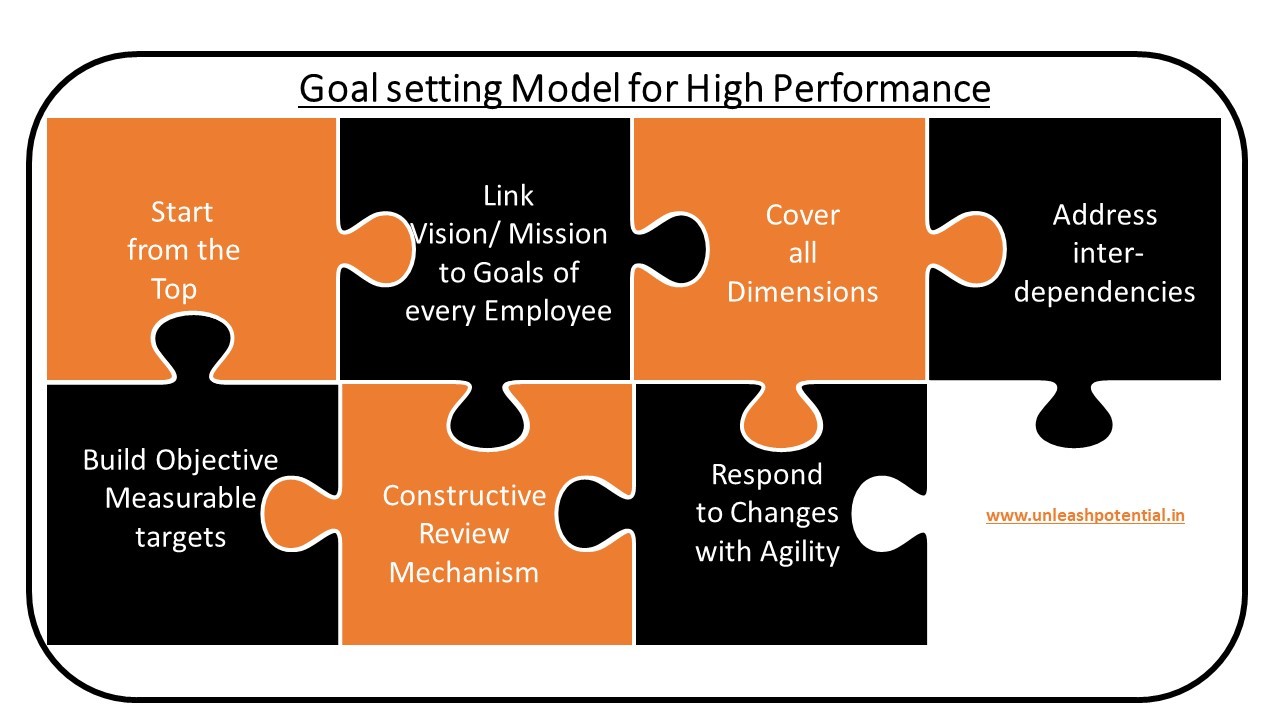
Advantages
One of the main benefits of the goal-based approach is that it gives clarity and concrete results great weight. Organizations with well-stated, verifiable goals are better positioned to accurately assess development, identify areas that call for improvement, and base decisions on facts. Furthermore, this clarity helps to increase responsibility, therefore facilitating the process of holding individuals and groups responsible for achieving specific objectives to which they have dedicated. Unlike activities, the model’s focus on results ensures that all the efforts align with the desired goals.
Strategically Planning
Strategic planning—the development of long-term goals and objectives—is one of the most crucial features of the goal-based paradigm. This process consists of carefully analyzing the internal and external surroundings, formulating strategic priorities, and creating a strategy to reach these goals. Acting as a road map, the strategic plan guides the decisions and activities the company will undertake going forward to ensure they complement the stated objectives.
Performance Administration
Apart from its indispensable nature, performance management is a method of continuous observation and assessment of the advancement toward goal attainment. Included in this process are the creation of performance standards, the tracking of actual performance, and the necessary application of remedial actions. Effective performance management ensures that the business keeps on course to meet goals and can adapt to meet and conquer obstacles.
Actions Inside Companies
Understanding and adequately controlling organizational behavior helps ensure that group and personal actions complement the business’s goals. Developing a culture that stresses responsibility, teamwork, and continuous improvement will help achieve this. Organizations can accomplish this by matching their staff’s behavior with the company’s objectives and developing a motivated and cohesive workforce dedicated to attaining desired goals.
Distribution of Assets
Effective resource allocation is essential to guaranteeing the successful application of the goal-based strategy. Organizations must deliberately distribute resources like time, money, and personnel to reach their goals. Focusing their efforts on highly impactful activities helps businesses maximize their efficiency and effectiveness.
The Methods for Making Choices
The goal-based paradigm guarantees that activities align with strategic objectives and the desired results, guiding the decision-making process. Decisions must be grounded in facts and line with the company’s goals so that every action supports the company’s general mission and vision.
The Process of Application
• To find possible opportunities and hazards, the environmental study should involve thorough studies inside and outside.
• Setting objectives: The environmental assessment findings should guide your well-defined, exact, quantifiable aims.
• Developing a strategy means breaking down goals into achievable plans with deadlines, resources, and key performance indicators (KPIs).
• Execute plans while ensuring cooperation and optimizing the resources at hand—that is, during the implementation stage.
• The monitoring and evaluation process should consist of regular performance evaluations and development tracking using qualitative and quantitative criteria.
• Adapting and improving plans and actions aligned with the evaluation results helps one manage deviations or fresh problems.
The Limited Possibilities
The goal-based approach has some shortcomings, even if it offers many advantages. A tendency to focus on specific objectives can lead to tunnel vision—ignoring more general organizational needs and external variables. Long-term success in a dynamic environment depends on creativity and flexibility, which this rigidity may impede. Moreover, focusing on measurable goals could help build a short-term viewpoint, which could lead to unethical behavior or result manipulation meant to produce the intended outcomes.
The goal-based model offers a systematic means of attaining organizational effectiveness by developing separate, measurable goals and aligning strategic objectives. Still, balancing ethical issues, inventiveness, and goal attainment against flexibility is crucial. If organizations accept and handle the restrictions of the goal-based model, they can properly apply it to propel ongoing success and raise general efficiency.

Chapter 11: Key Performance Indicator and Metrics
Any company’s success depends heavily on metrics and key performance indicators (KPIs). They are fundamental for the quest for operational excellence and the strategic planning process. These technologies enable companies to maintain a competitive advantage, track their development toward their goals, make decisions based on correct information, and monitor performance. Regular performance reviews are essential for sustainable success in a dynamic corporate environment.
Key performance indicators and metrics play a part
KPIs and measurements help companies to be guided toward their objectives. While key performance indicators (KPIs) are specific measures used to assess the development a firm is making toward its core business goals, metrics comprise a larger spectrum of data used to examine performance across many different sectors. They offer a comprehensive viewpoint on an organization’s performance and general situation. This point of view covers operational effectiveness, customer satisfaction, financial success, and other relevant factors.
Fiscal Performance Evaluation Metrics
Financial performance metrics are essential key performance indicators (KPIs) that provide an understanding of an organization’s economic viability. Among these crucial financial indicators are:
As used in business, revenue growth is the percentage increase in income over a given period. This expansion shows the company’s capacity to expand its market reach and attract more customers to its services. Rising income consistently suggests that marketing and sales strategies are effective.
The net profit margin is the percentage of income left over as profit after deducting all expenses. A more considerable net profit margin increases operational efficiency and financial health.
Return on investment (ROI) is an acronym used in this regard. This approach helps ascertain whether an investment is lucrative by comparing the net return to the initial investment cost. More ROI points to wise investments.
The measure of gross profit margin—that is, the percentage of income exceeding the cost of goods sold (COGS)—helps to highlight the profitability of the central business operation.
A company’s operating cash flow mirrors the cash generated by its primary operations. It presents an unambiguous picture of the company’s capacity to pay its obligations, invest in prospects, and continue operating.
Customer Metrics
• Customer metrics are crucial to assess a company’s ability to satisfy and exceed consumer expectations. Essential metrics for consumers consist of the following:
• Usually, through questionnaires, the Customer Satisfaction Score (CSAT) gauges how content consumers are with the goods or services provided by a company. A high CSAT indicates that the customer had a good experience.
• The Net Promoter Score (NPS) is determined by asking consumers how likely they are to refer the company to others, gauging their loyalty. A high Net Promoter Score (NPS) suggests strong client loyalty and a likelihood of positive word-of-mouth.
• The “customer retention rate” is the percentage of a firm’s customers that, over a certain period, still engage in business transactions with the company. Long-term retention rates that show high reflect customer happiness and loyalty.
• The Customer Lifetime Value (CLV) estimates the income a single customer account will generate over its interaction with the business. A higher CLV suggests that, over time, the customer relationship will be favorable.
• A corporation’s “churn rate” is the proportion of its consumers who stop using the given goods or services within a given period. A high turnover rate suggests most likely client displeasure.
Evaluations of Operational Effectiveness
Operational efficiency metrics are, therefore, essential key performance indicators (KPIs) to assess how effectively a company uses its resources to generate goods and services. Among the leading indicators are:
Satisfaction of Orders on Average One indicator of time that shows how long it takes to process and forward orders to clients is This suggests that, with shorter timeframes, supply chain performance and order processing efficiency are more effective.
The inventory turnover rate measures the frequency with which inventory is sold and replaced during a specified period. High turnover rates suggest rather good effectiveness in inventory control.
Employee Productivity: This indicator of worker efficiency measures the output produced by every employee.
The First Pass Yield (FPY) metric shows the percentage of correctly produced goods devoid of further effort required. Higher FPY shows that production processes and quality control are successful.
Combining measures for availability, performance, and quality performance, OEE—also known as overall equipment effectiveness—offers a whole picture of industrial equipment efficiency.
The Value of Essential Performance Measures and Metrics
For the following, metrics and key performance indicators are indispensable:
• Strategic decision-making is the process of offering data-driven insights for the aims of strategic planning and best resource allocation.
• Comparatively to industry norms and historical data, performance evaluation identifies areas of strength and areas in which the company might develop using this comparison.
• Investor confidence is the process of drawing in money by demonstrating a company’s profitability and future for development.
• Operational efficiency is the capacity to underline the success of business processes and direct initiatives to simplify operations and save expenses.
• Risk management involves identifying possible financial hazards and applying preventative measures to preserve long-term stability.
In the end, using these technologies helps companies improve their operations, make wise judgments, and realize sustainable development, improving the whole performance and success of the company.

Chapter 12: Benchmark Analysis
In today’s very competitive corporate environment, it is essential to constantly monitor the company’s performance and actively apply management strategies for development. Performance analysis and benchmarking are crucial tools for companies aiming at these goals. In this review, we will address the relevance of various approaches in assessing a company’s performance concerning the best practices and industry standards, thus exposing areas that demand improvement and increasing the company’s general effectiveness.
Making Use of Standards
Benchmarking is the process of contrasting the operational practices and key performance indicators (KPIs) of one company with those of other companies. Using this approach, one can achieve these three fundamental objectives: spotting areas needing development, implementing best practices, and raising general performance. Benchmarking takes three different forms:
• Comparatively benchmarking—that is, matching an organization’s performance to its direct rivals—helps one better grasp the organization’s place in the market.
• Process benchmarking assesses specific processes concerning companies known for their operational excellence.
• Strategic benchmarking is the process of matching corporate models and strategies with those of very successful companies to find areas requiring strategic development.
• These benchmarking tools help companies find operational inefficiencies, assess their performance among industry leaders, and decide which strategies to support expansion.
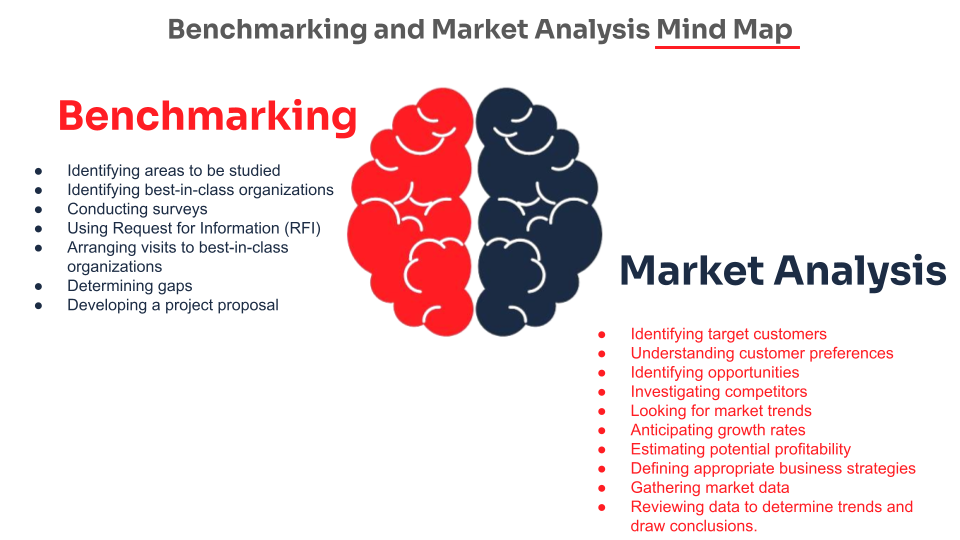
Examination of the Performability
Performance analysis is the rigorous study of performance data to identify trends, patterns, and places inside an organization that might need development. This approach frequently entails compiling and evaluating data on various performance criteria, including financial measures, customer satisfaction, operational effectiveness, and employee productivity. When organizations do performance analysis motivated by data, they may better identify their strengths and shortcomings, find the fundamental reasons for performance issues, and create focused change plans.
Two precious learning tools are performance analysis and benchmarking.
By enrolling in benchmarking and performance analysis courses, students develop the tools required to analyze performance data thoroughly, provide insights applicable to application, and follow best practices. They also learn to do competitive benchmarking to help them know their place in the market compared to others. By mastering these techniques, people can enhance the general performance of their business by spotting areas needing development and applying specific action plans.
Benefits for the Strategy
Applying performance analysis and benchmarking drastically changes how companies control performance. Apart from offering a clear image of a company’s performance against its competitors, these instruments provide a road map for expected future development. Closing performance gaps could produce a competitive advantage, operational efficiency, and customer happiness, among other possible results. By attending training courses covering these areas, participants get the tools required to cultivate a culture of excellence inside their companies and promote a growth mindset, enabling a significant performance rise.
Techniques for Comparative Examining Rivals
Comparing the performance, policies, and practices of a company with those of the rivals in the industry with the most significant degrees of performance is required in competitive benchmarking. This approach helps companies find performance gaps, learn about best practices, and start initiatives to improve their market situation. Among the most critical actions in competitive benchmarking are:
Selected metrics should fit strategic objectives and reflect several facets of organizational activities. Some examples are profit margins, return on investment (ROI), efficiency ratios, customer satisfaction indicators, and innovation metrics.
• Methods for gathering data: Surveys, industry reports, internal data, and competitive intelligence are among other tools for accurate data collection.
• Examining and interpreting the data: Gap analysis, SWOT analysis, and trend analysis will help one to compare performance data to industry standards.
• Establishing realistic goals, creating action plans, and routinely evaluating development help create new strategies that will improve performance and apply best practices.
Comparative Analysis of the Method
Process benchmarking aims to identify and implement the best strategies by comparing specific business procedures and those of some of the most successful companies in the sector. The actions involved are:
Find which procedures significantly influence performance and could be improved upon. This marks the initial phase of core process identification.
• Choose industry leaders renowned for their operational excellence to be benchmarking partners.
• Data Analysis Obtaining and Execution: Direct observation, surveys, performance evaluations, and comprehensive process data collecting tools should all be applied here.
• Using the Most Powerful Strategies: Successful strategies should be included in present procedures through pilot testing and complete adoption, thereby fostering a culture of ongoing development.
Performance Examination Motivated by Data
Data-driven performance analysis aims to use cutting-edge approaches to find opportunities for development in many spheres of the company. Necessary actions are listed here:
• Aligning vital performance indicators (KPIs) with strategic objectives helps one to offer unambiguous insights on performance.
• Integration of Data: Gathering information from several sources—including internal systems, customer comments, and outside sources—helps one create a complete picture of performance.
• Applying Advanced Analytics in Action: Descriptive, predictive, and prescriptive analytics will help you to identify trends and project results and create recommendations for action.
• Appreciating the insights gained and adjusting behavior. Identifying the trends and underlying reasons for performance issues, implementing changes, and assessing their effectiveness.
Modern companies that wish to preserve a competitive edge in their sector and raise their performance depend on performance analysis and benchmarking as essential instruments. The methodical application of these techniques helps companies make decisions based on correct information, streamline their operations, and realize steady development. Those who get training in these domains empower themselves with the tools required to foster a culture of excellence inside their businesses and propel ongoing development.
Curriculum
Data Driven Decision Making – WDP1 – Business Effectiveness
- Understanding Effectiveness
- Assessing Effectiveness
- Goal Based Model
- Resource Based model
- Stakeholder Based model
- Internal Based model
- Competing values framework (CVF) Model
- Balance Scorecard Model
- Prioritization Techniques
- Goal Based Model
- Key Performance Indicator and Metrics
- Benchmark Analysis
Distance Learning
Introduction
Welcome to Appleton Greene and thank you for enrolling on the Data Driven Decision Making corporate training program. You will be learning through our unique facilitation via distance-learning method, which will enable you to practically implement everything that you learn academically. The methods and materials used in your program have been designed and developed to ensure that you derive the maximum benefits and enjoyment possible. We hope that you find the program challenging and fun to do. However, if you have never been a distance-learner before, you may be experiencing some trepidation at the task before you. So we will get you started by giving you some basic information and guidance on how you can make the best use of the modules, how you should manage the materials and what you should be doing as you work through them. This guide is designed to point you in the right direction and help you to become an effective distance-learner. Take a few hours or so to study this guide and your guide to tutorial support for students, while making notes, before you start to study in earnest.
Study environment
You will need to locate a quiet and private place to study, preferably a room where you can easily be isolated from external disturbances or distractions. Make sure the room is well-lit and incorporates a relaxed, pleasant feel. If you can spoil yourself within your study environment, you will have much more of a chance to ensure that you are always in the right frame of mind when you do devote time to study. For example, a nice fire, the ability to play soft soothing background music, soft but effective lighting, perhaps a nice view if possible and a good size desk with a comfortable chair. Make sure that your family know when you are studying and understand your study rules. Your study environment is very important. The ideal situation, if at all possible, is to have a separate study, which can be devoted to you. If this is not possible then you will need to pay a lot more attention to developing and managing your study schedule, because it will affect other people as well as yourself. The better your study environment, the more productive you will be.
Study tools & rules
Try and make sure that your study tools are sufficient and in good working order. You will need to have access to a computer, scanner and printer, with access to the internet. You will need a very comfortable chair, which supports your lower back, and you will need a good filing system. It can be very frustrating if you are spending valuable study time trying to fix study tools that are unreliable, or unsuitable for the task. Make sure that your study tools are up to date. You will also need to consider some study rules. Some of these rules will apply to you and will be intended to help you to be more disciplined about when and how you study. This distance-learning guide will help you and after you have read it you can put some thought into what your study rules should be. You will also need to negotiate some study rules for your family, friends or anyone who lives with you. They too will need to be disciplined in order to ensure that they can support you while you study. It is important to ensure that your family and friends are an integral part of your study team. Having their support and encouragement can prove to be a crucial contribution to your successful completion of the program. Involve them in as much as you can.
Successful distance-learning
Distance-learners are freed from the necessity of attending regular classes or workshops, since they can study in their own way, at their own pace and for their own purposes. But unlike traditional internal training courses, it is the student’s responsibility, with a distance-learning program, to ensure that they manage their own study contribution. This requires strong self-discipline and self-motivation skills and there must be a clear will to succeed. Those students who are used to managing themselves, are good at managing others and who enjoy working in isolation, are more likely to be good distance-learners. It is also important to be aware of the main reasons why you are studying and of the main objectives that you are hoping to achieve as a result. You will need to remind yourself of these objectives at times when you need to motivate yourself. Never lose sight of your long-term goals and your short-term objectives. There is nobody available here to pamper you, or to look after you, or to spoon-feed you with information, so you will need to find ways to encourage and appreciate yourself while you are studying. Make sure that you chart your study progress, so that you can be sure of your achievements and re-evaluate your goals and objectives regularly.
Self-assessment
Appleton Greene training programs are in all cases post-graduate programs. Consequently, you should already have obtained a business-related degree and be an experienced learner. You should therefore already be aware of your study strengths and weaknesses. For example, which time of the day are you at your most productive? Are you a lark or an owl? What study methods do you respond to the most? Are you a consistent learner? How do you discipline yourself? How do you ensure that you enjoy yourself while studying? It is important to understand yourself as a learner and so some self-assessment early on will be necessary if you are to apply yourself correctly. Perform a SWOT analysis on yourself as a student. List your internal strengths and weaknesses as a student and your external opportunities and threats. This will help you later on when you are creating a study plan. You can then incorporate features within your study plan that can ensure that you are playing to your strengths, while compensating for your weaknesses. You can also ensure that you make the most of your opportunities, while avoiding the potential threats to your success.
Accepting responsibility as a student
Training programs invariably require a significant investment, both in terms of what they cost and in the time that you need to contribute to study and the responsibility for successful completion of training programs rests entirely with the student. This is never more apparent than when a student is learning via distance-learning. Accepting responsibility as a student is an important step towards ensuring that you can successfully complete your training program. It is easy to instantly blame other people or factors when things go wrong. But the fact of the matter is that if a failure is your failure, then you have the power to do something about it, it is entirely in your own hands. If it is always someone else’s failure, then you are powerless to do anything about it. All students study in entirely different ways, this is because we are all individuals and what is right for one student, is not necessarily right for another. In order to succeed, you will have to accept personal responsibility for finding a way to plan, implement and manage a personal study plan that works for you. If you do not succeed, you only have yourself to blame.
Planning
By far the most critical contribution to stress, is the feeling of not being in control. In the absence of planning we tend to be reactive and can stumble from pillar to post in the hope that things will turn out fine in the end. Invariably they don’t! In order to be in control, we need to have firm ideas about how and when we want to do things. We also need to consider as many possible eventualities as we can, so that we are prepared for them when they happen. Prescriptive Change, is far easier to manage and control, than Emergent Change. The same is true with distance-learning. It is much easier and much more enjoyable, if you feel that you are in control and that things are going to plan. Even when things do go wrong, you are prepared for them and can act accordingly without any unnecessary stress. It is important therefore that you do take time to plan your studies properly.
Management
Once you have developed a clear study plan, it is of equal importance to ensure that you manage the implementation of it. Most of us usually enjoy planning, but it is usually during implementation when things go wrong. Targets are not met and we do not understand why. Sometimes we do not even know if targets are being met. It is not enough for us to conclude that the study plan just failed. If it is failing, you will need to understand what you can do about it. Similarly if your study plan is succeeding, it is still important to understand why, so that you can improve upon your success. You therefore need to have guidelines for self-assessment so that you can be consistent with performance improvement throughout the program. If you manage things correctly, then your performance should constantly improve throughout the program.
Study objectives & tasks
The first place to start is developing your program objectives. These should feature your reasons for undertaking the training program in order of priority. Keep them succinct and to the point in order to avoid confusion. Do not just write the first things that come into your head because they are likely to be too similar to each other. Make a list of possible departmental headings, such as: Customer Service; E-business; Finance; Globalization; Human Resources; Technology; Legal; Management; Marketing and Production. Then brainstorm for ideas by listing as many things that you want to achieve under each heading and later re-arrange these things in order of priority. Finally, select the top item from each department heading and choose these as your program objectives. Try and restrict yourself to five because it will enable you to focus clearly. It is likely that the other things that you listed will be achieved if each of the top objectives are achieved. If this does not prove to be the case, then simply work through the process again.
Study forecast
As a guide, the Appleton Greene Data Driven Decision Making corporate training program should take 12-18 months to complete, depending upon your availability and current commitments. The reason why there is such a variance in time estimates is because every student is an individual, with differing productivity levels and different commitments. These differentiations are then exaggerated by the fact that this is a distance-learning program, which incorporates the practical integration of academic theory as an as a part of the training program. Consequently all of the project studies are real, which means that important decisions and compromises need to be made. You will want to get things right and will need to be patient with your expectations in order to ensure that they are. We would always recommend that you are prudent with your own task and time forecasts, but you still need to develop them and have a clear indication of what are realistic expectations in your case. With reference to your time planning: consider the time that you can realistically dedicate towards study with the program every week; calculate how long it should take you to complete the program, using the guidelines featured here; then break the program down into logical modules and allocate a suitable proportion of time to each of them, these will be your milestones; you can create a time plan by using a spreadsheet on your computer, or a personal organizer such as MS Outlook, you could also use a financial forecasting software; break your time forecasts down into manageable chunks of time, the more specific you can be, the more productive and accurate your time management will be; finally, use formulas where possible to do your time calculations for you, because this will help later on when your forecasts need to change in line with actual performance. With reference to your task planning: refer to your list of tasks that need to be undertaken in order to achieve your program objectives; with reference to your time plan, calculate when each task should be implemented; remember that you are not estimating when your objectives will be achieved, but when you will need to focus upon implementing the corresponding tasks; you also need to ensure that each task is implemented in conjunction with the associated training modules which are relevant; then break each single task down into a list of specific to do’s, say approximately ten to do’s for each task and enter these into your study plan; once again you could use MS Outlook to incorporate both your time and task planning and this could constitute your study plan; you could also use a project management software like MS Project. You should now have a clear and realistic forecast detailing when you can expect to be able to do something about undertaking the tasks to achieve your program objectives.
Performance management
It is one thing to develop your study forecast, it is quite another to monitor your progress. Ultimately it is less important whether you achieve your original study forecast and more important that you update it so that it constantly remains realistic in line with your performance. As you begin to work through the program, you will begin to have more of an idea about your own personal performance and productivity levels as a distance-learner. Once you have completed your first study module, you should re-evaluate your study forecast for both time and tasks, so that they reflect your actual performance level achieved. In order to achieve this you must first time yourself while training by using an alarm clock. Set the alarm for hourly intervals and make a note of how far you have come within that time. You can then make a note of your actual performance on your study plan and then compare your performance against your forecast. Then consider the reasons that have contributed towards your performance level, whether they are positive or negative and make a considered adjustment to your future forecasts as a result. Given time, you should start achieving your forecasts regularly.
With reference to time management: time yourself while you are studying and make a note of the actual time taken in your study plan; consider your successes with time-efficiency and the reasons for the success in each case and take this into consideration when reviewing future time planning; consider your failures with time-efficiency and the reasons for the failures in each case and take this into consideration when reviewing future time planning; re-evaluate your study forecast in relation to time planning for the remainder of your training program to ensure that you continue to be realistic about your time expectations. You need to be consistent with your time management, otherwise you will never complete your studies. This will either be because you are not contributing enough time to your studies, or you will become less efficient with the time that you do allocate to your studies. Remember, if you are not in control of your studies, they can just become yet another cause of stress for you.
With reference to your task management: time yourself while you are studying and make a note of the actual tasks that you have undertaken in your study plan; consider your successes with task-efficiency and the reasons for the success in each case; take this into consideration when reviewing future task planning; consider your failures with task-efficiency and the reasons for the failures in each case and take this into consideration when reviewing future task planning; re-evaluate your study forecast in relation to task planning for the remainder of your training program to ensure that you continue to be realistic about your task expectations. You need to be consistent with your task management, otherwise you will never know whether you are achieving your program objectives or not.
Keeping in touch
You will have access to qualified and experienced professors and tutors who are responsible for providing tutorial support for your particular training program. So don’t be shy about letting them know how you are getting on. We keep electronic records of all tutorial support emails so that professors and tutors can review previous correspondence before considering an individual response. It also means that there is a record of all communications between you and your professors and tutors and this helps to avoid any unnecessary duplication, misunderstanding, or misinterpretation. If you have a problem relating to the program, share it with them via email. It is likely that they have come across the same problem before and are usually able to make helpful suggestions and steer you in the right direction. To learn more about when and how to use tutorial support, please refer to the Tutorial Support section of this student information guide. This will help you to ensure that you are making the most of tutorial support that is available to you and will ultimately contribute towards your success and enjoyment with your training program.
Work colleagues and family
You should certainly discuss your program study progress with your colleagues, friends and your family. Appleton Greene training programs are very practical. They require you to seek information from other people, to plan, develop and implement processes with other people and to achieve feedback from other people in relation to viability and productivity. You will therefore have plenty of opportunities to test your ideas and enlist the views of others. People tend to be sympathetic towards distance-learners, so don’t bottle it all up in yourself. Get out there and share it! It is also likely that your family and colleagues are going to benefit from your labors with the program, so they are likely to be much more interested in being involved than you might think. Be bold about delegating work to those who might benefit themselves. This is a great way to achieve understanding and commitment from people who you may later rely upon for process implementation. Share your experiences with your friends and family.
Making it relevant
The key to successful learning is to make it relevant to your own individual circumstances. At all times you should be trying to make bridges between the content of the program and your own situation. Whether you achieve this through quiet reflection or through interactive discussion with your colleagues, client partners or your family, remember that it is the most important and rewarding aspect of translating your studies into real self-improvement. You should be clear about how you want the program to benefit you. This involves setting clear study objectives in relation to the content of the course in terms of understanding, concepts, completing research or reviewing activities and relating the content of the modules to your own situation. Your objectives may understandably change as you work through the program, in which case you should enter the revised objectives on your study plan so that you have a permanent reminder of what you are trying to achieve, when and why.
Distance-learning check-list
Prepare your study environment, your study tools and rules.
Undertake detailed self-assessment in terms of your ability as a learner.
Create a format for your study plan.
Consider your study objectives and tasks.
Create a study forecast.
Assess your study performance.
Re-evaluate your study forecast.
Be consistent when managing your study plan.
Use your Appleton Greene Certified Learning Provider (CLP) for tutorial support.
Make sure you keep in touch with those around you.

Tutorial Support
Programs
Appleton Greene uses standard and bespoke corporate training programs as vessels to transfer business process improvement knowledge into the heart of our clients’ organizations. Each individual program focuses upon the implementation of a specific business process, which enables clients to easily quantify their return on investment. There are hundreds of established Appleton Greene corporate training products now available to clients within customer services, e-business, finance, globalization, human resources, information technology, legal, management, marketing and production. It does not matter whether a client’s employees are located within one office, or an unlimited number of international offices, we can still bring them together to learn and implement specific business processes collectively. Our approach to global localization enables us to provide clients with a truly international service with that all important personal touch. Appleton Greene corporate training programs can be provided virtually or locally and they are all unique in that they individually focus upon a specific business function. They are implemented over a sustainable period of time and professional support is consistently provided by qualified learning providers and specialist consultants.
Support available
You will have a designated Certified Learning Provider (CLP) and an Accredited Consultant and we encourage you to communicate with them as much as possible. In all cases tutorial support is provided online because we can then keep a record of all communications to ensure that tutorial support remains consistent. You would also be forwarding your work to the tutorial support unit for evaluation and assessment. You will receive individual feedback on all of the work that you undertake on a one-to-one basis, together with specific recommendations for anything that may need to be changed in order to achieve a pass with merit or a pass with distinction and you then have as many opportunities as you may need to re-submit project studies until they meet with the required standard. Consequently the only reason that you should really fail (CLP) is if you do not do the work. It makes no difference to us whether a student takes 12 months or 18 months to complete the program, what matters is that in all cases the same quality standard will have been achieved.
Support Process
Please forward all of your future emails to the designated (CLP) Tutorial Support Unit email address that has been provided and please do not duplicate or copy your emails to other AGC email accounts as this will just cause unnecessary administration. Please note that emails are always answered as quickly as possible but you will need to allow a period of up to 20 business days for responses to general tutorial support emails during busy periods, because emails are answered strictly within the order in which they are received. You will also need to allow a period of up to 30 business days for the evaluation and assessment of project studies. This does not include weekends or public holidays. Please therefore kindly allow for this within your time planning. All communications are managed online via email because it enables tutorial service support managers to review other communications which have been received before responding and it ensures that there is a copy of all communications retained on file for future reference. All communications will be stored within your personal (CLP) study file here at Appleton Greene throughout your designated study period. If you need any assistance or clarification at any time, please do not hesitate to contact us by forwarding an email and remember that we are here to help. If you have any questions, please list and number your questions succinctly and you can then be sure of receiving specific answers to each and every query.
Time Management
It takes approximately 1 Year to complete the Data Driven Decision Making corporate training program, incorporating 12 x 6-hour monthly workshops. Each student will also need to contribute approximately 4 hours per week over 1 Year of their personal time. Students can study from home or work at their own pace and are responsible for managing their own study plan. There are no formal examinations and students are evaluated and assessed based upon their project study submissions, together with the quality of their internal analysis and supporting documents. They can contribute more time towards study when they have the time to do so and can contribute less time when they are busy. All students tend to be in full time employment while studying and the Data Driven Decision Making program is purposely designed to accommodate this, so there is plenty of flexibility in terms of time management. It makes no difference to us at Appleton Greene, whether individuals take 12-18 months to complete this program. What matters is that in all cases the same standard of quality will have been achieved with the standard and bespoke programs that have been developed.
Distance Learning Guide
The distance learning guide should be your first port of call when starting your training program. It will help you when you are planning how and when to study, how to create the right environment and how to establish the right frame of mind. If you can lay the foundations properly during the planning stage, then it will contribute to your enjoyment and productivity while training later. The guide helps to change your lifestyle in order to accommodate time for study and to cultivate good study habits. It helps you to chart your progress so that you can measure your performance and achieve your goals. It explains the tools that you will need for study and how to make them work. It also explains how to translate academic theory into practical reality. Spend some time now working through your distance learning guide and make sure that you have firm foundations in place so that you can make the most of your distance learning program. There is no requirement for you to attend training workshops or classes at Appleton Greene offices. The entire program is undertaken online, program course manuals and project studies are administered via the Appleton Greene web site and via email, so you are able to study at your own pace and in the comfort of your own home or office as long as you have a computer and access to the internet.
How To Study
The how to study guide provides students with a clear understanding of the Appleton Greene facilitation via distance learning training methods and enables students to obtain a clear overview of the training program content. It enables students to understand the step-by-step training methods used by Appleton Greene and how course manuals are integrated with project studies. It explains the research and development that is required and the need to provide evidence and references to support your statements. It also enables students to understand precisely what will be required of them in order to achieve a pass with merit and a pass with distinction for individual project studies and provides useful guidance on how to be innovative and creative when developing your Unique Program Proposition (UPP).
Tutorial Support
Tutorial support for the Appleton Greene Data Driven Decision Making corporate training program is provided online either through the Appleton Greene Client Support Portal (CSP), or via email. All tutorial support requests are facilitated by a designated Program Administration Manager (PAM). They are responsible for deciding which professor or tutor is the most appropriate option relating to the support required and then the tutorial support request is forwarded onto them. Once the professor or tutor has completed the tutorial support request and answered any questions that have been asked, this communication is then returned to the student via email by the designated Program Administration Manager (PAM). This enables all tutorial support, between students, professors and tutors, to be facilitated by the designated Program Administration Manager (PAM) efficiently and securely through the email account. You will therefore need to allow a period of up to 20 business days for responses to general support queries and up to 30 business days for the evaluation and assessment of project studies, because all tutorial support requests are answered strictly within the order in which they are received. This does not include weekends or public holidays. Consequently you need to put some thought into the management of your tutorial support procedure in order to ensure that your study plan is feasible and to obtain the maximum possible benefit from tutorial support during your period of study. Please retain copies of your tutorial support emails for future reference. Please ensure that ALL of your tutorial support emails are set out using the format as suggested within your guide to tutorial support. Your tutorial support emails need to be referenced clearly to the specific part of the course manual or project study which you are working on at any given time. You also need to list and number any questions that you would like to ask, up to a maximum of five questions within each tutorial support email. Remember the more specific you can be with your questions the more specific your answers will be too and this will help you to avoid any unnecessary misunderstanding, misinterpretation, or duplication. The guide to tutorial support is intended to help you to understand how and when to use support in order to ensure that you get the most out of your training program. Appleton Greene training programs are designed to enable you to do things for yourself. They provide you with a structure or a framework and we use tutorial support to facilitate students while they practically implement what they learn. In other words, we are enabling students to do things for themselves. The benefits of distance learning via facilitation are considerable and are much more sustainable in the long-term than traditional short-term knowledge sharing programs. Consequently you should learn how and when to use tutorial support so that you can maximize the benefits from your learning experience with Appleton Greene. This guide describes the purpose of each training function and how to use them and how to use tutorial support in relation to each aspect of the training program. It also provides useful tips and guidance with regard to best practice.
Tutorial Support Tips
Students are often unsure about how and when to use tutorial support with Appleton Greene. This Tip List will help you to understand more about how to achieve the most from using tutorial support. Refer to it regularly to ensure that you are continuing to use the service properly. Tutorial support is critical to the success of your training experience, but it is important to understand when and how to use it in order to maximize the benefit that you receive. It is no coincidence that those students who succeed are those that learn how to be positive, proactive and productive when using tutorial support.
Be positive and friendly with your tutorial support emails
Remember that if you forward an email to the tutorial support unit, you are dealing with real people. “Do unto others as you would expect others to do unto you”. If you are positive, complimentary and generally friendly in your emails, you will generate a similar response in return. This will be more enjoyable, productive and rewarding for you in the long-term.
Think about the impression that you want to create
Every time that you communicate, you create an impression, which can be either positive or negative, so put some thought into the impression that you want to create. Remember that copies of all tutorial support emails are stored electronically and tutors will always refer to prior correspondence before responding to any current emails. Over a period of time, a general opinion will be arrived at in relation to your character, attitude and ability. Try to manage your own frustrations, mood swings and temperament professionally, without involving the tutorial support team. Demonstrating frustration or a lack of patience is a weakness and will be interpreted as such. The good thing about communicating in writing, is that you will have the time to consider your content carefully, you can review it and proof-read it before sending your email to Appleton Greene and this should help you to communicate more professionally, consistently and to avoid any unnecessary knee-jerk reactions to individual situations as and when they may arise. Please also remember that the CLP Tutorial Support Unit will not just be responsible for evaluating and assessing the quality of your work, they will also be responsible for providing recommendations to other learning providers and to client contacts within the Appleton Greene global client network, so do be in control of your own emotions and try to create a good impression.
Remember that quality is preferred to quantity
Please remember that when you send an email to the tutorial support team, you are not using Twitter or Text Messaging. Try not to forward an email every time that you have a thought. This will not prove to be productive either for you or for the tutorial support team. Take time to prepare your communications properly, as if you were writing a professional letter to a business colleague and make a list of queries that you are likely to have and then incorporate them within one email, say once every month, so that the tutorial support team can understand more about context, application and your methodology for study. Get yourself into a consistent routine with your tutorial support requests and use the tutorial support template provided with ALL of your emails. The (CLP) Tutorial Support Unit will not spoon-feed you with information. They need to be able to evaluate and assess your tutorial support requests carefully and professionally.
Be specific about your questions in order to receive specific answers
Try not to write essays by thinking as you are writing tutorial support emails. The tutorial support unit can be unclear about what in fact you are asking, or what you are looking to achieve. Be specific about asking questions that you want answers to. Number your questions. You will then receive specific answers to each and every question. This is the main purpose of tutorial support via email.
Keep a record of your tutorial support emails
It is important that you keep a record of all tutorial support emails that are forwarded to you. You can then refer to them when necessary and it avoids any unnecessary duplication, misunderstanding, or misinterpretation.
Individual training workshops or telephone support
Please be advised that Appleton Greene does not provide separate or individual tutorial support meetings, workshops, or provide telephone support for individual students. Appleton Greene is an equal opportunities learning and service provider and we are therefore understandably bound to treat all students equally. We cannot therefore broker special financial or study arrangements with individual students regardless of the circumstances. All tutorial support is provided online and this enables Appleton Greene to keep a record of all communications between students, professors and tutors on file for future reference, in accordance with our quality management procedure and your terms and conditions of enrolment. All tutorial support is provided online via email because it enables us to have time to consider support content carefully, it ensures that you receive a considered and detailed response to your queries. You can number questions that you would like to ask, which relate to things that you do not understand or where clarification may be required. You can then be sure of receiving specific answers to each individual query. You will also then have a record of these communications and of all tutorial support, which has been provided to you. This makes tutorial support administration more productive by avoiding any unnecessary duplication, misunderstanding, or misinterpretation.
Tutorial Support Email Format
You should use this tutorial support format if you need to request clarification or assistance while studying with your training program. Please note that ALL of your tutorial support request emails should use the same format. You should therefore set up a standard email template, which you can then use as and when you need to. Emails that are forwarded to Appleton Greene, which do not use the following format, may be rejected and returned to you by the (CLP) Program Administration Manager. A detailed response will then be forwarded to you via email usually within 20 business days of receipt for general support queries and 30 business days for the evaluation and assessment of project studies. This does not include weekends or public holidays. Your tutorial support request, together with the corresponding TSU reply, will then be saved and stored within your electronic TSU file at Appleton Greene for future reference.
Subject line of your email
Please insert: Appleton Greene (CLP) Tutorial Support Request: (Your Full Name) (Date), within the subject line of your email.
Main body of your email
Please insert:
1. Appleton Greene Certified Learning Provider (CLP) Tutorial Support Request
2. Your Full Name
3. Date of TS request
4. Preferred email address
5. Backup email address
6. Course manual page name or number (reference)
7. Project study page name or number (reference)
Subject of enquiry
Please insert a maximum of 50 words (please be succinct)
Briefly outline the subject matter of your inquiry, or what your questions relate to.
Question 1
Maximum of 50 words (please be succinct)
Maximum of 50 words (please be succinct)
Question 3
Maximum of 50 words (please be succinct)
Question 4
Maximum of 50 words (please be succinct)
Question 5
Maximum of 50 words (please be succinct)
Please note that a maximum of 5 questions is permitted with each individual tutorial support request email.
Procedure
* List the questions that you want to ask first, then re-arrange them in order of priority. Make sure that you reference them, where necessary, to the course manuals or project studies.
* Make sure that you are specific about your questions and number them. Try to plan the content within your emails to make sure that it is relevant.
* Make sure that your tutorial support emails are set out correctly, using the Tutorial Support Email Format provided here.
* Save a copy of your email and incorporate the date sent after the subject title. Keep your tutorial support emails within the same file and in date order for easy reference.
* Allow up to 20 business days for a response to general tutorial support emails and up to 30 business days for the evaluation and assessment of project studies, because detailed individual responses will be made in all cases and tutorial support emails are answered strictly within the order in which they are received.
* Emails can and do get lost. So if you have not received a reply within the appropriate time, forward another copy or a reminder to the tutorial support unit to be sure that it has been received but do not forward reminders unless the appropriate time has elapsed.
* When you receive a reply, save it immediately featuring the date of receipt after the subject heading for easy reference. In most cases the tutorial support unit replies to your questions individually, so you will have a record of the questions that you asked as well as the answers offered. With project studies however, separate emails are usually forwarded by the tutorial support unit, so do keep a record of your own original emails as well.
* Remember to be positive and friendly in your emails. You are dealing with real people who will respond to the same things that you respond to.
* Try not to repeat questions that have already been asked in previous emails. If this happens the tutorial support unit will probably just refer you to the appropriate answers that have already been provided within previous emails.
* If you lose your tutorial support email records you can write to Appleton Greene to receive a copy of your tutorial support file, but a separate administration charge may be levied for this service.

How To Study
Your Certified Learning Provider (CLP) and Accredited Consultant can help you to plan a task list for getting started so that you can be clear about your direction and your priorities in relation to your training program. It is also a good way to introduce yourself to the tutorial support team.
Planning your study environment
Your study conditions are of great importance and will have a direct effect on how much you enjoy your training program. Consider how much space you will have, whether it is comfortable and private and whether you are likely to be disturbed. The study tools and facilities at your disposal are also important to the success of your distance-learning experience. Your tutorial support unit can help with useful tips and guidance, regardless of your starting position. It is important to get this right before you start working on your training program.
Planning your program objectives
It is important that you have a clear list of study objectives, in order of priority, before you start working on your training program. Your tutorial support unit can offer assistance here to ensure that your study objectives have been afforded due consideration and priority.
Planning how and when to study
Distance-learners are freed from the necessity of attending regular classes, since they can study in their own way, at their own pace and for their own purposes. This approach is designed to let you study efficiently away from the traditional classroom environment. It is important however, that you plan how and when to study, so that you are making the most of your natural attributes, strengths and opportunities. Your tutorial support unit can offer assistance and useful tips to ensure that you are playing to your strengths.
Planning your study tasks
You should have a clear understanding of the study tasks that you should be undertaking and the priority associated with each task. These tasks should also be integrated with your program objectives. The distance learning guide and the guide to tutorial support for students should help you here, but if you need any clarification or assistance, please contact your tutorial support unit.
Planning your time
You will need to allocate specific times during your calendar when you intend to study if you are to have a realistic chance of completing your program on time. You are responsible for planning and managing your own study time, so it is important that you are successful with this. Your tutorial support unit can help you with this if your time plan is not working.
Keeping in touch
Consistency is the key here. If you communicate too frequently in short bursts, or too infrequently with no pattern, then your management ability with your studies will be questioned, both by you and by your tutorial support unit. It is obvious when a student is in control and when one is not and this will depend how able you are at sticking with your study plan. Inconsistency invariably leads to in-completion.
Charting your progress
Your tutorial support team can help you to chart your own study progress. Refer to your distance learning guide for further details.
Making it work
To succeed, all that you will need to do is apply yourself to undertaking your training program and interpreting it correctly. Success or failure lies in your hands and your hands alone, so be sure that you have a strategy for making it work. Your Certified Learning Provider (CLP) and Accredited Consultant can guide you through the process of program planning, development and implementation.
Reading methods
Interpretation is often unique to the individual but it can be improved and even quantified by implementing consistent interpretation methods. Interpretation can be affected by outside interference such as family members, TV, or the Internet, or simply by other thoughts which are demanding priority in our minds. One thing that can improve our productivity is using recognized reading methods. This helps us to focus and to be more structured when reading information for reasons of importance, rather than relaxation.
Speed reading
When reading through course manuals for the first time, subconsciously set your reading speed to be just fast enough that you cannot dwell on individual words or tables. With practice, you should be able to read an A4 sheet of paper in one minute. You will not achieve much in the way of a detailed understanding, but your brain will retain a useful overview. This overview will be important later on and will enable you to keep individual issues in perspective with a more generic picture because speed reading appeals to the memory part of the brain. Do not worry about what you do or do not remember at this stage.
Content reading
Once you have speed read everything, you can then start work in earnest. You now need to read a particular section of your course manual thoroughly, by making detailed notes while you read. This process is called Content Reading and it will help to consolidate your understanding and interpretation of the information that has been provided.
Making structured notes on the course manuals
When you are content reading, you should be making detailed notes, which are both structured and informative. Make these notes in a MS Word document on your computer, because you can then amend and update these as and when you deem it to be necessary. List your notes under three headings: 1. Interpretation – 2. Questions – 3. Tasks. The purpose of the 1st section is to clarify your interpretation by writing it down. The purpose of the 2nd section is to list any questions that the issue raises for you. The purpose of the 3rd section is to list any tasks that you should undertake as a result. Anyone who has graduated with a business-related degree should already be familiar with this process.
Organizing structured notes separately
You should then transfer your notes to a separate study notebook, preferably one that enables easy referencing, such as a MS Word Document, a MS Excel Spreadsheet, a MS Access Database, or a personal organizer on your cell phone. Transferring your notes allows you to have the opportunity of cross-checking and verifying them, which assists considerably with understanding and interpretation. You will also find that the better you are at doing this, the more chance you will have of ensuring that you achieve your study objectives.
Question your understanding
Do challenge your understanding. Explain things to yourself in your own words by writing things down.
Clarifying your understanding
If you are at all unsure, forward an email to your tutorial support unit and they will help to clarify your understanding.
Question your interpretation
Do challenge your interpretation. Qualify your interpretation by writing it down.
Clarifying your interpretation
If you are at all unsure, forward an email to your tutorial support unit and they will help to clarify your interpretation.
Qualification Requirements
The student will need to successfully complete the project study and all of the exercises relating to the Data Driven Decision Making corporate training program, achieving a pass with merit or distinction in each case, in order to qualify as an Accredited Data Driven Decision Making Specialist (ADDDMS). All monthly workshops need to be tried and tested within your company. These project studies can be completed in your own time and at your own pace and in the comfort of your own home or office. There are no formal examinations, assessment is based upon the successful completion of the project studies. They are called project studies because, unlike case studies, these projects are not theoretical, they incorporate real program processes that need to be properly researched and developed. The project studies assist us in measuring your understanding and interpretation of the training program and enable us to assess qualification merits. All of the project studies are based entirely upon the content within the training program and they enable you to integrate what you have learnt into your corporate training practice.
Data Driven Decision Making – Grading Contribution
Project Study – Grading Contribution
Customer Service – 10%
E-business – 05%
Finance – 10%
Globalization – 10%
Human Resources – 10%
Information Technology – 10%
Legal – 05%
Management – 10%
Marketing – 10%
Production – 10%
Education – 05%
Logistics – 05%
TOTAL GRADING – 100%
Qualification grades
A mark of 90% = Pass with Distinction.
A mark of 75% = Pass with Merit.
A mark of less than 75% = Fail.
If you fail to achieve a mark of 75% with a project study, you will receive detailed feedback from the Certified Learning Provider (CLP) and/or Accredited Consultant, together with a list of tasks which you will need to complete, in order to ensure that your project study meets with the minimum quality standard that is required by Appleton Greene. You can then re-submit your project study for further evaluation and assessment. Indeed you can re-submit as many drafts of your project studies as you need to, until such a time as they eventually meet with the required standard by Appleton Greene, so you need not worry about this, it is all part of the learning process.
When marking project studies, Appleton Greene is looking for sufficient evidence of the following:
Pass with merit
A satisfactory level of program understanding
A satisfactory level of program interpretation
A satisfactory level of project study content presentation
A satisfactory level of Unique Program Proposition (UPP) quality
A satisfactory level of the practical integration of academic theory
Pass with distinction
An exceptional level of program understanding
An exceptional level of program interpretation
An exceptional level of project study content presentation
An exceptional level of Unique Program Proposition (UPP) quality
An exceptional level of the practical integration of academic theory
Preliminary Analysis
“Strategic Performance Measurement: Creating a Common Language to Drive Execution” by Strategy&:
This workshop discusses the importance of Strategic Performance Measurement (SPM) in ensuring that an organization’s strategic goals are clear and measurable. It highlights best practices for choosing the right metrics, overcoming common challenges, and aligning strategic goals with operational performance. SPM is essential for transparent communication and effective execution of strategies across all organizational levels.
If you would like to know more, (PwC)

“The Impact of Performance Measurement in Strategic Planning” by Emerald Insight:
This research paper explores how performance measurement influences the strategic planning process. It finds that performance measurement is crucial, particularly in large organizations and those operating in rapidly changing environments. The study underscores the need for performance metrics that align with strategic goals to enhance the effectiveness of the strategic planning process.
If you would like to know more, (Emerald Insight)

” From Talent Management to Talent Optimization” by ScienceDirect:
This workshop delves into the evolution of talent management into talent optimization. It emphasizes the strategic value of managing talent effectively, from identifying high-potential employees to developing skills and fostering an inclusive culture. The piece provides insights into how organizations can attract, develop, and retain the right talent to drive business success.
If you would like to know more, (PwC)

“Winning with Your Talent-Management Strategy” by McKinsey:
McKinsey’s article outlines three key drivers of a successful talent management strategy: rapid allocation of talent, HR’s involvement in employee experience, and a strategically minded HR team. These practices help organizations link talent management with overall business strategy, ensuring that the right people are in the right roles to achieve business objectives.
If you would like to know more, (PwC)

“15 Top Talent Management KPIs and Metrics to Track and Measure” by NetSuite:
This workshop provides a comprehensive list of key performance indicators (KPIs) crucial for effective talent management. It highlights turnover rate, retention rate, employee satisfaction, and performance metrics, all of which help organizations optimize their human capital management practices and drive organizational goals.
If you would like to know more, (NetSuite)
Course Manuals 1-12
Course Manual 1: Understanding Effectiveness
When researching the concepts of business efficiency and effectiveness, Peter Drucker’s famous quote often comes to mind: “Efficiency is doing things right; effectiveness is doing the right thing.” This highlights the distinction between making the best use of resources (efficiency) and creating value for customers (effectiveness). Leaders usually lean towards one of these approaches in their management style, but the ultimate aim is to achieve a balance between both.
Business Efficiency
Business efficiency is about optimizing the use of time, effort, and resources within your departments. It involves streamlining operations to reduce costs and maximize returns. Consider how your business produces its products or services and identify areas for improvement to boost profitability.
Food for Thought:
• Are multiple layers of approval slowing down your processes?
• Are you relying on outdated methods like spreadsheets and physical paperwork?
• Is your workspace larger than necessary?
• Could fewer employees accomplish the same tasks with better efficiency?
Inefficiencies can drain revenue by requiring excessive resources for output. By enhancing efficiency, you can achieve maximum results with minimal investment.
Business Effectiveness
Business effectiveness focuses on the quality of outcomes from resource investments. It’s not just about doing more with less; it’s about generating more revenue through improved outputs. Effectiveness means that your planning, processes, tools, and personnel are aligned with your quality KPIs.
Being effective involves employees working towards goals that drive the company’s growth strategy. Instead of just speeding up processes, the focus is on achieving KPIs that enhance revenue rather than merely cutting costs.
To Recap:
• Efficiency: Reducing costs and resource requirements to execute tasks.
• Effectiveness: Achieving strategic goals that align with the organization’s vision and drive revenue.
Increasing effectiveness often leads to enhanced efficiency. By keeping both goals in mind, you can identify areas to streamline processes, implement automation, and reduce redundancies.
Comparing the Two
It’s possible to be efficient without being effective, and vice versa. For instance, a sales rep making more calls but closing fewer deals is efficient but not effective. Conversely, focusing too much on moving one deal through the pipeline at a time can be effective but not efficient.
The ideal scenario is achieving both efficiency and effectiveness simultaneously. Organizations should strive to set and achieve the right goals to increase sales while optimizing resources to convert revenue into profit. Most companies excel in one area more than the other, but the ultimate objective is to balance both approaches effectively.
Root Cause Analysis

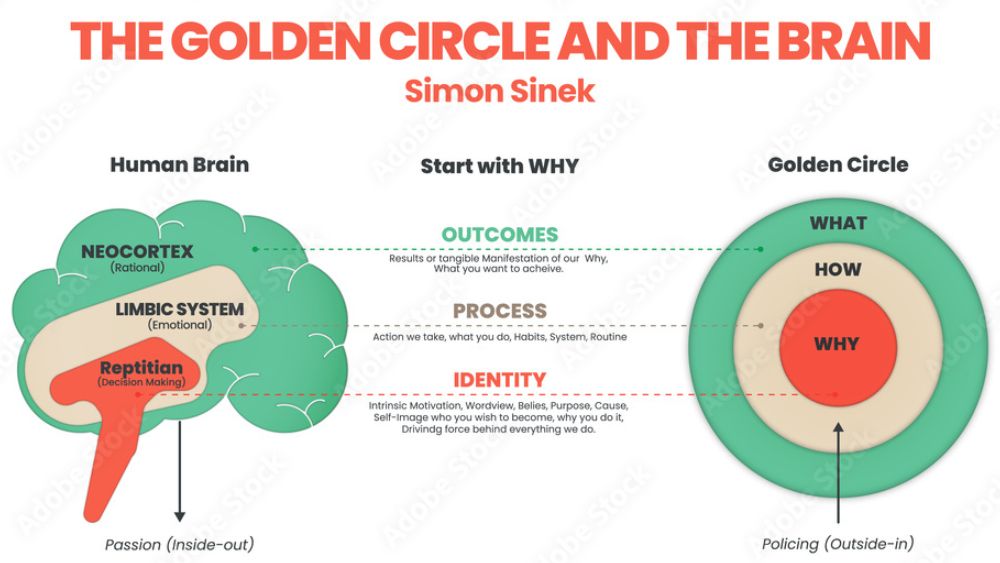
One significant benefit of RCA is that it helps organizations optimize their performance, reduce operational issues, and improve efficiency. By identifying the root causes of problems, teams can develop targeted solutions that address them, leading to more streamlined processes and better performance. This, in turn, leads to improved customer satisfaction, increased productivity, and a competitive advantage in the marketplace.
Moreover, RCA is an effective tool for fostering an organization’s continuous improvement culture. By encouraging teams to identify areas for enhancement proactively, RCA helps organizations identify inefficiencies, bottlenecks, and areas for improvement. This approach leads to more streamlined operations, reduced costs, and increased efficiency over the long term.
However, it is essential to note that RCA is not a one-size-fits-all solution and may not be sufficient in every situation. The problem’s complexity and scope should be considered when selecting the appropriate RCA methodology. For instance, the 5 Whys method may be more suitable for simple problems, while the Fishbone diagram may be more beneficial for complex issues.
The “5 WHYS” methodology
The “5 Whys” is a versatile and practical problem-solving technique that can be applied to various situations to identify the root cause of a problem. This straightforward method is highly effective when dealing with relatively simple or moderately complex problems, as it allows individuals and teams to quickly delve into the underlying issues without getting overwhelmed by excessive information or analysis. However, it is necessary to understand the key factors contributing to the technique’s success to achieve maximum effectiveness.
One of the most significant advantages of the “5 Whys” is its ability to address recurring organizational problems. When an organization faces the same problem repeatedly, and previous attempts at solving them have been unsuccessful, the “5 Whys” can provide a clear and straightforward approach to identifying the root cause of the problem. By asking “why” multiple times, team members can drill down into the deeper issues that have been overlooked or not adequately addressed, revealing the actual underlying cause of the problem. Once the root cause has been identified, targeted solutions can be developed to address it, preventing the problem from recurring and improving overall business effectiveness.
Another situation where the “5 Whys” is highly valuable is during process improvement initiatives. Streamlining processes and enhancing efficiency is a critical factor in optimizing organizational effectiveness. By applying the “5 Whys,” organizations can identify bottlenecks, inefficiencies, or areas prone to process errors. Focusing on the root causes of these issues, the “5 Whys” allows organizations to develop targeted interventions that lead to more efficient and effective processes, improving business effectiveness.

Illustration from Kanbanize
Technical problems can cause significant production delays in manufacturing or engineering settings, leading to revenue losses and customer dissatisfaction. The “5 Whys” is an excellent tool for troubleshooting technical problems. It helps technicians and engineers quickly identify the root cause, allowing them to implement corrective actions and minimize downtime. This technique is particularly effective in these situations because it encourages a systematic and logical approach to problem-solving, which is essential when dealing with technical issues.
In addition, the “5 Whys” can be an excellent tool for fostering an organization’s culture of continuous improvement. By consistently applying this technique to identify and address root causes, employees can become more adept at recognizing the underlying issues behind problems and develop a proactive mindset toward solving them. This can lead to increased employee engagement, a greater sense of ownership over problem-solving, and, ultimately, a more effective and successful organization.
However, it is crucial to recognize the limitations of the “5 Whys.” For highly complex problems or situations where multiple interrelated factors contribute to an issue, the “5 Whys” may not be sufficient to identify all root causes. More sophisticated problem-solving methodologies, such as the Ishikawa diagram, the A3 problem-solving approach, or systems thinking, may be more appropriate in these cases. In summary, the “5 Whys” is a powerful problem-solving technique that can provide organizations with valuable insights into the underlying issues behind problems. However, it is essential to recognize its limitations and consider more advanced methodologies for tackling highly complex or multifaceted issues.
How to conduct a Root Cause Analysis using the 5 Whys
Start with a specific problem: Identify the problem you are facing. It’s crucial to clearly define the issue, ensuring everyone on the team has a shared understanding of it. This step not only helps the team focus on the same problem but also fosters a sense of unity and collaboration, laying the groundwork for a productive analysis.
Ask the first ‘why’: Inquire why the problem occurred and jot down the answer below the specific situation you listed in the first step. This initial ‘why’ question serves as a guide, leading the team towards identifying the underlying factors that contributed to the issue. It’s a supportive tool in the problem-solving process.
Continue asking “why” for successive answers: Ask “why” for each response you receive and write down the answers in a logical sequence below the previous answers. This process helps you dive deeper into the problem, peeling back the layers and uncovering the root cause.
Reach a consensus on the root cause: It may take more or fewer than five “whys” to arrive at the root cause, but it is vital to ensure that the team agrees on each question and its corresponding answer. Once the team reaches a consensus on the root cause, document it.
Develop an action plan: Based on the identified root cause, work with the team to develop an action plan to address and resolve the issue. This plan should include specific steps, timelines, and responsibilities to ensure the problem is effectively addressed and prevented from recurring.
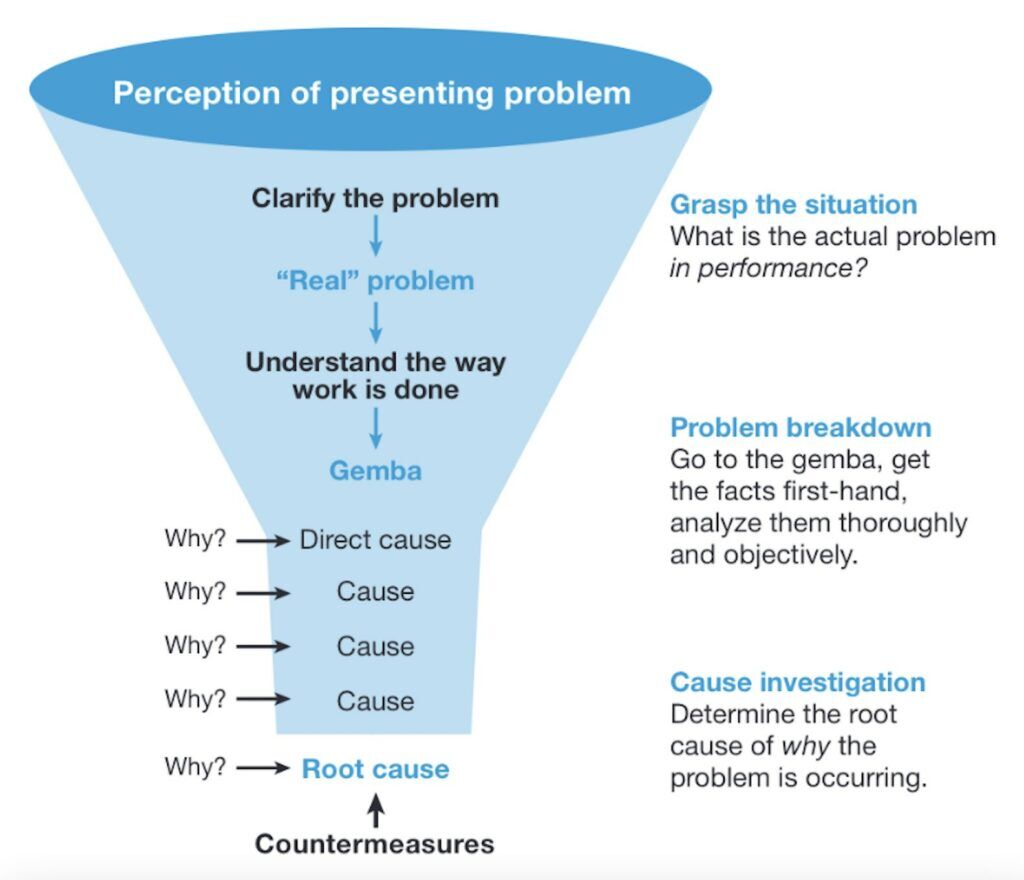
Illustration from Lean Enterprise Institute
When conducting a 5 Whys analysis, it is important to consider the following key elements to ensure that the process is accurate, effective, and focused on the root cause:
1. Differentiate between causes, symptoms, and causal factors: It is vital to identify and differentiate between the root causes of the problem, the symptoms or manifestations of the problem, and the factors that contribute to the problem. This helps in maintaining focus on the actual causes rather than addressing only the symptoms.
2. Work backward to validate each “why”: To ensure that the correct answer is assigned to each “why” question, it is helpful to work backward by connecting the answer to the identified problem using the phrase “and therefore.” This confirms that each response logically leads to the next question and the root cause.
3. Break down answers as much as possible: Providing detailed responses and breaking them down into smaller components can help identify multiple contributing factors and lead to a more comprehensive understanding of the problem.
4. Base answers on facts and data: It is important to ensure that all responses are based on information and data to maintain the accuracy and validity of the analysis. Avoid making assumptions or speculations, as these can lead to incorrect conclusions.
5. Focus on the process, not the people: When conducting a 5 Whys analysis, evaluating the methods and systems contributing to the problem is essential, rather than blaming individuals. This promotes a more constructive and collaborative environment, encouraging team members to work together to identify and address the root cause.
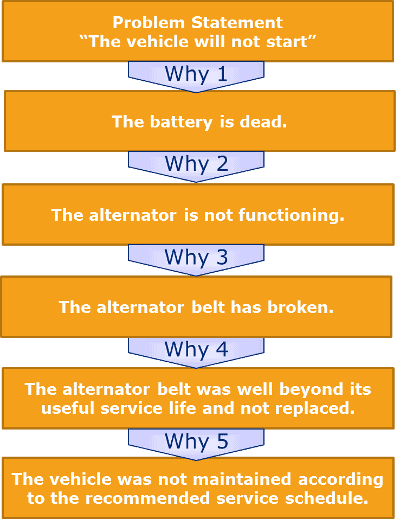
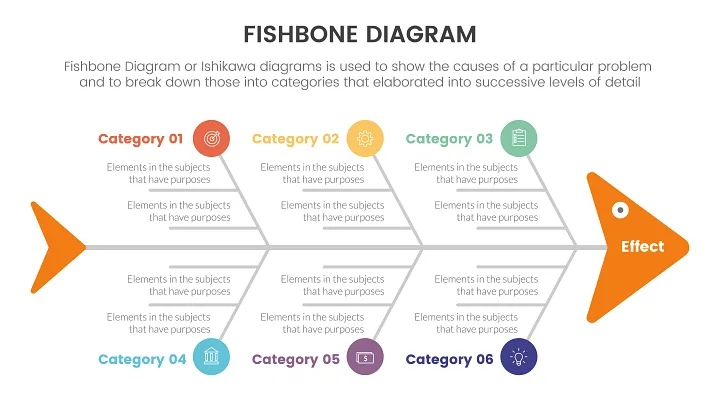
Businesses face numerous challenges, and developing effective strategies is essential. One of the most significant factors determining an organization’s success is its ability to efficiently use resources, such as time, money, and talent, to achieve its goals and objectives. This ability to utilize resources efficiently is called “business effectiveness.” Companies prioritizing effectiveness can optimize their processes, resulting in better products and services that meet or exceed customer expectations, leading to greater customer satisfaction and loyalty. This, in turn, leads to increased market share and improved business performance.
However, identifying the root cause of a problem can be challenging, especially when dealing with complex issues with multiple contributing factors. That’s where the Ishikawa diagram, the Fishbone diagram, or the Cause-and-Effect diagram comes in handy. The Ishikawa diagram is a visual tool used to identify and analyze the potential causes of a specific problem or issue. Developed by Dr. Kaoru Ishikawa in the 1960s, this diagram has become a popular problem-solving technique across various industries.
The Ishikawa diagram is most effective when applied to complex problems with multiple potential causes and interrelated factors. The diagram provides a visual representation of the problem’s root causes, which makes it easier for teams to brainstorm and discuss possible causes of a problem. This collaborative approach to problem-solving is vital in enabling teams to develop targeted solutions.
The Ishikawa diagram is versatile and can be used in various situations. For instance, when analyzing and improving manufacturing, logistics, or any other sector processes, the Ishikawa diagram can help identify the factors contributing to inefficiencies or bottlenecks. By visually mapping out the potential causes of process issues, teams can better understand how different elements interact and develop targeted solutions.
In industries where product quality is critical, such as the automotive or pharmaceutical sectors, the Ishikawa diagram can be instrumental in pinpointing the root causes of defects or variations in product quality. Organizations can implement corrective actions to ensure that products meet the desired quality standards by identifying the contributing factors.
When addressing customer complaints or low customer satisfaction scores, the Ishikawa diagram can help identify the factors contributing to these issues. Whether the causes are related to product design, customer service, or communication, understanding the underlying reasons for customer dissatisfaction enables organizations to address them effectively.
In complex projects with multiple stakeholders and interrelated tasks, the Ishikawa diagram can be a valuable tool for identifying the factors contributing to delays, cost overruns, or other project-related issues. By visualizing the potential causes, project managers can more effectively prioritize resources and develop risk mitigation strategies.
The Ishikawa diagram can help understand the contributing factors and their interrelationships when investigating incidents or accidents in the workplace or other environments. By identifying the root causes of incidents, organizations can develop targeted interventions to prevent future occurrences.
However, when applying the Ishikawa diagram, it is essential to consider the complexity and scope of the problem being addressed. Other problem-solving techniques might be more appropriate for simple problems with few potential causes. However, for complex issues with multiple contributing factors and interrelated elements, the Ishikawa diagram can be an invaluable tool for guiding teams through a structured analysis and enabling them to identify the most critical factors to address.
How to conduct a Fishbone analysis?
The Ishikawa diagram technique is widely used for root cause analysis and defect identification. One of the most common methods employed in the Ishikawa diagram is the 6Ms framework, which aids in determining the sources of variations in a process. It is often used in manufacturing to identify the root cause of a problem.
Manpower is one of the 6Ms in manufacturing. It refers to the physical or mental work of personnel. It encompasses employees’ knowledge, skills, and abilities, as well as their physical exertion. Method, another one of the 6Ms, refers to the production process used to manufacture products. This includes the sequence of steps, techniques, and tools used in production.
The third M in the 6Ms framework is Machine, which refers to all manufacturing equipment, tools, and facilities. These can include machinery, computers, software, and other technological resources. Material, the fourth M, refers to the raw materials used to produce a final product. This includes the selection, sourcing, and procurement of raw materials.
Medium (Environment), the fifth M, refers to the effect of unpredictable environmental factors on the production process. These factors can include temperature, humidity, weather, and other environmental conditions. The final M in the 6Ms framework is Measurement, encompassing the inspections and physical measurements performed during manufacturing. These include measurements of volume, temperature, and other physical attributes.
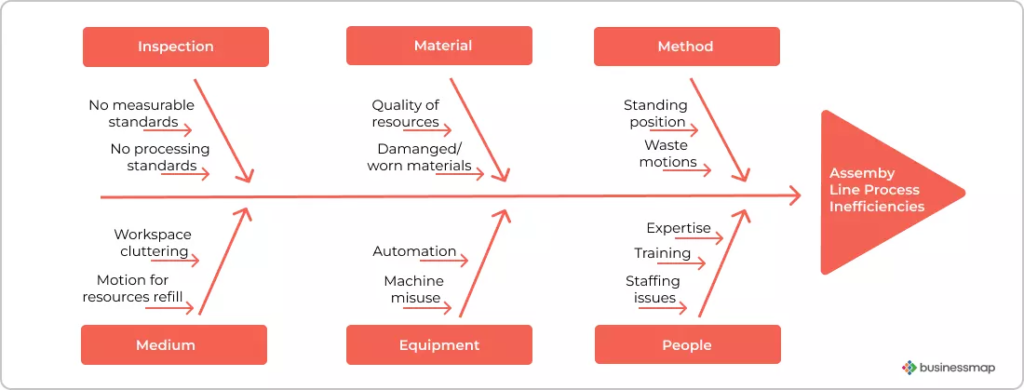
Creating a fishbone diagram offers a comprehensive method for identifying and understanding the root cause of a problem and hidden relationships between causes and effects. This technique can be instrumental in identifying process bottlenecks and areas for improvement and promoting a culture of continuous improvement within an organization. The following steps outline how to create a fishbone diagram.
Determine a problem statement: The responsible team members and stakeholders should identify and agree on a statement that describes the problem. This problem statement is drawn at the head of the diagram, which forms the “fishbone skeleton.” A horizontal arrow pointing to the head is drawn across the page, representing the “fish backbone.”
Brainstorm major causes: The problem’s causes are grouped into workforce, method, machine, material, medium, and measurement, using the 6Ms framework for root cause analysis. These categories are drawn as fish’s bones, with arrows pointing to the fish’s backbone.
Brainstorm all possible causes: The analysis team should use root cause analysis methods such as the 5Whys to find contributing causes to each major cause category. These are represented as branches of the fish’s bones on the diagram. The layered bones produced by identifying sub-causes show the causal relationships between different causes.
Analyze the diagram: The team analyzes all primary and contributing causes by asking “why” questions. If the root cause of the stated problem is still not identified, the focus shifts to areas of the diagram with fewer ideas, and the brainstorming continues. By doing so, the team can identify the underlying issues and potential solutions, promoting a culture of continuous improvement within the organization.
Creating a fishbone diagram requires a collaborative approach, a structured problem-solving methodology, and a good understanding of the problem’s context and scope. By applying the fishbone diagram, organizations can better understand the root causes of problems, enhance communication and collaboration among team members, and drive improvements in the process, leading to greater business effectiveness and success.

Case Study: Enhancing Business Effectiveness at General Electric (GE)
Company Background:
General Electric (GE) is a multinational conglomerate known for its diverse industrial products and services, ranging from aviation to healthcare. In the late 1990s, GE faced significant challenges related to process inefficiencies, high operational costs, and declining competitiveness in specific sectors. GE adopted Six Sigma methodologies to address these issues and enhance business effectiveness.
Problem Identification:
The main problems identified were process inefficiencies and high manufacturing and service delivery defect rates. These issues led to increased costs, customer dissatisfaction, and loss of market share.
Methodology:
GE implemented Root Cause Analysis (RCA) using the Six Sigma framework, which incorporates tools like the Fishbone (Ishikawa) diagram and the 5 Whys technique.
Step 1: Fishbone Diagram
Categories Identified:
• Manpower: Employee skills, training, and engagement.
• Methods: Operational processes and standard operating procedures.
• Machines: Equipment maintenance and reliability.
• Materials: Quality of raw materials and components.
• Environment: Workplace conditions and external factors.
• Measurement: Performance metrics and quality control systems.
Analysis:
The Fishbone diagram helped GE teams brainstorm potential causes of inefficiencies and defects under each category. For example, under “Methods,” the team identified that outdated processes and inconsistent procedures significantly contributed to inefficiencies and defects.
Step 2: 5 Whys Analysis
Specific Problem: High defect rates in manufacturing.
5 Whys Process:
• Why are there high defect rates? Because of inconsistent quality in the manufacturing process.
• Why is the quality inconsistent? Because the processes are not standardized.
• Why are the processes not standardized? Because there is no comprehensive process improvement plan.
• Why is there no comprehensive process improvement plan? Because of inadequate focus on continuous improvement.
• Why is there inadequate focus on continuous improvement? Because of a lack of structured methodologies and training.
Findings:
• The root cause identified was the lack of standardized processes and a comprehensive process improvement plan.
• Contributing factors included inadequate employee training and insufficient focus on continuous improvement.
Solutions Implemented:
Implementation of Six Sigma:
• GE adopted the Six Sigma methodology to improve processes and reduce defects systematically.
• Six Sigma training (Green Belt, Black Belt) was provided to employees to build internal expertise.
Process Standardization:
• Comprehensive standard operating procedures (SOPs) were developed and implemented across all manufacturing and service operations.
• Regular reviews and updates of these SOPs were instituted to ensure alignment with best practices.
Quality Assurance Enhancements:
• A robust quality assurance system was implemented, including rigorous testing and validation at each production stage.
• Cross-functional teams were created to oversee quality control and ensure adherence to standards.
Focus on Continuous Improvement:
• GE reinforced its commitment to continuous improvement through regular Kaizen events and Six Sigma projects.
• A structured process improvement plan was developed to identify and address inefficiencies systematically.
Results:
• Reduction in Defects: The implementation of Six Sigma and process standardization led to a significant reduction in defect rates, enhancing product quality and reliability.
• Improved Efficiency: The focus on process improvement and standardization improved operational efficiency, reducing cycle times and costs.
• Enhanced Employee Engagement: Six Sigma training and involvement in process improvement initiatives increased employee engagement and morale.
• Cost Savings and Competitiveness: Reduced defects and improved efficiency led to substantial cost savings, enhancing GE’s competitiveness in the market.
Conclusion:
By adopting Six Sigma and conducting thorough Root Cause Analysis using the Fishbone diagram and 5 Whys methodology, General Electric successfully identified and addressed the root causes of their operational inefficiencies and high defect rates. The targeted solutions not only improved their manufacturing processes but also reinforced a culture of continuous improvement, leading to enhanced business effectiveness and sustained success in the competitive industrial sector. This case study demonstrates the critical role of RCA and Six Sigma in diagnosing problems and driving effective, sustainable improvements in organizational performance.

Exercise: Understanding Effectiveness
customer complaints regarding delayed order deliveries. The customer support team is
overwhelmed, and the company’s reputation is at risk. Management decides to perform
a 5 Whys analysis to identify the root cause of the issue and implement a solution.”
staff, implement more efficient order processing systems, and develop better demand
forecasting methods to prevent future backlogs and ensure timely order deliveries.
Additional exercise: declining sales, low employee morale…
across various categories.
Course Manual 2: Assessing Effectiveness
Maintaining success and being competitive in today’s corporate environment entirely depends on the company’s evaluation of performance. In this context, the term “effectiveness” describes the degree to which an organization successfully achieves its purposes and objectives, makes most of its resources, and meets its stakeholders’ expectations. Companies use many evaluation models—which provide clear frameworks for measurement, analysis, and improvement—to assess their performance systematically. These models offer a comprehensive view of performance in many spheres, including but not just strategy, operations, human resources, and customer satisfaction.
The Balanced Scorecard (BSC), a popular assessment tool, was developed by Robert Kaplan and David Norton separately. The BSC offers a multidimensional perspective on performance assessment by including non-financial as well as financial variables in its assessment procedure. It looks at the firm’s performance from four angles—financial, customer, internal business processes, and learning and development. This all-encompassing approach guarantees that businesses do not give too much weight to financial success at the price of other important factors that support their success.
Furthermore, the Key Performance Indicators (KPIs) framework is widely used. Key performance indicators (KPIs) are specifically quantified assessments of an organization’s performance concerning its operational and strategic goals. If firms design and track pertinent key performance indicators (KPIs), they may monitor development, spot areas that want improvement, and base choices on facts. Effective key performance indicators (KPIs) relate to the company’s goals, are quantifiable and actionable, and provide unambiguous performance and effectiveness analysis.
Conversely, the Logic Model is another useful instrument for assessing programs and initiatives in their management. It also offers a graphic picture of the logical links among the resources, activities, results, effects, and influences. The Logic Model helps companies better grasp how their projects support the intended goals, therefore enabling improved planning, execution, and project evaluation. One achieves this by clearly outlining particular features.
Both Six Sigma and Total Quality Management (TQM) are valuable tools focused on quality assurance and ongoing improvement. Under Total Quality Management (TQM), initiatives aiming at a quality-centric culture are undertaken throughout the company. Conversely, Six Sigma uses data-driven approaches to remove errors and process variability. Both models stress the need to ensure consumers are happy and achieve operational excellence as important indicators of success.
These evaluation models provide businesses with significant structures that might be applied to assess and improve their performance. They enable methodical performance research, simplify the alignment of strategic objectives, and foster an always-improving culture. Using these models, businesses can develop a more acute awareness of their strengths and weaknesses, implement targeted corrective actions, and produce better results.
From a strategic perspective in the current competitive environment, assessing the efficiency of an organization using assessment models is therefore vital. Through these models, companies have uniform methods to track, evaluate, and improve performance, guaranteeing their capacity to achieve their goals competently and effectively. As businesses keep changing, embracing and enhancing these models will be essential to maintain long-term success and achieve excellence in all spheres of operation.
The Balanced Scorecard: A Comprehensive Framework for Organizational Performance Assessment
Developed by Robert Kaplan and David Norton, the Balanced Scorecard (BSC) is a strategic management tool that offers a method for performance assessment that considers several factors. Unlike conventional performance measuring systems, which primarily focus on financial metrics, the BSC considers financial and non-financial components, offering a more complete view of the company’s performance. This all-encompassing approach ensures that businesses will not give their financial performance too much weight at the expense of other crucial factors supporting their long-term survival.
Fundamentals of Development and Concepts
Robert Kaplan and David Norton developed the BSC at the start of the 1990s after noticing that conventional financial performance criteria could not fit their needs. Their case was that depending on economic indicators can lead to short-term thinking and overlook other factors necessary for sustained development. The Business Security Center (BSC) was created to fill in four critical points of view—financial, customer, internal business processes, and learning and development—that would help to overcome these shortcomings.
Four Points of View About the Balanced Scorecard
From a financial standpoint:
Since it shows the economic consequences of choices and actions carried out inside the company, the financial perspective remains a significant component of the BSC. This method mainly targets revenue growth, profitability, return on investment (ROI), and economic value added (EVA). Using financial data inclusion in its study, the Business Strategy Committee (BSC) guarantees that the company’s financial situation is tracked and matched with its strategic goals.
From a customer standpoint:
Acknowledging that long-term success depends on customer loyalty and satisfaction, the customer perspective emphasizes the need for customer satisfaction and retention. This viewpoint includes several metrics, including customer satisfaction scores, net promoter scores (NPS), market share, and customer retention rates. Businesses that focus on the needs and viewpoints of consumers will be able to understand better and respond to the market’s wants, therefore increasing customer value and the company’s growth.
From the standpoint of the internal company operations:
Internal business processes based on efficiency and effectiveness probe operations inside the company. They especially emphasize the primary actions that affect consumer happiness and the accomplishment of financial targets. From this vantage point, one may analyze KPIs, including process cycle times, quality measures, and production ratios. By optimizing their internal procedures, companies can provide improved operational efficiency, lower costs, and higher-quality products and services.
From the standpoint of learning and development:
The learning and development perspective emphasizes the ability of the company to grow, innovate, and learn. Another name for this point of view is innovation and growth. This helps one to see the importance of knowledge management, corporate culture, and staff development. From this perspective, some indicators that may be considered are staff turnover rate, hours spent on employee training, employee satisfaction ratings, and rate of invention. Organizations that foster a culture of constant improvement and development could be able to adapt to changing circumstances, maintain top talent, and create long-term growth.
Creating a practice Balanced Scorecard
The Balanced Scorecard (BSC) requires specific steps to be followed. First, companies need to clearly define their strategic objectives and then align those goals with the four perspectives. This alignment ensures that every aspect of the company contributes to achieving shared goals. In the next stage, suitable measures for each perspective need to be chosen to effectively assess progress.
Data collecting systems must be implemented after measurements are established to track performance. Regular reviews and updates of the BSC is essential to ensure that it keeps in line with the company’s constantly shifting strategies and external environment. Companies that iteratively monitor, review, and enhance their processes help to keep their trajectory and make ongoing progress.
Benefits of applying a balanced scorecard
The Balanced Scorecard (BSC) offers numerous advantages. It ensures that financial policies do not overshadow other crucial aspects of the company’s success, providing a fair assessment of its performance. With its multiple viewpoints, it establishes a framework for performance management and strategic planning. Adopting this comprehensive strategy ensures that the organization’s activities align with strategic goals, facilitates decision-making, and fosters a culture of continuous improvement.
Developed by Robert Kaplan and David Norton, the Balanced Scorecard is a remarkable tool for assessing and managing corporate performance. By integrating financial and non-financial factors from four perspectives—financial, customer, internal business processes, and learning and development—the BSC provides a well-rounded and comprehensive perspective on performance. By aligning strategic objectives with operational activities, it ultimately enhances overall effectiveness and sustainability, helping companies achieve long-term success.
Leveraging Key Performance Indicators (KPIs) for Organizational Success
Key Performance Indicators (KPIs) are vital tools used extensively in the corporate sector to measure and assess the performance of an entity concerning its operational and strategic goals. When companies define and track pertinent key performance indicators (KPIs), they can monitor development, pinpoint areas for improvement, and base decisions on statistics. Effective KPIs relate to the company’s goals, are quantifiable, and can be implemented. They also provide rather obvious performance and effectiveness analysis.
The Interpretive Value of Key Performance Indicators
Key performance indicators (KPIs) are quantifiable, specialized metrics reflecting essential success factors for a company. Apart from offering a focused approach to performance evaluation in connection with significant corporate goals, they enable companies to track their growth over time. Key performance indicators (KPIs) might be non-financial, like staff engagement and customer satisfaction, or financial, such as revenue growth and profit margins. Strategic priorities of the company, as well as the areas of performance most crucial for the success of the company, guide the selection of key performance indicators (KPIs).
Efficient Key Performance Indicator Formulation
Its effectiveness mostly depends on the KPIs’ design since it determines their degree. Companies should follow the following ideas to create key performance indicators (KPIs) that fairly show the performance of their company:
Compatibility with the strategic objectives:
The company’s strategic goals must be directly connected to key performance indicators (KPIs). This alignment guarantees that every statistic entered helps the company achieve its primary goals. For example, appropriate key performance indicators (KPIs) could be customer satisfaction scores, net promoter scores (NPS), and customer retention rates if a company’s objective is to raise the degree of satisfaction experienced by its consumers.
The measurable:
Quantifiable key performance indicators (KPIs) should offer objective, precise, time-scannable data to be watched over. Measuring anything implies that the performance can be assessed consistently and precisely. For example, a key performance indicator (KPI) such as “increase market share by 5%” is quantifiable; a more generic goal is “improve market presence.”
The practical:
Effective KPIs should provide data that can be used immediately. Managers and staff members should help improve performance by better understanding what actions must be taken. For instance, if a key performance indicator (KPI) shows a decline in customer satisfaction, this should inspire a review of the processes engaged in customer service and the acceptance of corrective actions.
Unambiguous and understandable:
All the stakeholders should readily understand key performance indicators (KPIs) inside the company. Clear key performance indicators (KPIs) let everyone know what is under observation and why they are significant. This clarity guarantees everyone strives for the same goals and helps persuade support from all firm levels.
KPIs – Tracking and Using:
Once essential performance indicators (KPIs) have been established, ongoing monitoring becomes imperative. Essential performance indicator tracking should be included in companies’ regular performance evaluation systems. To do this, data must be constantly collected, examined to identify trends and patterns, and subsequently shared with the pertinent stakeholders.
Making decisions motivated by data:
KPIs provide the honest basis from which confident decisions can be made. For instance, managers can examine the underlying causes—which might include problems with the staff or equipment—should a company’s key performance indicator (KPI) for production efficiency fall short. Subsequently, they can eventually act in corrections.
Listing Possible Areas for Improvement:
KPIs expose areas of the company where performance falls short of expectations. Frequent assessments of important performance indicators (KPIs) help companies pinpoint specific departments or processes that need attention and subsequently allocate funds to address these issues.
The significance of responsibility:
Key performance indicators (KPIs) inside the company help to promote responsibility. When performance criteria are precisely stated to employees, they are likelier to own their performance. This is so because they appreciate the obligations and help a company meet specific goals.
Key Performance Indicators examples:
• Key performance indicators (KPIs) for operations are revenue increase, profit margins, return on investment (ROI), and operating expenses.
• For consumers, key performance indicators (KPIs) are scores on customer satisfaction, net promoter scores (NPS), customer retention rates, and average response times.
• < UNK> Key operational performance indicators (KPIs) are production efficiency, supply chain dependability, cycle times, and defect rates.
• Key performance measures for staff members are productivity, employee satisfaction, attrition rates, and training hours.
Often referred to as KPIs, key performance indicators are helpful instruments that let companies assess and effectively control their present performance. If companies align strategic goals with key performance indicators (KPIs) and guarantee that they are measurable, actionable, and unambiguous, they can gain insightful analysis of their operations. Frequent monitoring and analysis of essential performance indicators (KPIs) helps to identify areas that should be developed, promotes data-informed decision-making, and assigns responsibility all around the company. Using key performance indicators (KPIs) effectively is essential if you wish to attain sustained success and ongoing progress in today’s competitive market.

Case Study: Leveraging Key Performance Indicators (KPIs) for Success at Amazon
Company Background:
Amazon, the global e-commerce giant, is renowned for its relentless focus on customer satisfaction, innovation, and operational efficiency. Founded in 1994 by Jeff Bezos, Amazon has grown from an online bookstore to a diversified conglomerate in e-commerce, cloud computing, digital streaming, and artificial intelligence. Key Performance Indicators (KPIs) have played a critical role in Amazon’s ability to scale rapidly while maintaining high-performance levels and customer satisfaction.
Problem Identification:
As Amazon expanded its product offerings and global reach, the company faced challenges in managing its complex supply chain, maintaining high customer satisfaction, and ensuring operational efficiency. The need for a robust system to monitor performance across various aspects of the business became increasingly critical.
Implementation of KPIs:
Amazon implemented a comprehensive KPIs framework to address these challenges, focusing on three primary areas: customer satisfaction, operational efficiency, and financial performance.
1. Customer Satisfaction KPIs:
Objective: Enhance customer experience to drive loyalty and retention.
KPIs Implemented:
• Net Promoter Score (NPS): Measures customer loyalty and likelihood to recommend Amazon to others.
• Customer Satisfaction Score (CSAT): Surveys customers post-purchase to gauge their satisfaction with the shopping experience.
• Average Response Time: Tracks the speed of customer service responses to inquiries and complaints.
• Delivery Time Accuracy: Monitors the percentage of orders delivered within the promised timeframe.
Impact:
Improved Customer Loyalty: By consistently tracking and analyzing NPS and CSAT scores, Amazon identified pain points in the customer journey and implemented improvements, resulting in higher customer retention rates.
Enhanced Customer Service: Monitoring average response times allowed Amazon to streamline its customer service processes, ensuring quicker and more effective resolution of customer issues.
Reliable Delivery: Focusing on the accuracy of delivery time helped Amazon optimize its logistics network, leading to more reliable and timely deliveries and making it a key differentiator in the e-commerce market.
2. Operational Efficiency KPIs:
Objective: Optimize supply chain and logistics to reduce costs and improve efficiency.
KPIs Implemented:
• Inventory Turnover Rate: Measures how often inventory is sold and replaced over a specific period.
• Order Fulfillment Time: Tracks the time from receiving an order to dispatching it.
• Warehouse Utilization: Monitors the efficiency of warehouse space usage.
• Supply Chain Cost: Assesses the total cost involved in moving products from suppliers to customers.
Impact:
Efficient Inventory Management: Amazon maintained optimal stock levels by monitoring inventory turnover, reducing holding costs, and minimizing stockouts.
Faster Order Fulfillment: Tracking order fulfillment time enabled Amazon to refine its warehousing and distribution processes, leading to faster delivery times.
Cost Savings: Analyzing supply chain costs allowed Amazon to identify inefficiencies and negotiate better terms with suppliers and logistics partners, resulting in significant cost savings.
3. Financial Performance KPIs:
• Objective: Maintain solid financial health and drive profitability.
• KPIs Implemented:
• Revenue Growth: Measures the increase in sales over specific periods.
• Gross Margin: Calculates the difference between sales and the cost of goods sold.
• Return on Investment (ROI): Assesses the profitability of investments.
• Operating Costs: Monitors the expenses involved in running the business.
Impact:
Sustained Revenue Growth: Amazon could continuously expand its market share and product offerings by focusing on revenue growth KPIs, driving sustained revenue increases.
Profitability Management: Monitoring gross margins and operating costs helped Amazon maintain profitability even as it scaled its operations globally.
Informed Investment Decisions: Tracking ROI ensured that Amazon invested strategically in technology, infrastructure, and new market entries, maximizing returns.
Conclusion:
Amazon’s strategic implementation of KPIs across customer satisfaction, operational efficiency, and financial performance areas has been instrumental in its success. By aligning KPIs with its core objectives, Amazon has made data-driven decisions, optimized its operations, and maintained a customer-centric approach. The continuous monitoring and analysis of these KPIs have enabled Amazon to identify improvement areas swiftly, drive innovation, and sustain its competitive edge in the rapidly evolving e-commerce landscape. This case study exemplifies how leveraging KPIs effectively can lead to significant organizational success and growth.

Exercise: Creating a Balanced Scorecard for a Hypothetical Business

Course Manual 3: Goal-Based Model
One of the most comprehensive models for evaluating and improving a company’s operational performance is the Goal-Based Model. This approach is based on the fundamental principle that an organization’s ability to create, pursue, and achieve specific and measurable goals unique to the company largely determines its success. The Goal-Based model provides a framework for assessing performance and promoting ongoing development, with a focus on clear goals that sets it apart from other paradigms.
The basic principles of the Goal-Based Model
Many fundamental principles underpin the goal-based approach, aligning operational execution with strategic vision. The model, even in its simplest form, underscores the importance of clarity, alignment, measurement, and adaptability.

The foundation of the goal-based approach consists of carefully defined, unambiguous objectives. By stating goals, companies can ensure that every member understands the targets and the criteria for success, therefore guiding the whole path of the company.
Alignment:
A goal-based strategy cannot function properly without alignment. This helps align the organization’s strategic objectives with those of individuals, teams, and departments. This alignment ensures that resources are effectively allocated to areas responsible for driving overall performance and improving coherence and coordination throughout the company.
Measurement:
Measurement is a critical aspect of the goal-based approach. Regularly tracking progress towards set objectives helps companies fairly assess performance. An essential step in this approach is identifying key performance indicators (KPIs) with quantitative data to track progress and results. Good measurement helps identify deviations from targets early on and encourages the implementation of corrective actions.
Adaptation:
The goal-based approach emphasizes adaptation in constantly changing conditions. Companies operate in ever-shifting environments affected by internal and external factors. It’s important to adapt goals and strategies in response to new data and changing conditions to maintain productivity over time. This flexibility helps companies maintain resilience and responsiveness by constantly adjusting their operations to current realities.
Benefits of the Applied Goal-Based Approach
The goal-based approach offers numerous benefits to enhance corporate efficiency. By providing a unique framework for goal development and execution, the model promotes operational effectiveness and strategic focus. It helps individuals and teams understand their responsibilities and expected results, fostering accountability. Additionally, the emphasis on measurement and adaptability promotes a culture of continuous improvement using feedback and data to adjust strategies and improve performance.
Ultimately, the goal-based approach for corporate success is a comprehensive framework that helps companies achieve their strategic objectives through defined goals, alignment, measurement, and adaptability. By systematically following defined goals, companies can enhance operational performance, foster continuous improvement, and ensure long-term success. Utilizing this model not only provides a systematic approach to achieving effectiveness but also fosters the development of a proactive and robust organizational culture, enabling successful navigation of the complexities of the modern corporate environment.
Management by Objectives (MBO): Aligning Individual Performance with Organizational Success
Peter Drucker first proposed management by objectives, also called MBO, a strategic management approach in the 1950s. It means setting specific, quantifiable targets for staff members and assessing their performance in line with their capacity to meet these aims. Using this approach helps one match individual performance with corporate objectives, therefore fostering a cooperative and goal-oriented work environment.
Basic principles MBO
How should one set goals?
The MBO approach is based on goal setting. Objectives are developed through a process that involves management and staff cooperation. This approach ensures that each objective is unique, realistic, and aligned with the company’s strategic goals. Often, these goals follow the SMART criteria—specific, measurable, achievable, relevant, and time-bound. The structure is designed to allow for performance evaluation.
Participation in Events and Activities
Using MBO, employees are encouraged to actively participate in goal setting. MBO allows employees to take part in determining their objectives, promoting accountability and ownership among them. This collaborative approach makes employees more likely to engage in activities they helped create, boosting their motivation and loyalty to the company.
Evaluating Success
The basis of this performance evaluation is whether the set objectives were achieved. Regular reviews and feedback sessions included in the Management by Objectives (MBO) approach enable managers and employees to discuss progress, identify challenges, and adjust goals as necessary. This continuous feedback loop helps individuals stay focused and adapt to ever-changing circumstances.
Consistency with Organizational Goals
One of the most significant benefits of MBO is its ability to align personal goals with the company’s overall objectives. This ensures that all activities are geared towards achieving the company’s strategic goals, promoting coherence and synergy among the various departments and teams involved.
MBO Processes: Methods
1. It’s important to clearly define your goals. Start by identifying the company’s goals, as they should be the top priority. These overarching goals will provide a clear direction for the entire company.
2. Once these general goals are developed, they should be further refined into specific goals for departments, teams, and individuals. This cascading approach ensures that everyone’s objectives are aligned with the company’s main goals.
3. Managers and employees need to collaborate to establish clear and measurable goals that are in line with both the department’s and the company’s objectives.
Planning
Following the established objectives, the staff will develop action plans outlining the specific actions required to achieve their targets. These plans will identify potential challenges and include deadlines and necessary tools.
Managers will supervise staff members, providing them with the necessary support and tools to execute their action plans effectively.
Observational comments and notes
Managers and staff members will regularly review progress to ensure that the set objectives are being met. This process will involve tracking key performance indicators (KPIs) and other metrics relevant to the objectives.
Regular feedback sessions will help address issues, assess progress, and make any necessary adjustments to action plans or objectives.
Performance Assessment
At the end of the evaluation period, managers will assess how well staff members have achieved their established objectives.
Helpful feedback will highlight areas of success and areas that need improvement.
Employees who meet or exceed their targets may be eligible for rewards or recognition, underscoring the importance of goal achievement.
Benefits of MBO
Motivating and engaging people more effectively
MBO promotes accountability and ownership by allowing staff members to actively participate in setting their own objectives. This involvement can lead to increased job satisfaction and motivation.
Improved overall performance
MBO ensures that all efforts support the organization’s strategic goals by aligning personal objectives with organizational targets. This alignment can result in improved overall performance and productivity.
Clarity of expectations
The MBO approach helps managers and staff members have clear expectations, reducing uncertainty and improving communication. This clarity helps staff members understand their responsibilities.
Continuous improvement
Regular monitoring and feedback, integral to the MBO approach, fosters an environment dedicated to ongoing development. Staff members are encouraged to review their performance, receive feedback, and make any necessary adjustments to achieve their goals.
Management by Objectives (MBO) is an effective management tool that aligns individual performance with corporate goals. It employs a structured process that includes goal setting, action planning, monitoring, and evaluation. MBO techniques help increase motivation, engagement, and overall performance by clearly articulating goals and encouraging employee involvement. This allows organizations to significantly enhance their ability to achieve strategic objectives and cultivate a culture of continuous improvement.

Case Study: Implementing Management by Objectives at Hewlett-Packard (HP)
Hewlett-Packard (HP), founded in 1939 by Bill Hewlett and Dave Packard, is a multinational information technology company that has played a significant role in developing and innovating electronic products and services. During the 1960s, HP was rapidly growing and faced the challenge of maintaining its innovative culture and operational efficiency. HP adopted the Management by Objectives (MBO) approach to address these challenges and align individual performance with its organizational goals.
Problem Identification:
HP was experiencing issues maintaining consistent performance standards across its expanding global operations. The company needed a structured approach to ensure that all employees, regardless of location or role, worked towards common organizational objectives. Improved employee communication and engagement were also needed to foster a culture of accountability and innovation.
Implementation of MBO:
HP’s implementation of MBO involved several key steps:
1. Goal Setting:
Organizational Goals:
• Increase market share in the technology sector.
• Enhance product innovation and development.
• Improve customer satisfaction and service quality.
Cascading Goals:
Organizational goals were broken down into specific objectives for departments, teams, and individual employees.
Each department sets its own goals that align with the broader organizational objectives.
Individual Goals:
Managers collaborated with employees to set individual SMART (Specific, Measurable, Achievable, Relevant, Time-bound) goals.
These goals were documented and communicated clearly to ensure understanding and commitment.
2. Action Planning:
Developing Action Plans:
Employees created detailed action plans outlining the steps needed to achieve their objectives.
Action plans included timelines, required resources, and potential challenges.
Manager Support
Managers provided the necessary support and resources to help employees execute their action plans effectively.
Regular check-ins were established to discuss progress and provide guidance.
3. Monitoring and Feedback:
Regular Monitoring:
Progress towards objectives was regularly monitored using key performance indicators (KPIs) and other relevant metrics.
Employees and managers met periodically to review progress and address any issues.
Feedback Sessions:
Constructive feedback sessions were held to discuss achievements and areas for improvement.
These sessions were an opportunity to adjust objectives and action plans as needed.
4. Performance Evaluation:
Assessing Achievement:
At the end of the evaluation period, managers assessed how employees had achieved their objectives.
Performance was measured against the predefined goals and KPIs.
Providing Feedback:
Managers provided detailed feedback, highlighting successes and areas for development.
Recognition and rewards were given to employees who met or exceeded their goals.
Results:
Enhanced Performance:
– The structured approach of MBO led to improved performance across the organization. Employees had clear targets and understood how their work contributed to the company’s success.
Increased Engagement and Motivation:
Involving employees in goal setting fostered a sense of ownership and accountability. This engagement led to higher motivation and job satisfaction.
Improved Communication:
Regular feedback sessions and clear communication of objectives improved transparency and trust between managers and employees.
Innovation and Growth:
Aligning individual goals with organizational objectives encouraged innovation and continuous improvement. HP saw an increase in product development and market share.
Customer Satisfaction:
We focus on specific customer-related objectives that lead to enhanced service quality and higher customer satisfaction scores.
Conclusion:
Implementing Management by Objectives at Hewlett-Packard aligned individual performance with the company’s strategic goals. By setting clear, measurable objectives and providing regular feedback, HP was able to improve performance, foster employee engagement, and drive innovation. This case study demonstrates how MBO can be an effective management technique to enhance organizational effectiveness and achieve long-term success.
Harnessing Performance Dashboards for Real-Time Business Insights and Strategic Decision-Making
The fast speed of the modern corporate environment defines it and makes companies seek efficient methods to assess their performance and development toward their objectives. Performance dashboards are basic visual tools that provide essential statistics, therefore offering real-time tracking and evaluation of several spheres of company activities. By aggregating data from many sources into a consistent and aesthetically pleasing format, dashboards help stakeholders make informed decisions promptly and efficiently.
The Objective and the Meaning
A performance dashboard is a graphical user interface providing a quick and straightforward approach to viewing relevant key performance indicators (KPIs) for a particular corporate activity or goal. These dashboards are meant to show real-time data visualization, helping managers and executives track performance, identify patterns, and base choices on the facts. Performance dashboards have as their primary goal the simplification of the monitoring of complex data sets, allowing users to acquire a quick awareness of the present situation of their operations.
Key Features of Performance Dashboards
Real-time data updating is one of the most essential benefits of performance dashboards since they allow data delivery. This function guarantees decision-makers access to the most recent data, allowing them to react fast to changes in the company’s surroundings.
The customizing procedure involves displaying the metrics most relevant to a given user or department on dashboards customizable to show them. Employing this customizing, it is guaranteed that every stakeholder can focus on the information most relevant to their work and responsibilities.
Data is shown on effective dashboards, which use a range of visual components, including graphs, charts, and gauges. These graphic tools help one understand difficult content and spot trends or outliers quickly.
Interaction: Many performance dashboards feature interactive components that let users explore the data further to conduct more in-depth investigations. This interaction helps users explore the metrics hiding under the surface and gain a more profound understanding.
Data from many sources—including customer relationship management (CRM) systems, financial databases, and other corporate applications—can be included in dashboards. This integration gives a complete picture of performance across the company’s several departments.
The Benefits of Applied Performance Dashboards
Dashboards for performance help managers and executives make more informed decisions since they offer reliable data updated in real-time. Better recognition of possibilities and issues quickly, made possible by the visual representation of data, leads to more effective problem-solving and strategic planning.
Enhanced responsibility: Is first importance? Dashboards help streamline goal and objective monitoring of development toward attainment. This openness promotes responsibility among people and teams since it helps them realize how their performance relates to the company’s objectives.
Dashboards consolidate all critical data in one place, saving time that would otherwise be spent gathering and evaluating information from several sources. This efficiency helps managers focus on tasks with more strategic importance.
Real-time tracking makes issue detection—that is, problem identification—possible for companies. Early identification of trends and anomalies helps companies handle possible issues before they become more serious, preventing disruptions and ensuring that operations go without disturbance.
When employees realize how their development supports the company’s main objectives, they become more motivated and engaged, among other things. Performance dashboards provide a clear link between personal efforts and the company’s success, encouraging a feeling of purpose and accomplishment.
Typical Performance Dashboards in Their Uses
Sales and marketing: Dashboards help track sales performance, marketing efforts’ success, lead generation, and customer interaction. This visibility can help sales and marketing teams improve their return on investment (ROI) and strategy and, therefore, guide their activities.
Financial dashboards: These help financial resource managers monitor many key indicators, including sales, expenses, profit margins, and others. They also help financial managers make strategic judgments about the budget and guarantee its condition.
Operations: Operational dashboards track manufacturing efficiency, supply chain performance, inventory levels, and quality control, among other criteria. Tracking this data is crucial for maintaining high standards and enhancing operational effectiveness simultaneously.
In human resources, dashboards track workforce diversity, employee performance, recruiting statistics, and training completion. With their help, human resource managers can maximize talent management and staff development plans.
Modern companies need performance dashboards since they provide real-time analysis of essential data and show progress toward goals. Dashboards, which combine data in a user-friendly visual form, help improve decision-making, accountability, efficiency, and involvement by consolidating data. As companies negotiate a complex and ever-changing corporate environment, using performance dashboards will remain vital for achieving and preserving operational excellence.

Group Exercise: Designing and Implementing a Performance Dashboard
• Form Small Groups: Divide participants into small groups of 4-5 members.
• Identify Objectives: Each group will brainstorm and define the primary objectives for the sales and marketing department at EcoShop. Examples might include increasing sales revenue, improving customer acquisition, and enhancing customer satisfaction.
• Sales Revenue: Monthly sales revenue, average order value
• Customer Acquisition: Number of new customers, customer acquisition cost
• Customer Satisfaction: Customer satisfaction score (CSAT), net promoter score (NPS)
• Sketch the Layout: Each group will sketch a layout for the performance dashboard. Consider which types of visualizations (charts, graphs, tables) will best represent each KPI.
• Placement of Elements: Decide on the placement of elements to ensure the dashboard is easy to read and interpret. High-priority metrics should be prominently displayed.
• Incorporate Interactivity: Think about interactive features that could enhance the dashboard, such as filters for different periods or the ability to drill down into detailed data.
• >Data Sources: Identify the data sources required for each KPI and discuss how data from these sources will be integrated into the dashboard. Examples include sales databases, customer feedback systems, and web analytics tools.
• Real-Time Updates: Plan how the dashboard will be updated in real time. Consider the frequency of data refreshes and any technical requirements needed to automate this process.

Course Manual 4: Resource Based model
Most people agree that the resource-based model is among the most well-known for offering insight into and enhancing organizational performance. Under this perspective, a company’s internal resources and competencies—rather than the external market conditions, are stressed as the most crucial determinant of corporate success. Companies can create value, differentiate themselves from rivals, use appropriate management and individual resources, and experience long-term success.
Core Values and Considerations of the Resource-Based Model
Under the resource-based model’s framework, several basic ideas underline the need for internal assets to enhance the company’s driving force. These ideas include a variety of resources, immobility, production of value, and preservation of a sustainable competitive edge.

Variability of resources
In the business context, resource heterogeneity refers to the idea that different companies have diverse competencies and resources. These resources can be physical or intangible, such as organizational culture, intellectual property, and the brand reputation of a company. Physical resources and financial capital are examples of tangible resources. The unique combination of these resources enables companies to carry out activities that competitors cannot easily replicate, thereby establishing their uniqueness.
Immobility of resources
Resource immobility refers to the concept that some valuable assets are difficult to transfer from one organization to another. These resources are hard for competitors to acquire or imitate because they are likely deeply embedded in the company’s practices, culture, or relationships. This immobility helps the company maintain its competitive edge over rivals over time.
Value growth
The resource-based paradigm emphasizes the importance of having resources that are not only valuable but also rare. Valuable resources are linked to the creation of products or services that people find desirable and are willing to pay for. The ability to create value using resources is a critical factor in achieving superior performance and market success.
Long-term competitive advantage
The primary objective of the resource-based paradigm is to achieve sustained competitive advantage. When an organization possesses valuable, rare, inimitable, non-substitutable (VRIN) resources, it is said to have a competitive advantage. These resources enable companies to sustain their competitiveness and profitability over the long term, even in constantly changing market conditions, thus maintaining their position.
Advantages and benefits of the resource-based model
The resource-based approach offers numerous benefits that help explain the effectiveness of business operations:
– Strategic resource focus: Companies that focus on their internal resources can develop strategies that leverage their unique strengths, resulting in more focused and successful business operations.
– Emphasis on the development and preservation of critical resources encourages creativity and continuous improvement, driving long-term growth and market leadership.
– Companies that utilize unique and immobile resources are better equipped to withstand competitive pressures and market volatility, ensuring stability and resilience.
– Effective resource management enables companies to deliver high-quality products and services, enhancing customer satisfaction and loyalty and contributing to greater success.
The resource-based approach provides a solid framework for understanding and enhancing a company’s effectiveness through the strategic management of its resources and capabilities. By prioritizing resource heterogeneity, immobility, value creation, and sustained competitive advantage, companies can differentiate themselves from their competitors, foster creativity, and achieve long-term success. This approach underscores the importance of leveraging unique assets in the fast-paced and ever-changing modern business environment to create value and maintain a competitive edge.

Case Study: Leveraging the Resource-Based Model at Southwest Airlines
Southwest Airlines, founded in 1967 by Herb Kelleher and Rollin King, is a major American airline known for its low-cost, no-frills business model. Southwest has successfully differentiated itself in the highly competitive airline industry through its unique internal resources and capabilities, achieving sustainable competitive advantage and consistent profitability.
Application of the Resource-Based Model at Southwest Airlines
1. Resource Heterogeneity:
Unique Resources and Capabilities:
Southwest Airlines possesses a distinct combination of resources and capabilities that differentiate it from competitors. These include:
Efficient Operations: Southwest operates a single aircraft model (Boeing 737), simplifying maintenance, training, and operations, leading to lower costs and higher efficiency.
Strong Corporate Culture: The company emphasizes employee satisfaction, teamwork, and customer service, creating a positive work environment and enhancing service quality.
Customer Loyalty: Through its commitment to low fares, frequent flights, and excellent customer service, Southwest has built a loyal customer base.
Innovative Cost Management: Southwest is known for its fuel hedging strategy, which has helped it manage fuel costs better than many competitors.
2. Resource Immobility:
Inimitable Resources:
Southwest’s resources are deeply integrated into its business model and culture, making them difficult for competitors to replicate. Key aspects include:
Employee Relations: Southwest’s success is based on the strong bond between management and employees, which is characterized by mutual respect and cooperation. This culture is difficult for competitors to imitate.
Operational Efficiency: Southwest’s single aircraft model strategy and point-to-point route structure significantly enhance operational efficiency and flexibility, setting It apart from traditional hub-and-spoke airlines.
Customer Experience: The combination of low fares, reliable service, and friendly staff creates a unique customer experience that is difficult for competitors to replicate.
3. Value Creation:
Creating Customer Value:
Southwest’s resources contribute significantly to creating value for its customers. For example:
Low Fares: Southwest’s efficient operations and cost management allow it to offer consistently low fares, attracting price-sensitive travelers.
On-Time Performance: The airline’s operational efficiency translates into reliable and punctual service, which customers highly value.
Positive Customer Service: Southwest’s friendly and helpful staff enhance the travel experience, fostering customer satisfaction and loyalty.
4. Sustainable Competitive Advantage:
Achieving and Maintaining Competitive Edge:
Southwest’s ability to leverage its VRIN (Valuable, Rare, Inimitable, Non-substitutable) resources has enabled it to achieve a sustainable competitive advantage:
Valuable: The combination of low fares, reliable service, and excellent customer experience provides significant value to customers.
Rare: The airline’s strong corporate culture and efficient operations are rare.
Inimitable: Competitors find replicating Southwest’s employee relations, operational strategies, and customer loyalty challenging.
Non-substitutable: The unique customer experience provided by Southwest’s business model is difficult to substitute with other airlines.
Results and Impact:
Financial Performance:
Southwest’s effective resource management has resulted in consistent profitability and financial stability, even during industry downturns.
Market Leadership:
Southwest has established itself as a leader in the low-cost carrier segment, with a strong market presence and high customer satisfaction ratings.
Customer Loyalty:
The airline’s focus on providing value and excellent service has resulted in a loyal customer base supporting its growth.
Conclusion:
Southwest Airlines’ success illustrates the effectiveness of the resource-based model. By strategically managing and leveraging its unique internal resources and capabilities, Southwest has created significant value, achieved a sustainable competitive advantage, and maintained its position as a leader in the airline industry. This case study underscores the importance of resource heterogeneity, immobility, value creation, and sustainable competitive advantage in achieving long-term business success.
SWOT Analysis: A Comprehensive Tool for Strategic Business Planning
Using a tool known as a SWOT analysis—a piece of strategic planning software—one can assess an organization’s internal strengths and shortcomings as well as the possibilities and hazards presented by the outside environment. Then, SWOT is the word used to describe a situation’s strengths, weaknesses, opportunities, and risks. For businesses using this architecture, knowing their current condition, creating plans, and basing decisions on correct data becomes simpler.
Internal Analysis: Organization Strengths and Weaknesses
The main objective of an internal study conducted in a company is to identify its strengths and weaknesses. By leveraging or improving specific elements under the company’s management, performance can be enhanced.
Strengths
Strengths in the context of an organization are internal traits and resources that improve the company’s capacity to achieve its goals. Some examples include:
– A strong brand reputation enables a brand to attract consumers and build brand loyalty through recognition and respect.
– Highly skilled and experienced employees can inspire efficiency and creativity in the workplace.
– Financial stability, achieved when the company has sufficient funds, enables it to weather economic downturns and invest in growth opportunities.
– Offering unique and high-quality products or services helps the company stand out.
– Optimizing operational processes can lead to reduced expenses and increased production.
Weaknesses
Weaknesses hinder an entity’s ability to achieve its objectives. Some examples include:
– A damaged brand can lower demand from investors and consumers.
– Skill shortages in the workforce can impede development and creativity by limiting the availability of essential talents.
– Financial constraints arise when the company has limited resources, making it challenging to seize new opportunities.
– Dependency on outdated technology can lead to inefficiency and lower competitive competency.
– Inefficient processes can result in higher expenses and lower output.
External Analysis: Opportunities and Threats
External analysis involves identifying opportunities and threats in the external environment that could impact the business. While these events are outside the company’s control, strategic planning allows the consideration of ways to leverage or mitigate their effects.
Opportunities
Opportunities are external events from which the company could benefit to reach its goals. Some examples are:
– Market expansion can lead to the development of new income sources and opportunities for the company’s growth.
– Emerging technologies could present new approaches to enhance operations, products, and services, driving technological advancements.
– Positive changes to regulations could create new markets or help reduce operating costs.
– Strategic alliances—cooperative efforts between several companies—enable the acquisition of resources, technologies, or new markets.
– Changing customer tastes and behavior could generate fresh demand for goods and services (‘Customer Trends’).
Threats
Threats are external factors that could negatively affect the company’s operations. Some examples include:
– Increased competition, either from new competitors or more established companies, may compromise market share and profitability.
– Economic recessions can have a detrimental impact on consumer spending and sales.
– Harmful regulation changes could increase expenses or limit market access.
– Technological disruption, caused by rapid changes in technology, could make existing goods or services obsolete.
– Supply chain issues, including disruptions leading to increased costs and delays in finished goods.
Strategic Planning Applied Using SWOT Analysis
After completing a SWOT analysis, a company can develop strategic plans to capitalize on opportunities, address weaknesses, maximize strengths, and mitigate risks. This approach involves:
– Focusing on areas where the company has a competitive advantage and leveraging these capabilities to maximize strengths, explore opportunities, and protect against threats.
– Developing strategies to address identified weaknesses through training, investment, or process improvement.
– Seizing opportunities from the external environment to grow the business and achieve strategic objectives. This could involve forming strategic alliances, entering new markets, or adopting new technologies.
– Mitigating potential threats by creating plans to safeguard against them, such as improving risk management strategies, diversifying product lines, and exploring new revenue sources.
Such comprehensive assessment and planning help companies enhance performance, achieve objectives, and effectively navigate the complexities of the business environment.
Harnessing the VRIO Framework for Sustained Competitive Advantage
Additionally, the VRIO framework is a strategic analysis tool that evaluates a company’s resources and capabilities to determine if they can sustain a competitive advantage over time. This framework assesses resources based on four critical criteria: value, rarity, imitability, and organization, helping companies identify resources that can provide a sustained competitive edge.
Value
Value is the first factor under the VRIO framework when thinking about criteria. One of the elements that define the value of a resource is its ability to help a business capture opportunities or mitigate threats in its environment. Valuable resources improve efficiency and effectiveness, ultimately enhancing the overall performance of the company. A resource that could be considered valuable is modern technology, which streamlines production processes or builds a strong brand reputation by attracting and retaining customers. Both are valuable resources. If something does not contribute to creating value, it cannot be considered a source of competitive advantage.
Rarity
In the industry, rarity defines the relative scarcity of a resource compared to others. A resource is rare if competitors do not possess it. Rare resources are unique, so having access to them helps you stand out from your competitors. Examples of things that could be unique include patented technologies or an exclusive partnership with a major supplier. If any of your competitors have access to a resource similar to yours, you will lose the ability to differentiate your company from the competition.
Imitability
The term “imitable” describes how easily competing companies can replicate a resource. Using a resource that is difficult or costly to replicate helps to establish a more sustainable competitive advantage. High imitability can be attributed to various factors, including unique historical conditions, causal ambiguity (where the link between the resource and the competitive advantage is not understood), and social complexity (which includes elements such as corporate culture and interpersonal interactions). That’s because competitors cannot sustain a competitive advantage if they can easily replicate resources.
Organization
Organizational readiness is the final criterion. This helps to determine whether the company is prepared to fully utilize resources that are rare, valuable, and difficult to replicate. Organizational capabilities, including efficient management systems, policies, and structures, are crucial for leveraging these resources. For example, a company with modern technology must also have highly skilled employees and effective processes to make good use of the technology. Even rare, valuable, and non-imitable resources cannot establish a sustained competitive advantage if they are not well organized.
The VRIO framework is a valuable tool that can help identify which resources and capabilities have the potential to provide a sustainable competitive advantage, thereby assessing a company’s capabilities and resources. Strategic management of resources by companies helps maintain a competitive edge in the market. Assessing elements such as value, rarity, imitability, and organization contributes to this. This comprehensive analysis ensures that companies are aware of their strengths and have the means to leverage those strengths to appropriately compete with other companies.
Core Competency Analysis: Unveiling Unique Strengths for Competitive Advantage
Core competency analysis is a strategic tool used to identify the unique competencies and resources that give a company a competitive advantage in the market. Gary Hamel and C.K. Prahalad first introduced this concept in their 1990 article “The Core Competence of the Corporation.” It emphasizes the importance of focusing on and utilizing distinctive qualities that set a company apart from its competitors.
Core competencies are the combined learning, skills, and technology that enable a company to provide value to its customers. They are the fundamental processes and knowledge that allow a business to constantly develop and excel. These competencies are crucial for long-term success and sustainable competitive advantage.
To be considered a core competency, a capability or resource must meet three basic requirements:
1. It should enable the company to serve a broad spectrum of markets and customer segments.
2. It must be difficult for competitors to replicate due to its uniqueness, which could include exclusive information, specialized skills, strong brand reputation, or intricate organizational structures.
3. It should significantly contribute to the overall value offered to the client, thereby enhancing customer loyalty and setting the company apart from its rivals.
The method for core competency analysis involves an internal examination to identify the company’s most crucial skills and strengths. This process focuses on areas where the business outperforms its rivals and provides tailored value to each customer. The assessment considers relevance, creativity, and contribution to consumer benefits to distinguish actual core competencies from other strong points.
Once the essential competencies are identified, the company should concentrate on utilizing and developing these areas of knowledge through investments in training, technology, and systems. It is important to continuously innovate and develop these competencies to ensure their relevance and uniqueness in the market.
By focusing on unique and significant talents that aid in enhancing the advantages offered to consumers, companies can create a continuous competitive edge and drive their long-term development and success. Businesses that build and develop their core competencies can thrive in a constantly changing corporate environment by innovating and adapting to market changes.

Exercise: Applying the Resource-Based Model to Assess Organizational Strengths

Course Manual 5: Stakeholder Based model
Achieving and sustaining organizational success in the current corporate context, marked by great connection and mobility, calls for much more than focusing on profitability and market share. Using the Stakeholder-Based Model, a business plan is developed considering the interests and effects of every participant interacting with or influenced by a company. This concept offers a whole solution for business strategy. Rising with the advent of corporate social responsibility and sustainable business practices, this model emphasizes the need to balance the needs and expectations of many different stakeholders to attain long-term success and resilience.
The Components Foundational to the Stakeholder-Based Model
The Stakeholder-Based Model proposes that decision-making should involve a wide range of stakeholders. These stakeholders can include employees, consumers, suppliers, investors, local communities, and government agencies, as well as individuals. By acknowledging the interconnectedness of these groups and accommodating their needs, companies can develop plans that meet everyone’s requirements and interests.
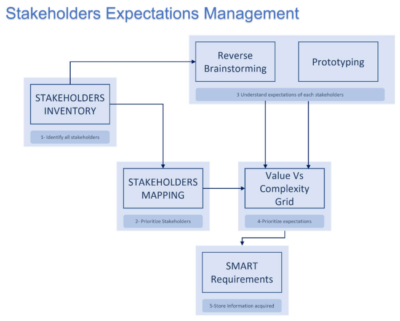
Effective management of stakeholders relies on their active participation. As part of this process, stakeholders must engage in constant communication, consultation, and cooperation to understand their needs, expectations, and any potential impact on the firm. Engagement helps build trust and healthy relationships, both of which are essential for effectively managing risks and seizing opportunities.
Maintaining Control of Stakeholder Interests
One of the fundamental challenges of the Stakeholder-Based Model is balancing conflicting interests. Successful businesses must manage the sometimes conflicting needs of multiple stakeholder groups. While employees may be concerned about job security and fair pay, investors may prioritize financial returns. The strategy ensures that all stakeholders are treated fairly and ethically, compelling companies to strike a harmonious balance aligned with their strategic goals.
Focus on Sustainability and Long-term Impact
The Stakeholder-Based Model aligns with principles within the sustainability framework. Businesses must consider the long-term effects of their activities on stakeholders to develop strategies supporting environmental stewardship, social responsibility, and economic viability. This long-term view helps businesses become resilient and adaptable enough to thrive in a constantly changing environment.
Advantages of Stakeholder-Centric Models
Enhancement of reputation and trust: Companies that manage their relationships with stakeholders well typically have better reputations and higher levels of trust. Improved customer loyalty, enhanced employee morale, and increased community support may follow.
Risk Management
Understanding and addressing stakeholders’ concerns helps identify and mitigate potential threats. Proactive engagement allows companies to anticipate challenges and devise strategies to mitigate them before they escalate.
Innovation and Experimentation
Engaging with various stakeholder groups can stimulate creativity by bringing in fresh ideas and perspectives. Collaborative problem-solving can result in the development of products, services, and processes that better meet stakeholders’ needs, promoting the advancement and enhancement of competitive advantage.
Alignment with Legal Requirements
Ensuring that company operations align with stakeholders’ expectations makes businesses more likely to comply with legal requirements and avoid legal issues. This proactive approach could help reduce the costs and complications associated with non-compliance.
Wider Perspective in Corporate Strategy
The Stakeholder-Based Model provides a comprehensive view beyond conventional profit-driven approaches. Prioritizing the needs and expectations of every stakeholder helps companies build not only environmentally friendly but also robust and ethically sound business operations. This approach not only increases the company’s long-term profitability but also benefits the environment and society by aligning general social and environmental objectives with company goals.
A Step-by-Step Guide to Effective Stakeholder Mapping
In the strategic management framework for every project or company, stakeholder mapping is a crucial initial step. This process involves identifying all significant players, understanding their interests and influence, and determining the best approach for interaction. This approach helps ensure that every viewpoint is considered and that any opportunities and risks are adequately managed. Stakeholder mapping typically includes the following steps in a general sense:
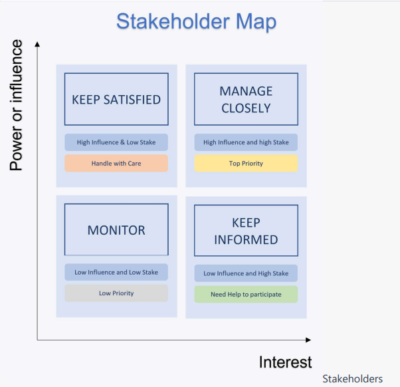
Identification of Stakeholders
Start by creating a thorough list of all potential stakeholders who could be impacted by or influence your project. Stakeholders can be individuals, groups, or companies such as employees, consumers, suppliers, investors, members of the community, authorities, and competitors.
Organize the stakeholders into different groups to manage them effectively, such as internal (managers and staff) and external (consumers, vendors, community members, and government agencies).
Prioritize stakeholders based on their influence and impact to concentrate resources on those most crucial for the project’s success.
Evaluate Stakeholders
Analyze the interests and expectations of each stakeholder related to the project to identify any issues. This will help you understand their values and objectives.
Consider each participant’s level of control and authority in the project, as well as their power and influence. Also, consider their position within the organization, their ability to allocate resources, and their potential to affect the project result positively or negatively.
Utilize a power-interest matrix to visually map stakeholders into four different groups based on their level of interest and influence:
“High Power, High Interest”: Maintain control and active participation.
“High Power, Low Interest”: Keep informed and involve when necessary.
“Low Power, High Interest”: Monitor closely and provide minimal information.
“Low Power, Low Interest”: Keep informed as necessary.
Planning for Engagement
Develop communication plans tailored to each group of stakeholders, considering their level of influence and interest. For high-power and high-interest stakeholders, establish thorough and consistent communication channels, while providing less influential groups with regular updates and opportunities for involvement to maintain their interest.
Establish engagement objectives by clearly defining specific goals for stakeholders’ participation, such as gaining their support, reducing resistance, or keeping them informed about project developments and changes.
Select appropriate approaches and strategies for engaging stakeholders based on their level of involvement and preferences, such as meetings, emails, reports, seminars, surveys, and social media updates.
Initiate Engagement and Monitor It
Implement communication strategies and engagement tools, ensuring that all team members understand their roles in interacting with stakeholders and that clear and straightforward communication is maintained.
Regularly monitor stakeholders’ responses and input to gauge any changes in their views, interests, or level of influence, and make necessary adjustments to the engagement tactics based on the feedback received.
Track the effectiveness of engagement by evaluating indicators, including stakeholder satisfaction, level of involvement, and achievement of engagement goals.
Adapting the Stakeholder Map
Regularly review and update the stakeholder map to reflect changes in stakeholders’ influence and interests, ensuring that the stakeholder management remains effective throughout the project’s duration.
Constantly improve engagement plans based on reviews to accommodate new stakeholders or changes in their influence or interests.
Stakeholder mapping is a dynamic and ongoing process that requires continuous attention and refinement to enhance strategic decision-making, mitigate risks, and foster relationships with those involved in the projects. This step-by-step guide offers a systematic approach to stakeholder mapping, ensuring that all relevant perspectives are considered and appropriately managed.
How to create a stakeholder map
Follow these steps to develop a stakeholder map and kick off your stakeholder mapping process:
1. Identify stakeholders. Begin by establishing a list of all potential stakeholders based on the project and its objectives, ranging from individuals and groups to organizations. Consider everyone who may be affected by or have an interest or influence in your project and its results.
At this stage, avoid eliminating or overlooking anyone. Being as detailed as possible ensures that you’ve considered all pertinent stakeholders. As your project progresses, you might need to update your list, adding or removing stakeholders as necessary.
2. Analyze and categorize. With your list in hand, analyze your stakeholders to determine their types and group them into categories accordingly.
Categorize them based on factors such as their level of influence on the project, degree of involvement, or extent of engagement.
Categorizing stakeholders will help you later identify key stakeholders within your stakeholder map.
3. Map stakeholders. Now, it’s time to create the actual stakeholder map.
Using a simple four-quadrant matrix, choose the attributes you want to analyze and plot your stakeholders based on the axes.
Considerations for stakeholder mapping: Stakeholder mapping is an effective technique for understanding the relationship between your project and its stakeholders. As with any relationship, changes can be positive or negative.
Monitoring your stakeholders and their opinions by regularly reviewing your mapping is essential. The frequency of reviews will depend on your project’s goals, stages, and duration. You may decide to review every 3, 6, or 12 months.
Conducting these reviews offers valuable insights into your engagement with stakeholders and their satisfaction with your communication methods and timing.
Use this information to refine your communication approach further and ensure you meet your stakeholders’ expectations.
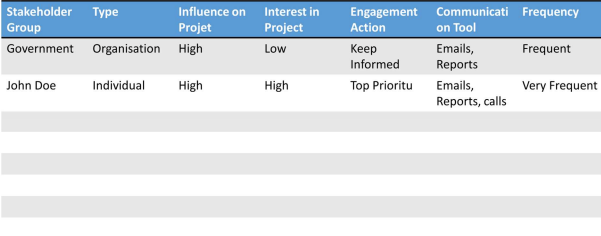
Exercise: Creating a Stakeholder Map

Case Study: Starbucks Corporation and Stakeholder Mapping
Starbucks Corporation, founded in 1971, is a globally recognized coffeehouse chain known for its premium coffee and customer experience. Over the years, Starbucks has grown exponentially, with thousands of stores worldwide. Effective stakeholder management has been a crucial part of Starbucks’ strategy, enabling it to maintain strong relationships with its diverse stakeholders and ensure sustainable growth.
Application of Stakeholder Mapping at Starbucks
Step 1: Identify Stakeholders
Brainstorming and Listing Stakeholders:
Starbucks identified a broad range of stakeholders affected by or can influence its operations. These stakeholders include:
Internal Stakeholders:
• Employees (Baristas, Store Managers, Corporate Staff)
• Management and Leadership
External Stakeholders:
• Customers
• Suppliers (Coffee Farmers, Equipment Suppliers)
• Investors and Shareholders
• Local Communities
• Regulatory Bodies
• Non-Governmental Organizations (NGOs)
• Environmental Groups
• Competitors
Categorization of Stakeholders:
Starbucks categorized stakeholders into internal and external groups to better manage their interests and influence.
Step 2: Analyze Stakeholders
Assessing Interests and Expectations:
Starbucks analyzed each stakeholder group’s interests, expectations, and potential concerns. For example:
• Employees: Interested in job security, fair wages, benefits, and a positive work environment.
• Customers: Seek high-quality coffee, excellent service, and a comfortable store ambiance.
• Suppliers: Focus on fair trade practices, timely payments, and long-term partnerships.
• Investors: Expect financial returns, transparency, and sustainable growth.
• Local Communities: Concerned with Starbucks’ community involvement, local employment opportunities, and environmental impact.
• Regulatory Bodies: Focus on compliance with local laws and regulations.
• NGOs and Environmental Groups: Interested in Starbucks’ environmental sustainability and ethical sourcing practices.
Determining Influence and Power:
Starbucks assessed the influence and power of each stakeholder group over its operations. For example:
• High Influence: Customers, Investors, Employees, Suppliers
• Moderate Influence: Local Communities, Regulatory Bodies
• Low Influence: NGOs, Environmental Groups, Competitors
Step 3: Map Stakeholders
Creating a Power-Interest Matrix:
Starbucks used a power-interest matrix to visualize stakeholder analysis. The matrix categorized stakeholders based on their level of influence (power) and their level of interest in Starbucks’ operations:
• High Power, High Interest: Customers, Investors, Employees
• High Power, Low Interest: Suppliers, Regulatory Bodies
• Low Power, High Interest: Local Communities, NGOs, Environmental Groups
• Low Power, Low Interest: Competitors
Plotting Stakeholders on the Matrix:
Starbucks placed each stakeholder in the appropriate quadrant of the matrix to prioritize engagement efforts.
Step 4: Develop Engagement Strategies
Tailoring Communication Plans:
Starbucks developed specific communication plans for each stakeholder group. For example:
• Customers: Regular updates through social media, loyalty programs, and in-store promotions.
• Employees: Internal newsletters, training programs, and feedback sessions.
• Suppliers: Supplier summits, regular audits, and long-term contracts.
• Investors: Quarterly earnings calls, annual reports, and shareholder meetings.
• Local Communities: Community events, local sponsorships, and environmental initiatives.
• Regulatory Bodies: Compliance reports and regular consultations.
• NGOs and Environmental Groups: Collaborative projects, sustainability reports, and public commitments.
Step 5: Implement and Monitor Engagement
Executing the Engagement Plan:
Starbucks implemented engagement strategies and communication plans, ensuring consistent and transparent communication with stakeholders.
Monitoring and Adjusting:
Starbucks regularly monitored stakeholder feedback and responses to adjust engagement strategies as needed. This involved conducting surveys, holding focus groups, and tracking social media interactions.
Results and Impact
Enhanced Reputation and Trust:
By effectively managing stakeholder relationships, Starbucks built a strong reputation and high trust among its stakeholders. This trust translated into customer loyalty, employee satisfaction, and investor confidence.
Sustainable Growth:
Stakeholder engagement helped Starbucks identify and mitigate potential risks, ensuring sustainable growth. For example, ethical sourcing practices and environmental initiatives appealed to socially conscious consumers and investors.
Innovation and Community Impact:
Collaboration with stakeholders led to innovative products and community programs. Starbucks’ commitment to fair trade and sustainable practices strengthened its brand image and supported local communities globally.
Starbucks Corporation’s use of stakeholder mapping illustrates the importance of effectively identifying, analyzing, and engaging with stakeholders. By understanding the interests and influence of diverse stakeholder groups, Starbucks developed tailored strategies that enhanced its reputation, ensured sustainable growth, and fostered innovation. This case study highlights the value of stakeholder mapping in achieving long-term business success and maintaining strong, positive relationships with all relevant parties.

Course Manual 6: Internal Based model
Internal-based models provide a comprehensive approach for understanding and controlling the various activities conducted within a company. These models focus on the internal dynamics, resources, and mechanisms of an organization, offering a framework for improving business performance, fostering creativity, and enhancing decision-making. They shift the focus from external market conditions and competitors to internal capabilities and systems, prioritizing the essential elements that form the basis of a company.
One of the fundamental concepts underlying internal-based models is the recognition that an organization’s unique resources and capabilities are essential for its competitive advantage. This perspective aligns with the Resource-Based View (RBV), which emphasizes that gaining and sustaining a competitive edge depends on tangible and intangible resources. Tangible resources include physical assets like infrastructure and technology, while intangible resources consist of knowledge, skills, and corporate culture.
A significant aspect of internal-based models is the emphasis on knowledge management. Effective methods for acquiring, disseminating, and utilizing knowledge within the organization are necessary, as expertise is considered a vital tool. This involves developing systems and policies to support a culture of continuous learning and improvement, as well as facilitating the flow of information. By leveraging the collective abilities and expertise of their employees, companies can innovate and adapt more effectively to their circumstances.
Additionally, internal-based models focus on internal policies and practices. These models often involve mapping and evaluating processes to identify areas of inefficiency and potential improvement. Lean and Six Sigma methodologies are commonly used to streamline processes, minimize waste, and elevate quality standards, leading to improved operational efficiency and effectiveness, as well as enhanced customer satisfaction.
Furthermore, internal-based models underscore the importance of corporate structure and culture. Clearly defined structures facilitate efficient coordination and collaboration by delineating roles, responsibilities, and communication channels. Simultaneously, fostering employee engagement, motivation, and alignment with the company’s goals and values contributes to a strong corporate culture. Developing and nurturing this culture largely depends on the leaders of an organization, creating an environment conducive to performance and creativity.
Internal-based models provide a framework for strategic management, aligning the company’s strategic objectives with its capabilities. Internal audits and assessments, including SWOT evaluations, help identify the organization’s strengths, weaknesses, opportunities, and threats, enabling the formulation of strategies that leverage its unique abilities and address any gaps or issues.
Internal-based models offer a comprehensive strategy for understanding and improving a company’s internal operations. By focusing on resources, knowledge management, processes, structure, and culture, these models provide valuable analysis and solutions for achieving long-term sustainable success. Those who can effectively apply internal-based models will enhance their performance, foster creativity, and maintain a competitive edge in an ever-evolving corporate landscape.

Case Study: Implementing an Internal-Based Model at TechPro Solutions
TechPro Solutions, a mid-sized software development firm, faced significant challenges in maintaining its competitive edge and optimizing its operations. With rapid technological advancements and increasing competition, the company needed a robust strategy to effectively leverage its internal resources and capabilities. The management implemented an internal-based model to enhance performance, streamline processes, and foster innovation.
Founded in 2010, TechPro Solutions specializes in custom software solutions for clients across various industries. Over the years, the company grew rapidly, but with growth came complexity. The management noticed inefficiencies in their processes, communication breakdowns, and a lack of coordinated innovation efforts. These issues started affecting project delivery times, quality, and customer satisfaction.
Internal Audit and Resource Identification
The first step in implementing the internal-based model was conducting a thorough internal audit to identify the company’s strengths, weaknesses, opportunities, and threats (SWOT analysis). This involved:
Resource Inventory: Cataloging all tangible and intangible resources. Tangible resources included advanced software tools, state-of-the-art infrastructure, and a robust IT support system. Intangible resources comprised highly skilled software engineers, proprietary algorithms, and a solid organizational culture centered around innovation.
Capability Assessment: Evaluating the core competencies of the company, such as expertise in agile development methodologies, project management skills, and customer relationship management.
Process Analysis involves mapping out existing workflows to identify bottlenecks, redundancies, and inefficiencies using techniques like Value Stream Mapping (VSM).
Knowledge Management
Recognizing that knowledge was one of their most critical assets, TechPro Solutions implemented a comprehensive knowledge management system. This included:
Centralized Knowledge Repository: Creating a centralized database where all project documentation, best practices, and learning materials are stored and easily accessible to employees.
Collaboration Tools: Introducing advanced collaboration tools to facilitate better team communication and knowledge sharing.
Training Programs: Regular training sessions and workshops to keep employees updated with the latest technologies and methodologies.
Process Optimization
Using the insights gained from process analysis, TechPro Solutions embarked on a series of process optimization initiatives:
Lean and Agile Practices: Adopting lean and agile methodologies to streamline development processes, reduce waste, and improve efficiency. This involved regular stand-up meetings, iterative development cycles, and continuous feedback loops.
Standardization: Standardizing workflows to ensure consistency and quality across all projects. This included developing standardized templates, checklists, and guidelines for various tasks.
Organizational Structure and Culture
TechPro Solutions recognized the importance of a well-defined organizational structure and a positive culture:
Restructuring: Teams were restructured to promote better coordination and communication. Cross-functional teams were created to unite diverse skill sets and perspectives, fostering innovation.
Culture Building: Initiating programs to enhance organizational culture, such as team-building activities, recognition programs, and open idea-sharing forums. Leadership played a crucial role in modeling and reinforcing desired behaviors.
Strategic Alignment
Aligning internal capabilities with strategic objectives was critical. The company focused on:
SWOT Integration: Integrating the findings from the SWOT analysis into their strategic planning process to leverage strengths, address weaknesses, exploit opportunities, and mitigate threats.
Objective Setting: Setting clear, measurable objectives aligned with their core competencies and market demands.
Outcomes
The implementation of the internal-based model led to significant improvements at TechPro Solutions:
Enhanced Efficiency: Streamlined processes and reduced waste led to faster project delivery times and cost savings.
Improved Quality: Standardized practices and continuous improvement initiatives resulted in higher quality outputs and fewer defects.
Increased Innovation: Better knowledge management and cross-functional collaboration fostered a culture of innovation, leading to the development of cutting-edge solutions.
Higher Employee Satisfaction: Improved organizational culture and training opportunities increased employee engagement and retention.
Customer Satisfaction: Faster delivery times, higher quality products, and innovative solutions enhanced customer satisfaction and loyalty.
The case of TechPro Solutions illustrates how an internal-based model can be effectively implemented to optimize resources, streamline processes, and foster innovation. By focusing on internal capabilities and continuously improving, TechPro Solutions addressed its challenges and positioned itself for sustained competitive advantage in the dynamic software development industry.
The Five Principles of Lean Methodology: A Path to Efficiency and Excellence
In a company, the lean approach is a method aimed at improving customer value by reducing waste. It originated from Toyota’s manufacturing processes and focuses on simplifying operations to improve efficiency and effectiveness. The lean approach is based on five main concepts: defining value, mapping the value stream, generating flow, building pull, and pursuing excellence. Together, these ideas create a culture dedicated to operational excellence and continuous improvement.
Identifying Value
The first key principle of the lean approach is that value should be defined from the consumer’s perspective. Value represents everything the customer is willing to pay for that directly meets their needs and desires. This concept stresses the importance of understanding the customer’s needs and preferences so that the product or service provided satisfies them and maintains its quality. Businesses must study their customers, gather feedback, and conduct market analysis to determine what constitutes value. By focusing on creating value, companies can align their operations and resources towards offering products and services that enhance customer satisfaction and loyalty.
Mapping the Value Stream
Mapping the value stream comes after establishing value. This principle involves identifying all the processes involved in producing or delivering a product, from the initial idea to the final delivery to the end user. The goal is to differentiate between processes that add value and those that do not. Value stream mapping (VSM) is a visual technique used to document and analyze the flow of material and information throughout the process. Organizations can use value stream mapping to identify inefficient aspects of the value stream, such as unnecessary processes, delays, and bottlenecks. This understanding helps companies develop strategies to reduce waste and improve efficiency.
Creating a Flow Path
The concept of “creating flow,” one of the guiding principles of lean methodology, aims to ensure uninterrupted and efficient production processes. After identifying and eliminating unproductive actions, the next step is to streamline the remaining value-adding procedures to achieve a consistent and efficient workflow. The initial critical steps in this process include reorganizing the workplace, ensuring balanced workloads, and establishing standard work procedures. Variability should be reduced, and consistency ensured. Cellular manufacturing and kanban systems are two commonly used methods to facilitate seamless information and product flow. By establishing a continuous flow, companies can reduce lead times, increase production, and enhance overall operational efficiency.
Establishing Pull
The fourth principle, “establishing pull,” emphasizes producing only what is needed, when it is needed, and in the required quantity. This approach differs from traditional push production systems, which rely on producing items based on forecasts and then distributing them to the market regardless of demand. Pull systems, such as just-in-time (JIT) manufacturing, are driven by actual consumer demand, ensuring optimal resource utilization and minimal inventory levels. Successful implementation of a pull system relies on a flexible manufacturing process capable of quickly responding to changes in consumer demand, which necessitates close supplier collaboration. This approach helps reduce inventory costs, minimize overproduction, and enhance market responsiveness to demand fluctuations.
Continuous Improvement
The final concept in the lean approach is the pursuit of perfection, which entails a steadfast commitment to ongoing improvement. Companies should aim to cultivate a culture where employees at all levels are motivated to identify and eliminate waste, improve processes, and elevate standards. Techniques like kaizen (continuous improvement) and PDCA (Plan-Do-Check-Act) are widely used to foster a mindset conducive to continuous innovation and development. The persistent search for ways to enhance their operations enables organizations to achieve greater efficiency, quality, and customer satisfaction. Striving for excellence is an ongoing endeavor that demands unwavering dedication, creativity, and a willingness to challenge conventional wisdom.
By employing these five guiding principles, lean methodology provides a comprehensive framework for helping companies improve efficiency, reduce waste, and deliver better value to their customers. By identifying value, mapping the value stream, creating flow, establishing pull, and pursuing perfection, companies can foster a culture of continuous improvement and operational excellence. Lean concepts not only enhance production and profitability but also promote a customer-centric mindset, which is crucial for long-term success in a competitive market.
Optimizing Quality and Efficiency: The Six Sigma Methodology
The Six Sigma methodology is a data-driven tool that aims to improve the quality and efficiency of activities within a corporation. It was developed by Motorola in the 1980s and has since been widely adopted in many different fields due to its systematic approach to problem-solving and focus on minimizing errors. The fundamental goal of Six Sigma is to identify and eliminate the causes of variation and errors in processes, leading to improved performance and ultimately, greater consumer satisfaction and company results. The methodology consists of two main frameworks: DMAIC (Define, Measure, Analyze, Improve, and Control) and DMADV (Define, Measure, Analyze, Design, and Verify), each serving specific functions during the process improvement process.
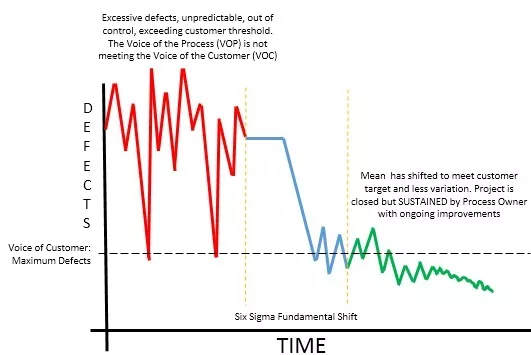
The DMAIC Structure
Six Sigma is built on the DMAIC framework, commonly used for enhancing existing processes. There are five phases involved:
In the first phase, the customer requirements—both internal and external—and the project goals are clearly defined. This phase involves creating a project charter, which includes the issue statement, project scope, goals, and primary project participants. The key objectives are to establish measurable targets and understand what needs to be addressed.
The second phase, also referred to as “Measure,” involves assessing the current process performance to establish a baseline. This includes identifying which key performance indicators (KPIs) are relevant and gathering the necessary data. The goal is to determine the extent of the issue and set benchmarks for assessing progress.
In the third phase, known as “Analyze,” the collected data is analyzed to identify the root causes of defects and inefficiencies. A wide range of statistical techniques and tools, such as cause-and-effect diagrams, process mapping, and regression analysis, are utilized to uncover underlying issues and their impact on process performance.
The fourth step is “Improve”; during this phase, solutions are developed and implemented to address the root problems identified in the previous phase. Common methods for designing and validating improvement projects include brainstorming sessions, design of experiments (DOE), and pilot testing. The objective is to implement changes that enhance the operation of the process.
The final step is control, which is focused on maintaining the improvements achieved. This includes using control systems, such as control charts and standardized processes, to monitor the process and ensure that the improvements are sustained over time. Regular reviews and audits help prevent regression and ensure that performance is consistently maintained.
The DMADV Framework
Design for Six Sigma (DFSS), also known as the DMADV framework, is crucial for developing new processes or products. It consists of five phases:
1. Define: In this phase, project goals and client requirements for the new process or product are established, much like the DMAIC phase. The aim is to identify critical quality (CTQ) variables and assess relevant traits to ensure that the new product or process meets the client’s needs and performance criteria.
2. Measure: This stage involves analyzing various design options to select the best one, considering potential risks, benefits, and feasibility of each design choice.
3. Analyze: Detailing the chosen design by considering all necessary criteria and characteristics. Techniques such as prototyping and simulation are commonly used to ensure the design meets specified criteria.
4. Design: The chosen design is developed further, ensuring it meets all established criteria and requirements.
5. Verify: The new design is thoroughly tested and validated to ensure it performs as intended, involving client input and fine-tuning for optimal performance.
Some benefits of Six Sigma include:
– Improved quality of goods and services by reducing defects and variations.
– Enhanced operational efficiency through waste reduction and process optimization, leading to cost savings.
– Increased customer satisfaction and loyalty due to higher quality and consistent performance.
– Cultivating a data-driven decision-making culture, resulting in more informed and successful management practices.
– Empowering staff to participate in problem-solving and development initiatives, fostering a sense of responsibility and engagement.
Six Sigma is an excellent strategy for quality control and continuous process improvement. Its organized frameworks help companies systematically identify and eliminate causes of defects and inefficiencies, ultimately leading to higher quality, efficiency, and customer satisfaction. Overall, Six Sigma enables companies to achieve significant operational improvements, leading to better business outcomes and a competitive edge over rivals.

Exercise: Implementing Six Sigma

Course Manual 7: Competing Values Framework (CVF) Model
Wide-ranging acceptance of the Competitive Values Framework (CVF) Model helps one understand, diagnose, and improve a company’s culture. Designed by Robert E. Quinn and John Rohrbaugh in the early 1980s, the CVF offers a comprehensive framework for evaluating the performance of an organization. This approach helps to classify and balance conflicting values found inside a company. The data explains how a company’s values affect general performance, behavior, and decision-making.
The CVF Model is defined by two main ideas: internal vs. external focus and flexibility vs. stability. These elements form the basis of the model’s structure. The model’s quadrant matrix represents four primary organizing cultures: Clan, Adhocracy, Market, and Hierarchy. These cultures are defined by their relationship to one another.
The Clan culture emphasizes adaptability and an internal focus. Organizations with a Clan culture prioritize agreement, communication, and teamwork, much like a family would. Employee participation, morale, and development are crucial for creating a supportive and motivating environment. In Clan cultures, leadership is often developed through mentorship, fostering a sense of loyalty and tradition.
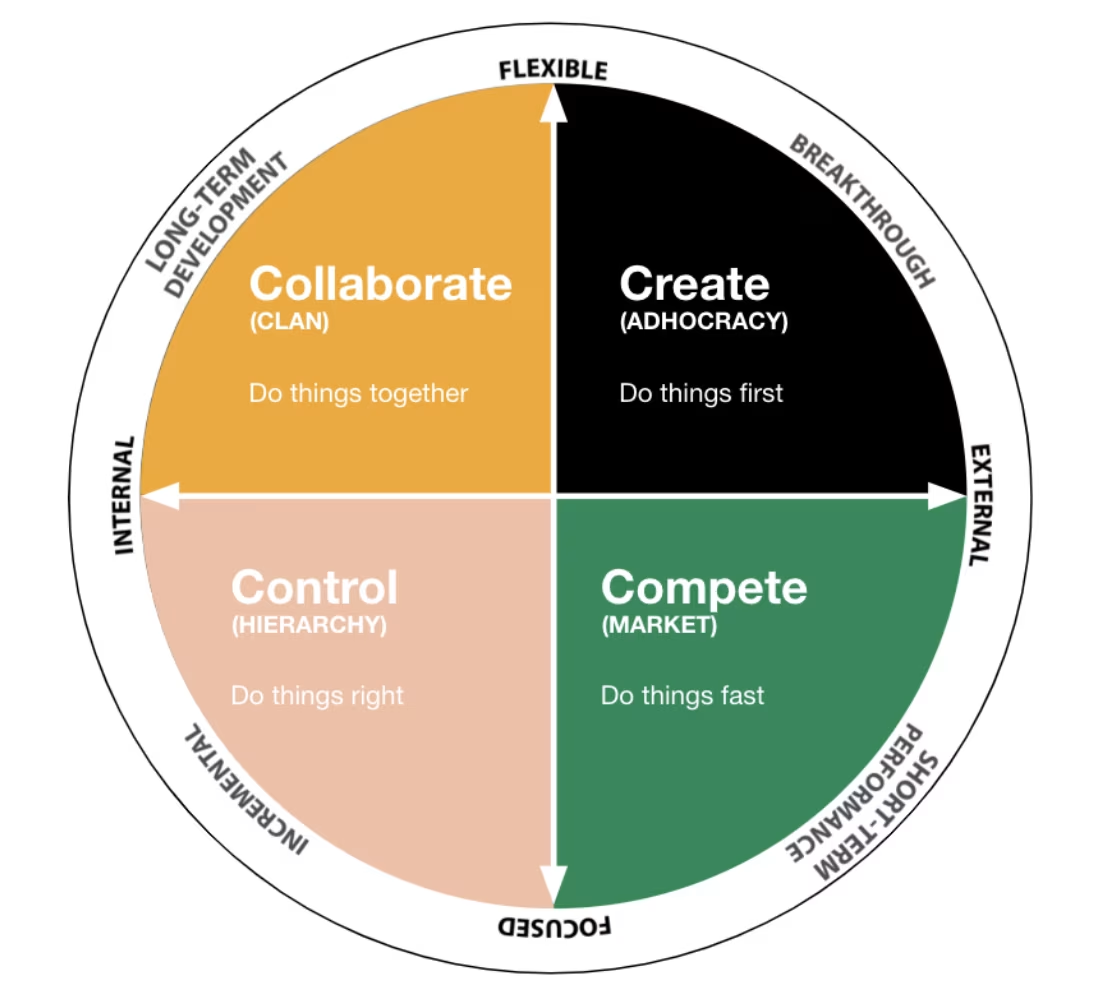
The first dimension, represented on the vertical axis, illustrates where an organization’s culture lies between being completely flexible and entirely stable. For instance, Google would be positioned towards the “flexible” end of this axis, while an organization like the New York Stock Exchange, known for its bureaucratic consistency, would be towards the stable end.
The second dimension, displayed on the horizontal axis, indicates whether the organization is more internally or externally focused. Organizations with a strong internal focus benefit from effective team relationships and well-defined processes. For example, General Electric is known for its internal focus through the Six Sigma quality approach. Conversely, externally focused organizations like Apple emphasize customer satisfaction and competitiveness.
As shown in the image above, these intersecting axes create four quadrants, each representing distinct values and typical activities. The quadrants are described as follows:
• Clan (Collaborate) – Located in the upper left, this quadrant represents teamwork, effective relationships, personal empowerment, and talent management, highlighting a “people-oriented” approach.
• Market (Compete) – Positioned in the lower right, this is the opposite of the Clan quadrant, focusing on goal achievement, quick response, and competitiveness, embodying a “task and goals” orientation.
• Adhocracy (Create) – Found in the upper right, this quadrant signifies innovation, creativity, and future planning, reflecting an “informal and entrepreneurial” approach.
• Hierarchy (Control) – Located in the lower left, this quadrant represents bureaucracy, structure, and efficiency, indicating a “formal, stable” orientation.
There is no “best” or “worst” quadrant. Most organizations exhibit characteristics of all quadrants to some extent. However, the dominant characteristics of one or two quadrants are what matter most. The appropriate quadrant for an organization at any given time depends on its output, lifecycle stage, operating conditions, market position, and source of competitive advantage.
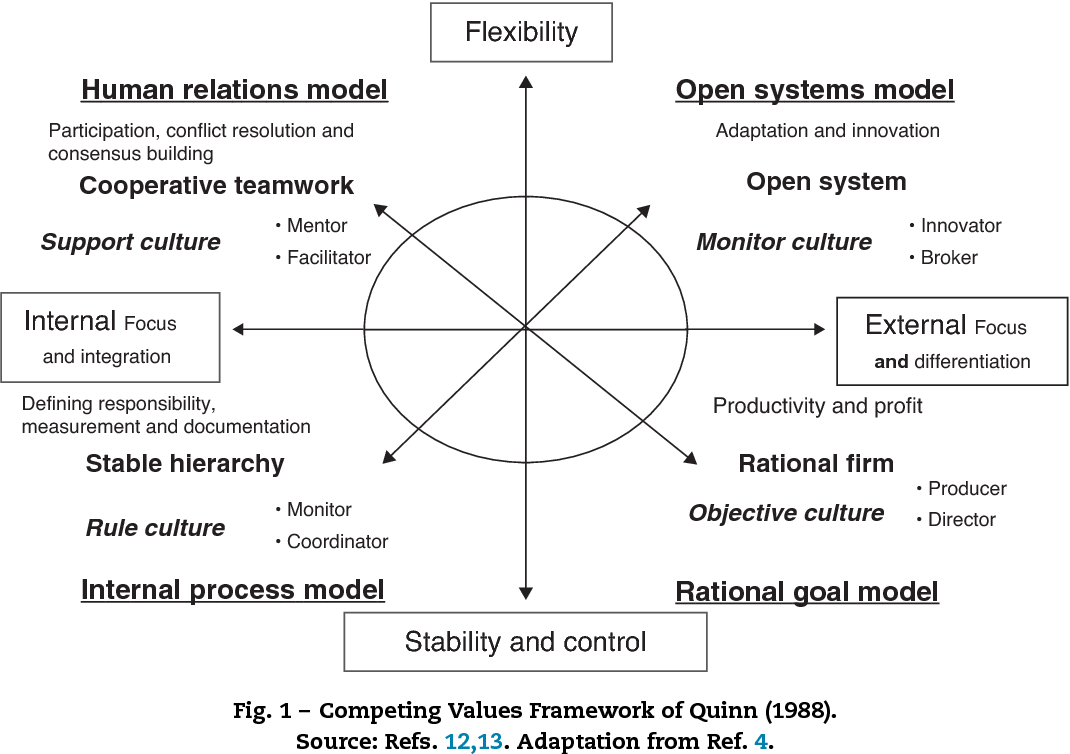
Using the Competing Values Framework
Once you’ve identified your organization’s quadrant, you can use this insight to enhance the values and behaviors typical of that quadrant, thereby strengthening your existing culture.
Conversely, if your current culture is causing issues, consider looking at the qualities of the diagonally opposite quadrant. Integrating some of these characteristics into your company or team’s practices may bring about positive change. However, be aware that trade-offs will be necessary. For instance, encouraging creativity might reduce control, while focusing on competitiveness might limit caring and collaborative relationships. By using the CVF to anticipate these outcomes, you can manage them more effectively.
The CVF can be applied in various ways, including:
• Mapping leadership roles and responsibilities.
• Designing a new organization or department.
• Improving performance within an organization or department.
• Assessing quality in products or departments.
• Recruitment.
• Identifying effective learning approaches.
CVF in Action
Consider an educational publishing company facing serious morale issues. Employees are overworked, and the office atmosphere is bureaucratic, rigid, and stale. The company leaders recognize the need for a drastic change to reinvigorate their workforce.
Using the CVF, they identify their corporate culture as being in the Control quadrant. The opposite quadrant is Create.
With this understanding, the company’s leaders develop a plan to move towards the Create quadrant. They allocate time each week for team members to pursue their own product development projects. For example, one editor joins sales calls and gathers feedback from bookstore buyers, leading to a redesign of book covers. This change results in increased sales as stores give the more attractive books better shelf positions.
Additionally, team members are given more flexibility in their work, and rewards are introduced for creative solutions to problems. As a result, a warehouse operative suggests a cost-effective method for handling returns from stores.
By recognizing their current position and its opposite, the publisher was able to revitalize their team and clearly see the direction needed for improvement.
Balancing Organizational Success: The Comprehensive Competitive Values Framework Model
By giving a whole picture of organizational achievement, the Competitive Values Framework (CVF) Model presents a sophisticated knowledge of how many values interact inside a company. This is achieved with attention to numerous dimensions. Through analysis of the four distinct cultural types—Clan, Adhocracy, Market, and Hierarchy—across internal vs external focus and flexibility versus stability, the CVF Model catches the complexity of organizational dynamics. The CVF Model integrates this assessment. This multifarious strategy ensures that companies do not overlook crucial aspects of their operations and culture, providing a whole picture of effectiveness.
The All-Inclusive View on the Performance of the Company
The ability of the CVF Model to include a broad spectrum of elements of organizational activity is one of the factors contributing to its incredible potency. Since the model considers both the internal and external environments and the need for flexibility and stability, it may depict the complete spectrum of organizational traits. Organizations are more able to understand from this all-encompassing viewpoint that effectiveness is not a one-dimensional idea. For example, a company must mix the innovative-driven focus of an adhocracy culture with the supportive features of a clan culture to succeed in a competitive environment. To an exact degree, one must balance the stability and control of a Hierarchy and the performance-driven attitude of a Market culture to ensure long-term success. Using this integrated approach will assist companies in identifying and managing issues involving several aspects, thus strengthening the resilience of their organizational structure.
The Craft of Finding Harmony Between Parallel Values
Fundamentally, the CVF Model encourages people to find a balance between several conflicting values to reach general success. Companies often face conflicting demands—the difference between the requirement for stability and innovation or the focus on internal development as opposed to outside rivalry. With the help of the CVF Model, companies may grasp these conflicting values and create a balanced fit for their strategic goals. To keep ahead of its competitors (adhocracy) and yet retain effective operations (hierarchy), a company can be obliged to create new ideas fast. Businesses can achieve a dynamic equilibrium between these opposing values, allowing for adaptation and sustainable development.
The Identification of Managerial and Cultural Business Practices
Furthermore, the CVF Model helps identify the cultural and management strategies that enhance or hinder effectiveness. Using the artistic profile of an organization, executives can pinpoint the elements of their present culture that support the accomplishment of their objectives and those acting against them. A strong Clan culture, which might be responsible for high levels of staff involvement and morale, is one example; nevertheless, if it comes first over the crucial focus on external competitiveness, it may compromise efficient market performance. Conversely, a dominant market culture could be responsible for short-term successes. Still, if it is not balanced with elements of a supportive clan culture, it can lead to significant turnover and burnout. If organizations initially see their company’s cultural strengths and shortcomings, they can then make informed judgments about which behaviors to encourage and which practices to change.
Finding Issues Inside a Company and Offering Direction for Improvement
Because of its clinical power—which makes it a useful diagnostic tool—the CVF Model is an excellent tool for addressing organizational problems and guiding change projects. The CVF Model provides a structure for identifying issues such as low morale, falling performance, or strategic misalignment using cultural dynamics underlying the surface of enterprises. For example, when a company struggles with innovation, the CVF Model could advise that it emphasizes hierarchy and market values too much at the price of adhocracy. Leaders with this fresh awareness can effectively carry out targeted interventions, such as creating an environment that is more open and creative to help solve the problem’s fundamental source.
Furthermore, the CVF Model provides a unique road map for the alteration of cultural standards, therefore guiding change projects. Leaders can use the model to create strategies for achieving specific goals for cultural transformation, such as enhancing external emphasis or increasing flexibility, and to develop means of reaching these goals. If companies approach changes holistically and carefully address the several facets of culture, they may better manage it and attain success over the long run.
The CVF Model offers a holistic and multifarious viewpoint on a company’s performance. It provides a robust framework for problem analysis and change direction, helps to balance competing values, and points out necessary cultural and managerial techniques. Its all-encompassing approach makes it a helpful tool for companies trying to increase their efficiency and adaptability in complex and dynamic surroundings.
Navigating the Challenges of Implementing the Competitive Values Framework Model
Although the Competitive Values Framework (CVF) Model provides a whole picture of organizational culture and effectiveness, it also presents specific issues that companies must solve to succeed. One needs a strong awareness of these challenges to implement the strategy and get the desired results properly. Among the most significant obstacles are the need for a thorough understanding of the corporate culture and values, the difficulty of balancing conflicting values in practice, and the possibility of limits in handling external events or stakeholders’ interests.
Having a Knowledge of the Organizational Values and Culture
One must have a thorough awareness of a company’s culture and values to effectively use the CVF Model, which can be challenging due to its natural complexity. An organization’s culture, often deeply embedded, consists of shared values, attitudes, and practices that are not always evident or spoken. Identifying the current culture requires managers and executives to invest time and money. Data is gathered through surveys, interviews, and observations. This process can be daunting, especially for companies that have not prioritized cultural studies. Additionally, the subjective nature of culture means that individuals within the same organization might have different perceptions, making it difficult to achieve a shared understanding.
Finding Harmony Between Divergent Values
The CVF Model is based on balancing conflicting values—internal focus versus external attention, and flexibility versus stability. While theoretically important, achieving this balance can be challenging in practice. Organizations may face situations where different departments or teams have conflicting priorities. For example, the operations team might prioritize efficiency and control (hierarchy culture), while the marketing team might emphasize creativity and external engagement (adhocracy and market cultures). These conflicting goals can lead to internal strife, requiring leaders to negotiate these conflicts and foster teamwork and communication to ensure no single value dominates to the detriment of others.
Addressing External Elements and Stakeholders’ Interests
Although the CVF Model is robust for analyzing internal operations, it may overlook external factors or stakeholder interests. External factors such as market dynamics, legal changes, and technological advancements can significantly impact a company’s performance but are not explicitly addressed within the CVF’s quadrants. This limitation necessitates augmenting the CVF Model with additional strategic tools and frameworks to account for the external environment.
Moreover, the CVF Model does not explicitly consider stakeholders’ interests, including consumers, suppliers, investors, and society. These stakeholders have varying, sometimes conflicting, interests. For instance, investors might prioritize financial success (aligned with market culture), while employees might value a friendly workplace (aligned with clan culture). Balancing the interests of external stakeholders and internal corporate culture values requires a comprehensive approach beyond the CVF Model.
Taking Action to Handle Challenges
To effectively manage these challenges, companies should:
1. Develop a deep understanding of their organizational culture.
2. Promote honest communication to manage internal conflicts and trade-offs.
3. Use external analysis tools alongside the CVF Model.
Investing in cultural assessments, supporting open communication, and providing training and development can help leaders balance conflicting values and satisfy stakeholders’ needs. By proactively addressing these issues, companies can enhance cultural alignment and overall effectiveness using the CVF Model.
Navigating the Complexity of Implementing the CVF Model with the OCAI Tool
The Competing Values Framework (CVF) Model helps analyze and enhance a company’s culture. One of the most effective tools for evaluating the CVF Model internally is the Organizational Culture Assessment Instrument (OCAI). Developed by Cameron and Quinn, the OCAI assesses a company’s current culture and the ideal culture envisioned by its staff. By surveying staff to gather their viewpoints across the four CVF quadrants—Clan, Adhocracy, Market, and Hierarchy—organizations can gain essential insights into their cultural strengths and opportunities for development. However, the complexity of implementing the CVF Model and the OCAI can vary significantly depending on the company’s size, industry, and cultural dynamics.
OCAI – The Organizational Culture Assessment Instrument
Using a survey-based approach, the Organizational Culture Assessment Instrument (OCAI) asks staff members to rate statements based on the four CVF quadrants. These statements reflect various aspects of corporate culture, including leadership, organizational cohesion, strategic priorities, and success criteria. Comparing the ratings for the present culture to the ideal one helps companies identify areas needing improvement and cultural gaps. The OCAI’s clear visual depiction of these cultural profiles allows leaders to quickly grasp the current cultural landscape and set strategic goals for cultural transformation.
Using the OCAI: Thoughts on Advantages and Challenges
Following OCAI has several benefits. It also provides a logical, quantitative way to assess culture, which helps companies track developments over several periods. The insights the Organizational Change Analysis (OCAI) offers can guide strategies for strategic planning, change management, leadership development, and strategic planning. Including staff members in the assessment process also promotes engagement and buy-in, making them feel like their ideas are valued.
Still, the degree of challenge in fully implementing the OCAI and the CVF Model can differ. The process may be simple for smaller companies with cultures somewhat like one another and call for minimum change. Larger companies with several divisions, teams, and geographical sites sometimes find their situation becoming more complex. Different company areas may have distinct subcultures, which demand more thorough research and therapies for every division.
How Industry and Culture Interplay
The industry in which a company operates adds another element that makes implementing the CVF Model challenging. Industries like technology and healthcare, which are fast changing and always in demand of innovation, may naturally fit the cultures of adhocracy and market. Conversely, companies like finance or manufacturing, which value stability and control highly, could lean toward clan or hierarchical cultures. A firm grasp of these industry-specific dynamics will help one properly evaluate OCAI results and create relevant solutions.
The cultural dynamics inside the company further impact the implementation process. Companies with a history of solid and cohesive cultures may find handling cultural assessments and changes simpler. Conversely, companies with toxic or fragmented cultures would probably run against solid opposition and challenges. Leaders who want to assist cultural transformation effectively must manage these dynamics, encourage honest communication, and build confidence among their people.
Approaches for Effective Strategy Execution
To effectively deploy the OCAI and the CVF Model, companies should give these strategies some thought:
• Create a thorough plan, including the goals, extent, and schedule for the cultural evaluation. The process of comprehensive planning starts with this first phase. Stakeholders should be engaged everywhere to ensure support and alignment.
• Staff members are included in the evaluation process through questionnaires, focus groups, and feedback exchanges. This not only increases the validity of the findings but also encourages responsibility.
• Customized Interventions: Create interventions in line with the strategic objectives of the company and maybe close cultural gaps depending on the OCAI results. These could include procedure modifications, team-building exercises, and leadership development programs.
• Constant Monitoring: Review the culture, often using the OCAI to track development and implement required changes. Constant observation guarantees that cultural projects continue to complement the business’s goals and any changes in the surroundings.

Case Study: Implementing the CVF Model at Google
Background:
One of the most successful and innovative companies globally, Google has long been recognized for its unique organizational culture. Founded in 1998, Google has consistently aimed to foster a workplace encouraging creativity, innovation, and employee satisfaction. However, as Google expanded rapidly, it faced challenges in maintaining its innovative culture while ensuring operational efficiency and market competitiveness.
Challenge:
Google’s primary challenge was to balance the need for continuous innovation (Adhocracy) with operational efficiency and control (Hierarchy), all while fostering a collaborative and supportive work environment (Clan) and achieving strong market performance (Market).
Approach:
1. To address these challenges, Google implemented the Competitive Values Framework (CVF) Model. The company utilized various tools, including the Organizational Culture Assessment Instrument (OCAI), to evaluate and understand its current and desired culture. The following steps outline their approach:
2. Initial Assessment: Google conducted an initial assessment using internal surveys and the OCAI tool. Employees from various departments and levels were surveyed to provide a comprehensive view of the current organizational culture.
3. Data Analysis: The survey results were analyzed to identify the existing cultural profile. The OCAI revealed that while Google had a strong adhocracy culture, there were gaps in the dimensions of clan and hierarchy. Employees desired more structured processes and better work-life balance, indicating a need for stronger Clan and Hierarchy elements.
4. Strategic Planning: Based on the OCAI results, the leadership team developed a strategic plan to balance the competing values. The strategy focused on fostering a supportive work environment, enhancing operational processes, and maintaining innovation and market orientation.
Implementation:
1. Clan Culture Initiatives: Google introduced more team-building activities, wellness programs, and flexible working conditions to promote community and support.
2. Hierarchy Culture Enhancements**: Standard operating procedures were refined, and more transparent performance management systems were implemented to provide clarity and consistency in operations.
3. Adhocracy and Market Cultures: To sustain innovation and market competitiveness, Google encouraged creative thinking and agile methodologies while setting clear market-driven goals and performance metrics.
4. Monitoring and Adjusting: Cultural initiatives were continuously monitored through follow-up surveys and regular feedback loops. Adjustments were made to ensure alignment with Google’s evolving goals and employee expectations.
Outcome:
The implementation of the CVF Model at Google led to several positive outcomes:
• Improved Employee Engagement: The focus on Clan culture initiatives increased employee engagement and satisfaction, resulting in lower turnover rates and higher morale.
• Enhanced Operational Efficiency: Introducing transparent processes and performance management systems under the Hierarchy dimension improved operational efficiency and accountability.
• Sustained Innovation: Google maintained its innovative edge by balancing ad democracy and market cultures, driving continuous product development and market success.
• Holistic Growth: The balanced approach to organizational culture enabled holistic growth, aligning internal dynamics with external market demands.
Conclusion:
Google’s case study demonstrates the practical application of the CVF Model and the OCAI tool in diagnosing and transforming organizational culture. By understanding and balancing competing values, Google successfully navigated the complexities of rapid growth and maintained its competitive advantage. This approach underscores the importance of a structured and adaptive cultural strategy in achieving long-term organizational success.

Workshop Exercise: Evaluating and Balancing Organizational Culture with the CVF Model

Course Manual 8: Balance Scorecard Model
Early in the 1990s, Drs. Robert Kaplan and David Norton developed the Balanced Scorecard (BSC) concept. This paradigm was meant to reflect the core of performance monitoring and strategic management. Moreover, it provides a thorough framework for performance assessment covering elements of finances, clients, internal corporate operations, and learning and development. Using this structure can help you assess a company’s performance. The Business Success Center (BSC) considers several facets of the company’s performance, unlike conventional performance assessment methods that mainly stress financial results. Thus, it offers an objective viewpoint that could be helpful for strategic decisions and attaining long-term success.
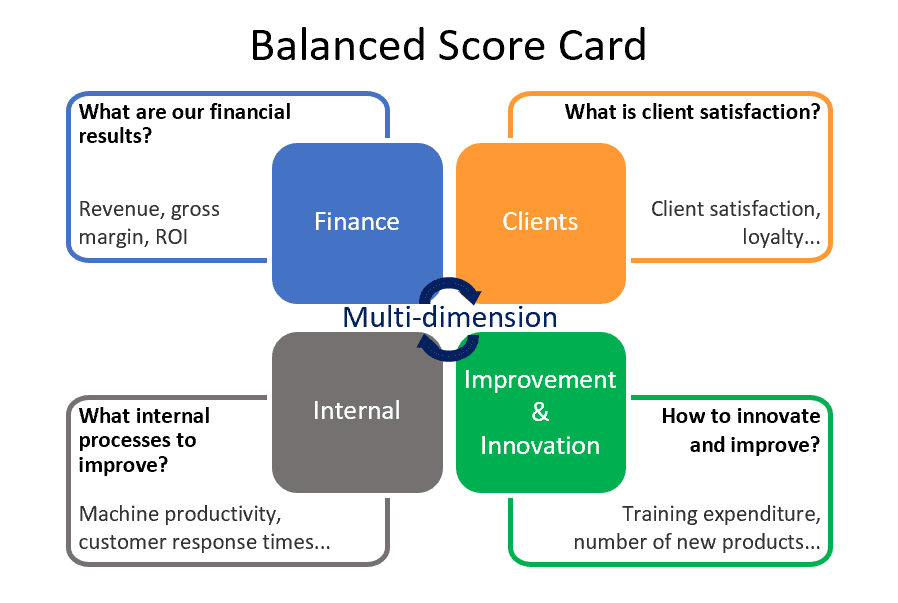
The financial perspective is critical since it offers an understanding of the company’s present financial situation and profitability. From this perspective, one considers essential considerations such as revenue growth, cost control, profit margins, and return on investment. By using these steps, businesses can evaluate the success of their plan in producing profits, therefore ensuring the industry’s future and satisfying the expectations of shareholders.
The three main elements building the basis of the “Customer Perspective” are customer satisfaction, brand commitment, and market share. This concept suggests that a corporation’s capacity to satisfy its consumers determines its income rather precisely. In this case, crucial measures are customer happiness, the net promoter score, market share, and customer loyalty. Prioritizing consumer wants will help companies provide a variety of favorable results. These include enhancing the consumer experience, fostering closer bonds, and promoting income increase.
Regarding the Internal Business Processes Perspective, the primary emphasis is on the degree of management of the organization’s internal operations to guarantee efficiency and effectiveness. This word explains the process of determining the most crucial steps for generating goods and services and, if necessary, enhancing those steps to increase their effectiveness. Standard metrics in this field are operational expenses, quality indices, and process cycle times. Companies that give their internal processes top priority could find different possible results. These results produce better operational efficiency, lower expenses, better quality, and higher production.
Using the Learning and Growth Perspective, the company may concentrate on growing, learning, and inventing to improve its customers’ service caliber. It emphasizes how human capital, organizational culture, and technology help a business to be flexible and expandable in response to changing conditions. Among the possibly pertinent measures are staff satisfaction and retention rates, new technology uptake, and performance of training and development projects. This viewpoint helps the company invest more wisely in its future capabilities, therefore promoting a culture that prioritizes technical development and continuous improvement.
The Business Strategy Council (BSC) guides businesses in matching their strategic objectives with metrics, targets, and actions using four different points of view: performance analysis. By synchronizing all the company’s components, we can guarantee that our objectives are clear and that our strategic priorities are being followed. The Business Strategy Challenge (BSC) helps companies improve their agility and responsiveness, allowing them to assess and modify their plans in the face of constantly shifting conditions.
A functional organizational tool, the Balanced Scorecard presents a thorough framework for performance assessment and strategic management. This strategy considers many elements, including financial performance, customer happiness, internal procedures, and learning and development, providing a picture of the company’s success. Apart from improving strategy alignment and execution, this all-encompassing approach helps companies in the long run, providing a competitive edge. The BSC seems to be a valuable instrument for businesses trying to reach and sustain high degrees of effectiveness in a constantly changing environment since it prioritizes balanced performance measurements.
Leveraging the Balanced Scorecard for Comprehensive Organizational Success
Its multifarious technique of assessing a company’s success is well-known. The Business Strategy Committee (BSC) presents a complete picture considering financial and non-financial concerns. This helps the BSC to match strategy with operational goals, support ongoing learning and development, and enable efficient organizational goal communication all over the company. With all these advantages, the BSC has become a necessary basis for modern companies striving for ongoing economic success.
The Complete View on the Organization’s Performance
One of the most essential benefits of BSC is its capacity to deliver an all-encompassing view of the company’s performance. Regarding performance evaluation, conventional methods usually focus primarily on financial variables, including income, profit margins, and return on investment. Though these steps are pretty vital, they do not give a comprehensive picture of a company’s potential and general state. The Business Strategy Committee (BSC), which combines non-financial points of view, including the customer, internal business processes, and ideas for learning and development, fills this gap. This all-encompassing strategy helps companies ensure they do not overlook crucial elements like the enjoyment of their clients, the efficiency of their operations, and the development of their staff. Examining these numerous traits helps organizations develop a more complex picture of their performance, resulting in more wise strategic planning and decision-making.
Operational Goals and Strategy Should Complement One Other.
The BSC performs quite effectively in helping companies match their operational goals and measurements with their strategic objectives. From the standpoint of the Business Strategy Committee (BSC), every point of view is meant to translate high-level strategic goals into reasonable targets and metrics. Improving customer satisfaction is one strategic goal that may be divided into measurable objectives. Improving the net promoter score or customer support agents’ response times will help achieve this. Likewise, goals related to operational efficiency can be connected to process optimization strategies like reducing cycle time or defect rates. This alignment guarantees that every element of the company aims toward the same goals, generating a coherent and unified effort. The Business Strategy Committee (BSC) helps close the gap between long-term vision and short-term actions by drawing links between strategy and daily activities. This guarantees the correct execution of strategic initiatives.
Continual Learning and Development should take Front Stage.
Maintaining success over the long run depends mainly on an atmosphere that promotes a culture of constant growth and learning. Notably, the Learning and Growth point of view emphasizes the need to encourage innovation, develop human resources, and improve the capacities of companies. Some indicators, such as the number of hours employees spend on training, the rate of skill acquisition, and the rate of invention, point to areas needing work and provide a road map for the growth of future capacities. Emphasizing ongoing development helps the Business Strategy Council (BSC) ensure that companies remain adaptable and robust against changing market conditions and competition pressures. This focus on education enhances the performance of people and companies and stimulates development and innovation over the long run.
Facilitation helps to Simplify Understanding and Communication.
Essential for the success of a business, the BSC significantly helps to facilitate the efficient communication of strategy and goals, enabling the development process. The BSC clearly states strategic objectives and links them to specific measures across several points of view, making the plan more concrete and understandable for all personnel. This approach guarantees the efficient use of the strategy. This clarity helps staff members of all levels understand how their roles support the more general strategic goals, fostering responsibility and ownership. Furthermore, the BSC provides a consistent vocabulary and structure for handling performance, helping to remove uncertainty and misalignment. Regular reviews and updates of the BSC metrics help guarantee that everyone keeps their focus on the company’s goals. This will encourage continuing discussion on strategic objectives and advancement.
The Balanced Scorecard offers several main advantages that enhance the management of strategic projects and a company’s performance. Its all-encompassing approach, which considers financial and non-financial elements, provides a whole picture of the company’s health. By matching the strategy with the operational goals, one guarantees a coherent execution; moreover, the focus on ongoing development helps to inspire flexibility and creativity. Finally, the way the BSC supports understanding of strategic goals and communication helps to unite the activities of the whole company. The BSC is an excellent instrument for companies looking for a competitive advantage in a complex and changing corporate environment and sustainable success. These benefits, both separately and together, make the BSC a priceless instrument.

Case Study: Implementing the Balanced Scorecard at Apple Inc.
Background:
Apple Inc., renowned for its innovation and design excellence, faced significant challenges in the late 1990s. Despite its strong brand, Apple struggled with declining market share and profitability. To address these issues, the company sought to implement a strategic management system. The key was to align its diverse operations with its strategic objectives, foster innovation, and improve overall performance. The Balanced Scorecard (BSC) emerged as the pivotal tool to achieve these goals, playing a crucial role in Apple’s strategic transformation.
Challenge:
Apple’s primary challenge was translating its visionary leadership and innovative culture into tangible, measurable outcomes. The company needed a comprehensive framework that would track financial performance and integrate non-financial metrics such as customer satisfaction, internal process efficiency, and organizational learning and growth. Additionally, aligning these diverse elements with its strategic vision was crucial for driving sustainable growth and maintaining competitive advantage.
Approach:
Apple’s approach to implementing the BSC involved several key steps:
1. Initial Assessment and Strategy Mapping:
• Apple began by thoroughly assessing its existing strategic objectives and operational processes. This involved engaging key stakeholders across various departments to understand their perspectives and identify critical success factors.
• The leadership team, led by [specific leader’s name], played a pivotal role in this phase, developing a strategy map that outlined the cause-and-effect relationships between different strategic objectives across the four BSC perspectives: Financial, Customer, Internal Business Processes, and Learning and Growth.
2. Developing Specific Metrics and Targets:
• From the Financial Perspective, Apple focused on revenue growth, profit margins, and return on investment metrics. These measures were crucial for tracking the company’s financial health and profitability.
• The Customer Perspective included metrics like customer satisfaction scores, market share, and brand loyalty. Apple aimed to enhance its customer experience and build stronger relationships with its customer base.
• The Internal Business Processes Perspective emphasized process efficiency, product innovation cycle times, and quality improvements. Apple sought to streamline its operations and accelerate its product development process.
• The Learning and Growth Perspective focused on employee training and development, innovation capabilities, and organizational culture. Apple recognized the importance of investing in its human capital to drive long-term growth and innovation.
3. Implementing and Monitoring the BSC:
• Apple rolled out the BSC across its global operations, ensuring that all employees understood the strategic objectives and how their roles contributed to achieving them.
• The company established regular review meetings to monitor progress against the BSC metrics, identify areas for improvement, and adjust strategies as needed.
Outcome:
The implementation of the BSC had a transformative impact on Apple:
• Improved Financial Performance: Apple experienced significant revenue growth and profitability, driven by its ability to align financial objectives with operational goals. The focus on innovation and customer satisfaction helped the company launch successful products like the iPod, iPhone, and iPad, contributing to its financial turnaround.
• Enhanced Customer Satisfaction: Apple improved customer satisfaction and loyalty by prioritizing customer-centric metrics. This customer focus became a cornerstone of Apple’s brand, differentiating it from competitors and driving market share gains.
• Streamlined Operations: Apple’s emphasis on internal process efficiency helped It optimize its supply chain, reduce costs, and accelerate product development cycles. This operational excellence enabled Apple to respond quickly to market demands and maintain its competitive edge.
• Fostering a Culture of Innovation: The Learning and Growth Perspective reinforced Apple’s commitment to innovation and employee development. By investing in training and fostering a culture that encouraged creativity, Apple was able to sustain its position as a market leader in innovation.
Conclusion:
Apple Inc.’s successful implementation of the Balanced Scorecard illustrates the power of this strategic management tool in transforming organizational performance. By providing a comprehensive view of financial and non-financial metrics, the BSC enabled Apple to align its strategic objectives with operational goals, drive continuous improvement, and achieve sustainable growth. This case study highlights the importance of a balanced approach to performance management and the potential of the BSC to create lasting value in a dynamic business environment.
Navigating the Limitations of the Balanced Scorecard: Challenges and Considerations
Although it has many advantages, companies must also consider certain limitations. Among these are the tremendous effort needed to build, run, and maintain the scorecard, the possibility of too complicated behavior focused on targets rather than on holistically improving performance, and the difficulty of fairly addressing external events or stakeholders’ interests.
The development, execution, and maintenance of a balanced scorecard (BSC) requires a substantial amount of work.
One of the fundamental limitations of the BSC is the significant effort needed to develop, implement, and sustain it. Effective collaboration and planning are essential to establish a competent BSC. Organizations must engage a wide range of stakeholders, including executives, managers, and employees, to identify suitable metrics and align them with the company’s strategic goals. This process typically demands understanding, skill, and can be time-consuming and resource-intensive.
Ongoing Monitoring and Adaptation
During the implementation phase, which follows the development phase, ongoing monitoring, data collection, and analysis are essential. Organizations must establish systems for tracking performance indicators and ensuring data accuracy and reliability. Regular reviews and adjustments, considering changing strategic priorities and market conditions, will help maintain the Balanced Scorecard (BSC) effectively. This constant effort allows resources to be utilized optimally, especially in smaller companies with limited capacity.
The Risk of Overcomplication
A significant limitation is the potential for the BSC to become overly complex. In striving for a comprehensive view of performance, companies may add too many indicators and targets across all four perspectives—financial, customer, internal business processes, and learning and growth. Although the goal is to cover all crucial areas, an excessive number of indicators can cause information overload and complicate scorecard management.
Balancing short-term and long-term goals, aligning departmental objectives, and integrating various data sources add another layer of complexity. If the BSC becomes too complicated, it can dilute focus and make it harder for staff to understand and engage with strategic priorities.
Target-Focused Behavior Risks
Focusing on specific metrics and targets raises the risk of behavior aimed solely at achieving these targets. Employees and management might prioritize meeting these goals over overall performance improvement. This can lead to a narrow focus on short-term gains at the expense of long-term sustainability. For example, a company might cut costs to meet financial targets, compromising quality or customer satisfaction.
Additionally, the pressure to achieve goals could lead to behaviors such as gaming the system or manipulating data, compromising the integrity of the performance monitoring process. To mitigate this risk, companies should cultivate a culture that values overall performance and continuous improvement, rather than solely achieving predefined targets.
Limited Consideration of External Factors and Stakeholder Interests
While the BSC thoroughly addresses internal focus, it often overlooks external factors or stakeholder interests. External elements such as economic shifts, regulatory changes, and technological advancements can significantly impact a company’s performance. If these factors are not explicitly included in strategic planning, the BSC’s internal focus might lead to neglect of these critical elements.
Moreover, the BSC tends to prioritize internal stakeholders—such as management and staff—potentially at the expense of the broader ecosystem of external stakeholders, including customers, suppliers, investors, and the community. Ignoring these external perspectives can result in policies that are misaligned with market realities or stakeholder expectations.
Addressing Implementation Challenges
To effectively manage these challenges, companies should:
1. Develop a comprehensive understanding of their organizational culture.
2. Promote transparent communication to manage internal conflicts and trade-offs.
3. Use external analysis tools alongside the BSC.
Investing in cultural assessments, supporting open communication, and providing training and development can help leaders balance conflicting values and satisfy stakeholder needs. By proactively addressing these issues, companies can enhance cultural alignment and overall effectiveness using the BSC.
Streamlining Balanced Scorecard Implementation
Organizations use the Balanced Scorecard (BSC) to evaluate performance against strategic goals, align operations with vision and strategy, and improve communication. While the BSC offers many advantages, its implementation can be challenging. The complexity depends on the organization’s size, industry, strategic objectives, and the number of metrics and targets involved. Tools and templates like BSC Designer, ClearPoint Strategy, and QuickScore can help streamline the process, reducing some of the inherent complexities of producing and managing Balanced Scorecards.
By recognizing and addressing these constraints, businesses can better leverage the BSC to achieve continuous success and fulfill their strategic goals.
Software Tools Available
1. One tool designed to help companies create and oversee their Balanced Scorecards is the Balanced Scorecard Designer. Using tools such as dashboards, strategy maps, and performance assessments provided by the program, consumers may examine and monitor performance indicators. Apart from customizable templates that could fit a company’s specific needs, BSC Designer presents a user-friendly interface. Moreover, it makes cooperation easier so that many users can work on the scoreboard simultaneously.
2. ClearPoint Strategy: Still another popular tool for handling balanced scorecards is ClearPoint Strategy. It provides an incredible spectrum of features, including creating comprehensive reports, relating strategic objectives to performance metrics, and tracking development via dashboards. ClearPoint Strategy is a versatile option for companies applying the BSC since it places great weight on user-friendliness and integration with other corporate systems.
3. QuickScore is well-known for its outstanding analytics and reporting powers. This capability allows businesses to create comprehensive scorecards, create strategy maps, and track success using real-time dashboards. The automatic alerts and notifications of QuickScore help managers to be aware of performance trends and implement suitable corrective action. Additionally, QuickScore offers automated alerts and notifications.
Factors Affecting BSC Implementation Complexity
1. Company Size: Larger companies face more challenges in applying the BSC due to the involvement of multiple departments and stakeholders. Coordinating and communicating across different levels can be difficult, requiring more complex tools and processes for alignment.
2. Industry: Industries with strict regulations, such as finance and healthcare, may require more measurements to meet regulatory requirements. On the other hand, technology companies focused on innovation and rapid growth should prioritize monitoring agility and market responsiveness.
3. Clarity and Number of Objectives: Organizations with clear, concise strategic goals may find it easier to implement the BSC, while those with unclear or numerous objectives may struggle to maintain coherence and focus in their scorecards.
4. Measures and Targets: Overloading the BSC with too many metrics and targets can make it difficult to manage. It’s important to balance simplicity with comprehensiveness by focusing on a small number of key performance measures.
Approaches to Managing Complexity:
1. Setting Clear Objectives: Start with a few strategic objectives aligned with the corporate vision to ensure that efforts are directed towards essential goals.
2. Utilize Software Tools: Software products like BSC Designer, ClearPoint Strategy, and QuickScore can automate data collection, reporting, and visualization, reducing manual effort, improving accuracy, and simplifying performance tracking.
3. Stakeholder Involvement: Engage powerful stakeholders from the beginning to ensure buy-in and alignment. Regular updates and progress reports can help maintain stakeholder interest and support.
4. Regular Evaluation and Updating: Establish a routine for evaluating and updating the BSC to adapt to changing strategic priorities and external circumstances, ensuring its continued relevance and effectiveness.
While implementing the Balanced Scorecard (BSC) can be challenging, using specialized software tools and a strategic approach can help companies overcome these difficulties. Companies that remain flexible, leverage technology, involve stakeholders, and focus on specific goals can effectively utilize the BSC to achieve strategic success and enhance performance.

Workshop Exercise: Implementing the Balanced Scorecard Using Technology

Course Manual 9: Prioritization Techniques
Effective time management and higher productivity depend on prioritizing strategies. While there are many methods available, two of the most well-known and widely used are the Eisenhower Matrix and the ABC Method. These strategies help individuals and organizations logically determine the relevance and urgency of tasks, ensuring efficient resource use and timely goal accomplishment.
ABC Method and Its Applications
The ABC Method is a straightforward yet highly effective approach to task prioritization based on importance. Tasks are divided into three categories:
• A Tasks: These are the most crucial tasks with the highest priority. They must be done because they have significant consequences if not completed on time. Examples include meeting a critical project deadline, attending a high-stakes conference, or addressing an urgent client request.
• B Tasks: These tasks are important but less urgent than A tasks. They should be tackled once A tasks are completed. They significantly impact the project or goal but do not have immediate consequences. Examples include preparing for a future presentation, responding to non-urgent emails, or scheduling routine check-ins with team members.
• C Tasks: These are the least important tasks and have the lowest priority. They can be postponed or even eliminated if necessary. These typically include everyday activities or minor issues with little impact on overall objectives. Examples include file management, voluntary meeting attendance, or other administrative tasks.
The ABC Method helps individuals focus their time and effort on the most critical tasks, ensuring that the most crucial tasks are completed first while less important ones use minimal resources.
Eisenhower Matrix
Another popular prioritization tool is the Eisenhower Matrix, also known as the Urgent-Important Matrix. This tool divides activities into four quadrants, helping individuals and organizations distinguish between important and urgent tasks.
• Quadrant I (Urgent and Important): Activities in this quadrant demand immediate attention and are essential for achieving major objectives. These include handling crises, deadlines, emergencies, and critical issues. Examples include addressing an unexpected client problem or submitting a report with a strict deadline.
• Quadrant II (Not Urgent but Important): These actions are crucial for long-term success but do not require immediate response. This quadrant includes planning, strategic thinking, and personal growth activities. Examples include developing long-term goals, acquiring new skills, and building relationships. Focusing on Quadrant II tasks can prevent the emergence of many urgent problems.
• Quadrant III (Urgent but Not Important): These tasks require immediate attention but are not essential for long-term success. They often include interruptions, excessive meetings, and other distractions. While they must be managed, they do not significantly contribute to overall objectives. Examples include answering certain phone calls or emails that are not related to key project goals.
• Quadrant IV (Not Urgent and Not Important): Tasks in this quadrant often waste time and are neither urgent nor important. Examples include unnecessary activities such as spending too much time on social media or attending unproductive meetings. Eliminating or reducing these tasks is advisable to focus on more critical ones.
Using the Eisenhower Matrix helps individuals and organizations ensure they are not only meeting immediate needs but also dedicating time to important projects that support long-term success, avoiding a purely reactive approach to demands.
Approaches to Prioritization in Action
To effectively apply prioritization strategies, consider the following steps:
1. Make a comprehensive list of all tasks and projects that need to be done. This list will form the foundation of the prioritization process. Then, use the ABC Method to categorize tasks as A, B, or C based on their importance. You can also utilize the Eisenhower Matrix to prioritize tasks based on their urgency and importance.
2. Review and adjust the list regularly. Priorities change over time, so it’s important to reassess and update the task list. Ensure that new tasks are integrated properly and make sure that the strategy takes into account any changes in priorities.
3. Focus on tasks in Quadrant I as they are the most critical. Devoting more time and resources to these tasks will help you address the most important responsibilities. To avoid future crises and ensure long-term success, allocate more time to Quadrant II activities. If possible, minimize or eliminate tasks in Quadrant IV and category C. Review whether tasks in Quadrant III can be delegated or simplified to minimize their impact on more critical tasks.
Mastering Time Management with the Eisenhower Matrix: A Comprehensive Guide to Prioritization

Enhancing Time Management and Decision-Making
The Eisenhower Matrix enhances one’s capacity to manage time and make decisions effectively. It divides tasks into four distinct quadrants:
• Quadrant 1 (Urgent and Important): Tasks in this quadrant demand immediate attention and usually involve emergencies, significant deadlines, or pressing problems. Examples include critical project deadlines, urgent client demands, and handling emergency situations. Prioritizing these tasks is essential to avoid negative outcomes.
• Quadrant 2 (Important but Not Urgent): These tasks are crucial for personal development and long-term success but do not have immediate deadlines. Examples include strategic planning, skill development, relationship building, and physical exercise. Focusing on these tasks can help prevent future problems and advance both career and personal life.
• Quadrant 3 (Urgent but Not Important): This quadrant consists of tasks that require immediate attention but do not significantly advance broader goals and objectives. Examples include responding to non-essential emails, attending unnecessary meetings, or dealing with minor interruptions. Delegating or reducing these tasks can free up time for more critical activities.
• Quadrant 4 (Neither Urgent nor Important): Tasks in this quadrant offer low value and little or no benefit. Examples include binge-watching TV, excessive use of social media, or procrastination. Eliminating or reducing these tasks can help individuals focus on more important and productive activities.
The Eisenhower Matrix can be applied in various contexts, including personal time management, project administration, and team or organization prioritizing. It is beneficial when juggling a busy schedule with competing demands on time and money. It also helps identify chores that support long-term goals and objectives, optimizing workflow and increasing general output.
Examples of Use:
Within the framework of personal time management, the Eisenhower Matrix is a tool people can use to organize their daily tasks and guarantee they are focusing on activities, helping them to reach their goals and objectives. Task classification based on degree of importance and required degree of urgency allows people to use their time and energy better, fostering personal growth and higher productivity.
Professionals in the field of project management would find the Eisenhower Matrix to be a helpful tool since it helps them to allocate resources and prioritize activities correctly. By identifying urgent and crucial jobs, project managers can ensure that critical deadlines are attained and possible crises are resolved promptly. Using this approach guarantees that the weight is allocated in a balanced and effective way since it helps team members, depending on their priorities, to share tasks.
Teams can use the Eisenhower Matrix to collaboratively prioritize tasks, ensuring that every member agrees with the team’s goals and objectives. This approach can improve team communication, cooperation, and overall output by using a standard knowledge of goals and responsibilities. It can also lead to an overall increase in production.
Setting Priorities in a Company
Organizations can effectively use the Eisenhower Matrix to guide their strategic planning and resource distribution. This helps businesses limit distractions and focus on activities that support their long-term success and expansion. By giving necessary tasks top priority, efficient use of resources can be achieved to accomplish strategic goals.
The Eisenhower Matrix is a helpful tool for prioritizing, enabling people, groups, and businesses to make wiser decisions about allocating their time and money. When users arrange their activities based on the priority and urgency of the assigned tasks, they can improve their productivity, focus on activities that help them achieve their goals, and attain higher success. This approach increases output and lessens stress by providing a clear roadmap for handling daily responsibilities.
Harnessing the Power of the ABC Method
The ABC Method, also known as ABC Analysis or the Pareto Principle, is a widely accepted prioritizing tool based on classifying activities or objects based on their relevance or value. This approach is credited to the Italian economist Vilfredo Pareto, who discovered that around 80% of the effects result from 20% of the causes to pinpoint highly influential activities or chores.
The ABC Method comprises three separate categories for activities or objects:
• “A-tasks” (20%): Most important tasks that affect the objectives and goals. Concentrating on these tasks can bring significant results and are crucial for achieving personal and organizational goals and the success of a single project. This covers tasks directly related to the expansion or income of the company, strategic planning, and decision-making of great importance.
• “B-tasks” (30%): Moderately essential tasks that affect the goals and objectives. These tasks should be handled after the A-tasks. For example, regular reporting, maintenance activities, and supporting tasks help accomplish A-tasks.
• “C-tasks” (50%): The least important tasks affecting the goals and objectives. These tasks should be handled last or eliminated wherever practical. Administrative tasks done regularly and small errands and responsibilities that do not significantly affect the company’s overall running are examples here.
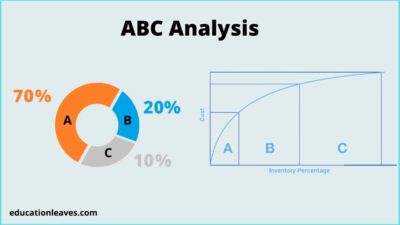
The ABC Method can be applied to provide efficient solutions in various contexts, including personal time management, project management, and inventory control. It is highly beneficial for the following:
1. Identifying high-impact activities or tasks by grouping them based on their degree of importance, enabling individuals and companies to focus on activities most likely to affect their general aims and objectives.
2. Increasing productivity by focusing on tasks, especially during the initial phase.
3. Making decisions on delegating, eliminating, or postponing work by identifying tasks that can be assigned, postponed, or eliminated to maximize the use of time and resources.
For instance:
– In personal time management, the ABC Method helps people prioritize their daily tasks and concentrate on activities most likely to support their goals and objectives. It involves task classification based on the degree of importance, enabling better allocation of time and energy for personal growth and higher production.
– Project managers use the ABC Method to rank tasks within a project, ensuring that essential tasks are completed first, allocating resources correctly, meeting critical deadlines, and improving overall project results.
– Companies could use the ABC Method to rank their inventory in order of importance, concentrating on high-value goods, known as A-items, to maximize inventory management operations and boost efficiency.
– Teams also use the ABC Method to prioritize activities cooperatively, ensuring that every member agrees with the team’s goals and objectives, thus increasing the team’s overall output, communication, and cooperation.
Finally, the ABC Method is a flexible approach that helps individuals, groups, and companies make wiser judgments about the use of their time and money by classifying actions or objects based on their importance or value, focusing on high-impact activities to reach their goals, improving productivity, and providing a clear framework for organizing events in a deliberate and orderly way.

Case Studies: Prioritization Techniques
Eisenhower Matrix (Urgent-Important Matrix)
1. General Electric (GE):
• Situation: GE implemented the Eisenhower Matrix to manage its large portfolio of projects across various divisions.
• Application: They categorized tasks into urgent/important, not urgent/important, urgent/not important, and not urgent/not important.
• Outcome: This helped GE executives focus on strategic planning (important but not urgent) rather than getting bogged down with daily operational issues (urgent but not important).
2. Microsoft:
• Situation: Microsoft adopted the Eisenhower Matrix during a major product development cycle.
• Application: They used the matrix to prioritize feature development, focusing on high-impact, strategic features (important but not urgent) over quick fixes (urgent but not important).
• Outcome: This prioritization led to the successful and timely release of products with significant user value and long-term benefits.
ABC Method
1. Walmart:
• Situation: Walmart uses the ABC method to manage inventory and streamline operations.
• Application: They classify products into three categories:
– A-items (high-value, high-priority items that contribute significantly to sales)
– B-items (moderate value, moderate priority)
– C-items (low-value, low priority)
• Outcome: This classification helps Walmart focus on ensuring A-items are always in stock, optimizing inventory levels, and reducing holding costs for B and C-items.
2. Siemens:
• Situation: Siemens employs the ABC method in their procurement process.
• Application: They categorize suppliers and procurement items into A, B, and C classes based on their impact on production and cost.
• Outcome: By focusing more resources on managing A-class suppliers and items, Siemens ensures better quality control, timely deliveries, and cost efficiency.
3. Ford Motor Company:
• Situation: Ford applies the ABC method in its supply chain management.
• Application: They categorize components and raw materials into A, B, and C classes based on their usage rate, lead time, and cost.
• Outcome: This allows Ford to maintain optimal inventory levels, prioritize critical components, and reduce excess inventory, leading to a more efficient and cost-effective supply chain.
These examples illustrate how the ABC method can be effectively applied in various business contexts to optimize inventory management, streamline procurement processes, and enhance supply chain efficiency.

Exercise: Applying the Eisenhower Matrix for Effective Task Prioritization
• Divide the participants into pairs.
• Provide each pair with sticky notes or index cards and a copy of the Eisenhower Matrix template.
• Ask each pair to brainstorm and list 10-15 tasks or activities they commonly encounter in their work or personal life on sticky notes or index cards.
• Encourage them to think of various tasks, including urgent deadlines, long-term projects, routine activities, and low-value tasks.
• Instruct each pair to categorize their tasks into the four quadrants of the Eisenhower Matrix by placing the sticky notes or index cards on the corresponding sections of the template.
• Encourage partners to discuss why they placed each task in its chosen quadrant, focusing on the urgency and importance of each task.
• Bring all pairs together for a group discussion.
• Ask a few pairs to share their categorized tasks and the reasoning behind their placement.
• Facilitate a discussion on the similarities and differences in categorizing tasks.

Course Manual 10: Goal-Based Model
The goal-based model is a fundamental concept for those concerned with their corporate efficiency. It emphasizes the need for well-defined goals as the cornerstone of a company’s success. This paradigm is built on the belief that a company cannot be considered successful unless it has achieved its self-set goals. Developed in the mid-20th century, the goal-based model is a management theory that integrates organizational behavior, performance management, and strategic planning to ensure every aspect of a company aligns with its overall goals.
Core Principles of the Goal-Based Model
The Goal-Based Model asserts that a company’s primary responsibility is to achieve its goals, typically expressed through a mission statement and specific, measurable targets. These goals define success and provide clear direction for resource allocation and decision-making processes. Without well-defined goals, the model suggests that companies cannot create a consistent action plan, making performance evaluation and the implementation of effective strategies challenging.
Benefits of the Goal-Based Model
One of the most significant benefits of the Goal-Based Model is its emphasis on clear, measurable objectives. Companies that set specific, quantifiable goals can assess progress, identify areas for improvement, and make data-driven decisions. This clarity also simplifies accountability, making it easier to hold individuals and teams responsible for achieving specific objectives. Additionally, the model focuses on results rather than activities, ensuring that every effort aligns with the desired outcomes.
Strategic Planning
In the Goal-Based Model, strategic planning is crucial and involves identifying the company’s long-term goals and objectives. This process includes a thorough analysis of the company’s internal and external environments, the development of strategic priorities, and the creation of a plan to achieve these goals. The strategic plan acts as a roadmap, guiding the company’s future activities and decisions to ensure all efforts are directed toward attaining the stated objectives.
Performance Management
Performance management is another essential component of the Goal-Based Model. It involves monitoring and evaluating progress toward the established objectives. This process includes setting performance criteria, tracking actual performance, and taking corrective action if necessary. Performance management ensures the company stays on course to meet its goals and can adjust to overcome any obstacles.
Organizational Behavior
Organizational behavior is integral to the goal-based model, influencing the company’s cultural and practical aspects. Understanding and managing the behaviors of individuals and groups within the company ensures their actions align with corporate goals. This includes fostering a culture of accountability, teamwork, and continuous improvement. Aligning employees’ behavior with the company’s aims helps build a unified and motivated workforce dedicated to achieving the intended goals.
Resource Allocation
Effective implementation of the Goal-Based Model depends on the intelligent and efficient use of resources. This involves allocating time, money, personnel, and other resources to support the company’s goals. By focusing resources on activities that most impact desired outcomes, companies can achieve high levels of efficiency and effectiveness.
Decision-Making Processes
In the Goal-Based Model, a company’s goals and objectives guide decision-making. This requires decisions to be based on accurate information and aligned with strategic objectives and desired outcomes. Using goals as a framework for decision-making helps ensure that actions support the company’s overall mission and vision.
Implementing the Goal-Based Model: A Comprehensive Guide to Achieving Business Effectiveness
Utilizing the Goal-Based Model in an organization helps ensure that the company’s objectives are well-defined, realistic, and aligned with its strategic vision through several necessary steps. These actions are meant to safeguard the strategic vision of the company. The process consists of several primary components that can be broken down into:
1. Environmental Analysis
The first step in the process involves closely examining both the internal and external environments. This step is crucial in identifying potential risks and opportunities that may impact the company’s ability to achieve its goals. This may include evaluating the organization’s strengths and weaknesses, operational capacity, and resource availability in the internal environment. External analysis involves studying market trends, the competitive landscape, changes in legal regulations, and other external factors that may influence the company. This in-depth analysis helps in developing goals that align not only with the company’s strategic vision but also with the state of the market and are realistic and relevant.
2. Setting Clear Goals
Based on the knowledge obtained from the environmental assessment, the next step is to precisely define clear, unambiguous, and quantitative goals. These goals should be challenging yet attainable in order to pave a clearer path for the business ahead. Ensuring that these goals align with the company’s mission, vision, and core values is essential in the goal-setting process. Involving key stakeholders in this process is necessary to ensure that the goals are comprehensive and supported by a wide spectrum of company employees.
3. Action Plan Development
Once the goals have been established, the next phase is to analyze and translate them into actionable strategies. This involves outlining specific timelines, resources, and activities required to achieve each goal. The strategies should be comprehensive and include milestones and key performance indicators (KPIs) if tracking success. Developing a successful plan requires a collaborative approach involving multiple departments and teams. This ensures that the plans are feasible and that resources are allocated reasonably.
4. Implementation
Once the strategies have been developed, implementation takes a prominent role. During this phase, the outlined activities are executed, efforts are coordinated across various divisions of the business, and resources are utilized as efficiently as possible. Clear communication and coordination during this phase will help ensure that everyone is aligned and working towards the same objectives.
5. Monitoring and Evaluation
Key elements of the Goal-Based Model include regular monitoring and evaluation. This involves regularly tracking progress towards the set goals and key performance indicators using qualitative and quantitative measures. Regular reviews and performance assessments are an effective way to identify deviations from the strategy and understand the reasons behind such deviations. This step is crucial to ensure that the company stays on track to achieve its goals and can make informed decisions regarding any necessary changes.
6. Performance Improvement and Adaptation
Based on the findings from the monitoring and evaluation phase, the final step involves implementing any necessary changes to the executed plans and activities. This may include reallocating resources, adjusting schedules, and even reinterpreting objectives in response to changing circumstances. The ability to adapt and evolve is crucial in ensuring that the Goal-Based Model remains relevant and effective.
Adopting the Goal-Based Model effectively can help companies ensure that their goals are well-defined, realistic, and adaptable to changing conditions in line with their strategic vision. This systematic approach can help companies maintain their focus, coordination, and responsiveness, ultimately leading to sustained success and efficiency.
Balancing Precision and Flexibility: The Limitations of the Goal-Based Model in Business Effectiveness
Despite the positive aspects of the Goal-Based Model, there are some potential drawbacks and limitations. One common concern is that it may lead to an excessive focus on specific goals, potentially overlooking broader organizational needs and the external environment. This intense focus on predefined goals could result in tunnel vision, causing managers and employees to neglect other critical aspects of the company, such as employee well-being, customer satisfaction, and long-term strategic planning.
Furthermore, rigid adherence to predetermined goals may stifle creativity and adaptability within a business, potentially hindering long-term success in a rapidly changing corporate environment. Emphasizing predefined goals may discourage companies from deviating from their original plans, even in the face of changing circumstances. This inflexibility could prevent businesses from capitalizing on new opportunities or effectively addressing challenges, thereby impeding their growth and competitiveness.
Moreover, the rigidity of the Goal-Based Model may result in missed opportunities for innovation. When individuals and teams are evaluated solely on their ability to achieve specific goals, there is often little room for experimentation and creative problem-solving activities, which are essential components of creativity. This environment can hinder new ideas and discourage people from taking risks. Businesses that are overly focused on their current approach could find themselves lagging behind competitors who are more adaptable and willing to explore new growth opportunities.
The model’s emphasis on measurable objectives can sometimes lead to a short-term outlook. Organizations may prioritize meeting immediate goals over long-term sustainability. This short-term focus on performance indicators may result in actions to boost short-term performance, but these actions could be detrimental to the company’s long-term health. For instance, cost-cutting measures to meet financial goals could decrease employee morale and productivity, leading to higher employee turnover rates and decreased creativity over time.
Another concern is that the pressure to achieve specific goals could lead to unethical behavior or the manipulation of results. In order to meet their targets, managers and staff members may resort to dishonest means, such as shortcuts, data manipulation, or other unethical activities. When this occurs, not only does the company’s credibility suffer, but serious legal and reputational issues could arise.
In summary, while the Goal-Based Model provides a systematic approach to achieving corporate performance, it is important to acknowledge and address its limitations. Any organization aiming for long-term success must balance goal achievement with ethical considerations, flexibility, and creativity. Recognizing these potential pitfalls enables companies to navigate the complexities of goal setting and performance management effectively, ensuring that pursuit of goals does not compromise the overall well-being and adaptability of the company.
Despite these challenges, the Goal-Based Model remains a valuable tool for enhancing the efficiency of corporate operations. Thanks to its systematic approach to goal setting and performance monitoring, organizations are provided with a clear framework to methodically pursue their objectives. When applied thoughtfully and with careful consideration, this approach can lead to sustained organizational success by ensuring that every action is strategically aligned with the company’s vision and goals.

Case Study: Implementing the Goal-Based Model at Google
Introduction
Google, a subsidiary of Alphabet Inc., is renowned for its innovative culture and exceptional business effectiveness. One of the critical frameworks contributing to its success is the Goal-Based Model, mainly through implementing OKRs (Objectives and Key Results). This case study explores how Google employs the Goal-Based Model to maintain market leadership and foster innovation.
Background
In the early 2000s, Google adopted the OKR system, a specific approach to the Goal-Based Model, to streamline its goal-setting and performance management processes. OKRs were introduced by John Doerr, an early investor in Google who had learned about the system during his time at Intel. The primary aim was to align individual and team efforts with the company’s overarching objectives, ensuring everyone worked towards the same goals.
Step 1: Environmental Analysis
Google’s success with OKRs began with thoroughly analyzing its internal and external environments. Internally, Google recognized its strengths in technology, talent, and innovation while identifying potential communication and coordination weaknesses across rapidly growing teams. Externally, Google analyzed market trends, competitive pressures, and technological advancements to identify opportunities for growth and possible threats.
Step 2: Goal Setting
Based on this analysis, Google set ambitious yet achievable goals aligned with its mission “to organize the world’s information and make it universally accessible and useful.” For instance, a significant goal was to improve the efficiency and reach of its search engine. Each objective was supported by critical results and specific, measurable milestones indicating progress toward the goal. For example, an aim to enhance search speed might include key results like “reduce average search response time by 20%” and “increase the percentage of searches returning relevant results by 15%.”
Step 3: Strategy Development
Google broke down its high-level goals into detailed strategies, including specific projects and initiatives across various departments. For example, improving search speed involved optimizing algorithms, upgrading server infrastructure, and conducting user experience research. Google also fostered a culture of transparency and alignment by making OKRs visible to all employees, ensuring everyone understood how their work contributed to the company’s objectives.
Step 4: Implementation
Google implemented these strategies through coordinated efforts across teams and departments. Each team developed its OKRs that supported the company’s overarching goals. Managers and employees had regular check-ins to discuss progress, address challenges, and adjust tactics as needed. The iterative nature of OKRs allowed Google to remain agile and responsive to new information and changing conditions.
Step 5: Monitoring and Evaluation
Google continuously monitored progress through regular OKR reviews. These reviews included quantitative assessments, such as tracking key performance indicators (KPIs), and qualitative evaluations, like team feedback and peer reviews. By maintaining a rigorous evaluation process, Google ensured that it stayed on track and could quickly identify and address any deviations from the plan.
Step 6: Adjustment and Improvement
Based on the evaluation findings, Google made necessary adjustments to its strategies and goals. For example, if a particular initiative did not yield the expected results, Google would analyze the underlying issues, learn from the experience, and pivot to a more practical approach. This iterative process of setting, tracking, and refining goals helped Google maintain its competitive edge and drive continuous improvement.
Outcomes
Implementing the Goal-Based Model through OKRs has significantly contributed to Google’s success. The structured approach to goal setting and performance management has enabled Google to achieve remarkable milestones, such as developing groundbreaking technologies like Google Search, Google Maps, and the Android operating system. Moreover, the transparency and alignment fostered by OKRs have helped create a cohesive and motivated workforce, driving sustained innovation and business effectiveness.
Conclusion
Google’s use of the Goal-Based Model through OKRs is a testament to the effectiveness of this approach in achieving business success. By setting clear, measurable goals and fostering a culture of transparency and continuous improvement, Google has managed to stay at the forefront of the technology industry. This case study illustrates the power of the Goal-Based Model in aligning organizational efforts, driving performance, and maintaining a competitive edge in a rapidly evolving market.

Exercise: Setting and Achieving Goals with the Goal-Based Model
• Each group sets a specific, measurable, achievable, relevant, and time-bound (SMART) goal.
• Groups write their goal on a sticky note and place it on the flip chart or whiteboard.
• Groups brainstorm strategies to achieve their goal. They should consider specific actions, resources needed, and potential challenges.
• Groups list their strategies on the flip chart or whiteboard.
• Each group creates a simple implementation plan for one of their strategies. This should include critical steps, resource allocations, and responsibilities.
• Groups write their implementation plan on the flip chart or whiteboard.
• Groups develop a basic plan for monitoring progress and adjusting their strategy if necessary. This should include key performance indicators (KPIs) and review intervals.
• Groups write their monitoring and adjustment plan on the flip chart or whiteboard.

Course Manual 11: Key Performance Indicator and Metrics
We have previously touched on Key Performance Indicators in previouse Course Manuals, but now we will discuss them in more detail and discover the different types. As you know, Metrics and key performance indicators (KPIs) are essential for the success of any company and should not be underestimated. With these tools, you can easily track your progress towards your goals over time. These indicators are crucial for strategic planning and operational excellence. They enable companies to track their progress, make well-informed decisions, and maintain operational excellence by relying on accurate information. Keeping a close eye on performance and regularly assessing it is crucial for staying competitive and achieving sustained success in a dynamic organizational landscape.
Ultimately, measures and key performance indicators (KPIs) are crucial in guiding businesses towards their goals. Performance indicators, or KPIs, evaluate how well an organization is progressing towards its primary business goals. However, metrics are large datasets that assess performance in different areas. When evaluating employee performance, these two methods complement each other seamlessly. When all these factors are considered, they provide a comprehensive understanding of a company’s performance and overall health. When considering this perspective, we believe a range of metrics, such as operational efficiency, customer satisfaction, financial performance, and other relevant factors, are important.
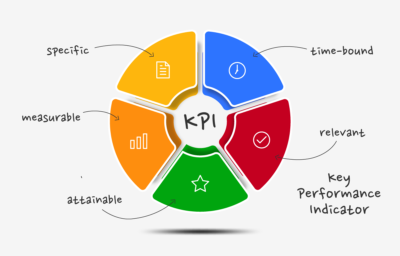
It is crucial for corporations to track their financial performance metrics as these key performance indicators (KPIs) provide valuable insights into the economic viability of the business. Evaluating a company’s performance and growth potential requires consideration of important metrics such as increased income, improved net profit margin, and return on investment (ROI). By analyzing these financial KPIs, stakeholders can gain a better understanding of the company’s economic situation and monitor its progress towards its goals.
Customer metrics play a vital role in assessing a company’s ability to meet and exceed customer expectations. Examining key metrics such as customer retention rate, net promoter score (NPS), and customer satisfaction (CSAT) can provide valuable insights into customer behavior, service delivery, and long-term customer relationships. Excelling in customer metrics can significantly increase the likelihood of retaining existing customers and attracting new ones, contributing to overall company expansion.
Evaluating operational success involves analyzing how well a company carries out its internal operations. Performance indicators are valuable in this context as they assess the efficient use of resources to provide goods and services. Key operational metrics include average order fulfillment time, inventory turnover rate, and worker productivity. Improving processes can help businesses enhance product quality, reduce costs, and increase overall productivity.
Metrics and KPIs are crucial for businesses to achieve their strategic objectives, ensure smooth operations, and make well-informed decisions. Adopting a systematic approach to assessing progress and identifying areas of concern is essential for success in today’s competitive business environment. It is important for businesses to go beyond just using measures and KPIs to succeed and grow.
Essential Financial Performance Metrics: Key Indicators for Organizational Profitability and Growth
Understanding a company’s profitability and financial situation involves assessing financial performance measures. These indicators provide analysis of a company’s financial resource management, cost control, and profitability. Here are some important steps for evaluating economic performance:
1. Revenue Growth:
Revenue growth, often expressed as a percentage, measures how much a company’s revenues increase during a specific period. It indicates the company’s ability to grow its customer base and expand market influence. Factors that contribute to revenue growth include changes in sales volume, prices, market growth, and the introduction of new products or services. Consistent revenue growth over time demonstrates that the company is effectively marketing and selling its offerings.
2. Net Profit Margin:
The net profit margin is a crucial profitability indicator that shows the percentage of revenue remaining as profit after deducting all expenses, including operational costs, interest, taxes, and other expenses. It is calculated by dividing the net profit by the total revenue and then multiplying the result by 100. A higher net profit margin reflects better operational efficiency and financial performance, as the company retains a larger portion of its revenue as profit.
3. Return on Investment (ROI):
ROI compares the profit generated from an investment to the initial investment amount, helping determine the investment’s profitability. To calculate ROI, divide the net return from the investment by the initial investment amount and then multiply the result by 100 to express it as a percentage. ROI is a versatile indicator used to evaluate the success of various investments, such as capital expenditures, new projects, and marketing campaigns. Higher ROI indicates more profitable investments, aiding in decision-making for the company.
4. Gross Profit Margin:
The gross profit margin measures the percentage of income remaining after deducting the cost of goods sold (COGS) from total revenue. It is calculated by subtracting the COGS from total revenue, dividing the result by total revenue, and then multiplying by 100 to express it as a percentage. This indicator focuses on the profitability of primary business operations, excluding secondary expenses like taxes and administrative charges. A higher gross profit margin signifies effective control of manufacturing expenses and the ability to sell products at premium prices compared to the market average.
The operating cash flow of a corporation is a measure of the cash generated from the core business activities of the company. This data clearly demonstrates the company’s ability to cover its debts, invest in new opportunities, and generate enough cash to maintain and expand its operations. Operating cash flow is based on actual cash inflows and outflows, unlike net income, which can be affected by non-cash items such as depreciation. A positive operating cash flow indicates that the business is in a strong cash position, enabling it to meet its debt obligations and invest in future growth.
The Importance of Financial Performance Measures
The following are some of the main reasons why financial performance assessments are crucial:
• Strategic decision-making: These indicators provide vital information for strategic decision-making, helping companies allocate resources effectively and pursue profitable opportunities.
• Performance evaluation: Companies can continuously monitor financial data by comparing their performance against industry standards and historical data. This helps them identify areas of strength and areas for improvement to better serve their customers.
• Investor confidence: Strong financial performance indicators attract investors by demonstrating the profitability and growth potential of the business, making it easier for the company to access funds.
• Operational efficiency: These metrics highlight the success of different business operations and provide guidance for efforts to streamline processes, reduce expenses, and increase profitability.
• Risk management: Financial measurements help in identifying potential financial risks, allowing proactive measures to mitigate these risks and ensure long-term stability.
Utilizing financial performance measures, which are essential tools, greatly helps in managing and improving a company’s financial position. These indicators assist companies in making informed decisions, enhancing their operations, and achieving sustainable growth by revealing the growth of income, profitability, investment efficiency, and cash flow management.
Key Customer Metrics: Essential KPIs for Measuring Satisfaction, Engagement, and Retention
Key Performance Indicators (KPIs), also known as customer metrics, assess various aspects of customer satisfaction, engagement, and retention. These measures provide critical insights into the extent to which a business is meeting customer needs, the level of customer loyalty, and areas that may require improvement to enhance the overall customer experience. Focusing on these KPIs helps companies improve their relationships with customers, reduce customer attrition, and promote sustainable growth.
Customer Satisfaction Score (CSAT)
CSAT, or Customer Satisfaction Score, is a simple and extensively used metric for assessing consumer contentment with a company’s products or services. Usually evaluated through surveys, customers rate their satisfaction on a scale between 1 and 5 or 1 and 10. The CSAT score is then found by averaging all the answers. A high CSAT score indicates that customers are happy with their experience, while a low CSAT score highlights areas needing improvement. Regular CSAT data collection helps companies identify customer satisfaction trends and promptly address any issues that may arise.
Net Promoter Score (NPS)
The Net Promoter Score (NPS) is a widely used indicator of client loyalty and a predictor of firm growth. Clients rate their likelihood of referring the company to others on a scale from 0 to 10. Responses categorize customers into three groups: Promoters (9–10), Passives (7–8), and Detractors (0–6). The NPS is calculated by subtracting the percentage of Detractors from the percentage of Promoters. A low NPS indicates the need for improvement in customer experience, while a high NPS suggests strong customer loyalty and the potential for positive word-of-mouth recommendations.
Customer Retention Rate
The Customer Retention Rate measures the proportion of consumers who continue to interact with a company over a specific period. To calculate it, subtract any new customers gained during that period from the total number of customers at the end, then divide by the total number of customers at the beginning. A high retention rate indicates customer loyalty and satisfaction, while a low retention rate suggests possible issues with customer satisfaction or service quality. Improving retention rates helps reduce customer acquisition costs and ensures long-term profitability.
Customer Lifetime Value (CLV)
Customer Lifetime Value (CLV) estimates the total revenue a single customer account could generate over their relationship with a firm. It is calculated by multiplying the average purchase value, average purchase frequency, and average customer lifespan. CLV helps companies assess the long-term value of their customers and guide investment decisions in marketing, sales, and customer service. Focusing on increasing CLV strengthens customer relationships and boosts profitability.
Churn Rate
The Churn Rate measures the proportion of customers who stop using a company’s products or services over a given period. It is calculated by dividing the number of customers who left during the period by the total number of customers at the start. A high churn rate indicates many customers are leaving, which could be due to dissatisfaction or better offers from competitors. Reducing churn helps maintain a consistent customer base and increases revenue. Addressing the root causes of customer dissatisfaction and improving service quality can lower churn rates.
Value of Customer-Related Metrics
Customer metrics are crucial for several reasons:
• Regular monitoring of customer happiness and loyalty helps companies identify areas for improving the overall customer experience.
• Understanding and addressing factors affecting client loyalty is essential for retaining customers and building enduring relationships.
• Metrics like NPS and CLV provide insights into future revenue and profitability, aiding in the company’s growth strategy.
• Focusing on customer retention and satisfaction reduces the need for expensive customer acquisition initiatives, lowering overall costs.
• Consistent analysis and improvement of customer metrics help companies develop a loyal client base and differentiate from competitors.
Understanding and improving customer metrics are vital for enhancing interactions and building customer loyalty. By focusing on key performance indicators (KPIs) such as customer satisfaction, NPS, retention rate, CLV, and churn rate, companies can enhance customer satisfaction, foster loyalty, and drive sustainable growth.
Crucial Operational Efficiency Metrics: Key KPIs for Enhancing Productivity and Effectiveness
Essential Key Performance Indicators (KPIs) focused on the efficiency and effectiveness of a company’s activities are metrics for operational efficiency. These operations include general productivity, supply chain management, and manufacturing techniques. These indicators provide information on how efficiently a company utilizes its resources to provide goods and services. They help drive operational excellence and highlight areas needing improvement. Some of the most crucial steps for operational efficiency are explained here:
Average Order Fulfillment
The average order fulfillment time is the period required to process and deliver customer orders, from when an order is placed until the customer receives the completed product. This measure is crucial for assessing the effectiveness of the order processing system and supply chain performance. Shorter fulfillment times generally indicate a more efficient company, boosting customer satisfaction and providing a competitive edge. Monitoring this metric helps businesses identify issues and implement changes to reduce delays in order processing.
Inventory Turnover Rate
The inventory turnover rate measures the frequency with which goods are sold and replaced over a designated period. It is calculated by dividing the cost of goods sold (COGS) by the average inventory for the same period. A high inventory turnover rate indicates efficient inventory management, reducing costs and minimizing the risk of obsolescence. Conversely, a low turnover rate could point to insufficient sales strategies, poor product demand, or excessive inventory levels. Optimizing inventory turnover helps balance eradicating excess inventory and ensuring enough supply to meet consumer demand.
Employee Productivity
Employee productivity, usually measured in terms of money or units generated per person, assesses the production output per individual. This indicator helps gauge the efficiency and effectiveness of personnel. Low employee productivity could suggest issues such as inadequate training, poor resource allocation, or lack of motivation, while high productivity indicates that employees are actively contributing to the company’s objectives. Businesses can boost worker productivity through performance incentives, improving the work environment, and investing in training programs.
First Pass Yield (FPY)
First Pass Yield (FPY) refers to the percentage of perfectly manufactured goods without the need for further modification. It is calculated by dividing the number of products that meet quality criteria on the first attempt by the total production count. A high FPY indicates efficient quality control systems and effective manufacturing processes, reducing costs and enhancing customer satisfaction. Monitoring FPY helps identify areas of the manufacturing process that may need improvement to increase product quality and reduce waste (GoRamp).
Overall Equipment Effectiveness (OEE)
Overall Equipment Effectiveness (OEE) measures the performance of industrial machinery based on three factors: availability, performance, and quality. Availability considers the proportion of scheduled time the equipment is available for production. Performance compares the actual speed of the equipment to its maximum possible speed. Quality is determined by the ratio of good units produced to the total units produced. OEE provides a comprehensive view of the effectiveness of manufacturing equipment. High OEE values indicate efficient operations, while low scores highlight areas for improvement to increase output.
The Value of Operational Effectiveness KPIs
Operational efficiency metrics are crucial for several reasons:
• Measuring and analyzing these factors helps companies identify areas of inefficiency and implement solutions to increase productivity.
• Effective operations reduce costs related to production and inventory, directly impacting the company’s bottom line.
• Metrics like First Pass Yield (FPY) and Overall Equipment Effectiveness (OEE) help reduce waste and rework costs, ensuring high product quality.
• Effective order fulfillment and high-quality products enhance the customer experience and satisfaction.
• Continuous monitoring of key indicators fosters a culture of constant improvement, driving teams to strive for operational excellence.
Operational efficiency measures are vital for managing and improving the effectiveness and efficiency of a company’s activities. By focusing on essential KPIs such as average order fulfillment time, inventory turnover rate, employee productivity, first pass yield, and overall equipment effectiveness, companies can optimize processes, reduce costs, and achieve higher productivity and customer satisfaction.

Case Study: Improving Operational Efficiency at Toyota
Background:
Toyota Motor Corporation, a global leader in the automotive industry, is renowned for its efficient production system, the Toyota Production System (TPS). This system emphasizes operational efficiency, quality, and continuous improvement. Despite its success, Toyota identified areas within its North American operations that could benefit from enhanced efficiency metrics, particularly on Overall Equipment Effectiveness (OEE) and Inventory Turnover Rate.
Challenge:
In the early 2000s, Toyota’s North American plants faced challenges related to production delays and inventory management inefficiencies. These issues led to increased costs and impacted customer satisfaction. The company needed to address these inefficiencies to maintain its competitive edge and ensure the timely delivery of high-quality vehicles.
Metrics Used:
1. Overall Equipment Effectiveness (OEE):
• Toyota aimed to maximize the efficiency of its production machinery. Low OEE scores were identified in several plants, indicating that equipment was not being used to its full potential due to frequent breakdowns, slow cycle times, and quality issues.
2. Inventory Turnover Rate:
• Toyota’s inventory turnover rate was lower than desired, meaning that inventory was not being sold and replaced quickly enough. This led to high holding costs and increased the risk of inventory obsolescence.
Implementation:
1. Improving OEE:
• Toyota implemented a rigorous maintenance and quality control program across its North American plants. This program included regular preventive maintenance schedules, real-time monitoring of equipment performance, and rapid response teams for addressing breakdowns.
• Lean manufacturing techniques, such as Kaizen (continuous improvement) and Just-In-Time (JIT) production, were reinforced. Employees at all levels were trained to identify inefficiencies and suggest improvements.
2. Enhancing Inventory Turnover:
• Toyota optimized its supply chain using JIT principles, ensuring that inventory arrived only as needed for production. This minimized excess inventory and reduced holding costs.
• Advanced forecasting tools were introduced to better predict demand and align production schedules accordingly. This helped maintain the right amount of inventory and reduce overstock situations.
Results:
1. Increased OEE:
• Within two years, Toyota saw significant improvements in OEE across its North American plants. The average OEE score increased by 15%, resulting in fewer equipment breakdowns and higher production speeds.
• Enhanced equipment efficiency led to a 10% increase in production output without additional capital investment in new machinery.
2. Higher Inventory Turnover Rate:
• The implementation of JIT and improved demand forecasting increased the inventory turnover rate by 20%. This reduction in inventory levels decreased holding costs and minimized the risk of obsolescence.
• The improved inventory turnover rate also contributed to a faster response to market demands and a more agile production system.
Conclusion:
By focusing on key operational efficiency metrics such as OEE and inventory turnover rate, Toyota successfully enhanced the efficiency of its North American operations. The improvements reduced costs, increased production output, and strengthened Toyota’s reputation for quality and reliability. This case study underscores the importance of leveraging operational efficiency metrics to drive continuous improvement and maintain a competitive advantage in the industry.

Exercise: Developing and Analyzing Key Performance Indicators (KPIs)

Course Manual 12: Benchmark Analysis
It is crucial for companies to continuously track their performance and proactively implement ideas to drive improvement in today’s competitive corporate landscape. Performance analysis and benchmarking are particularly valuable tools for organizations striving for success. In this introduction, we will discuss these strategies, emphasizing their significance in evaluating a company’s performance against industry best practices. Let’s identify areas where the business could enhance its effectiveness.
Organizations use benchmarking to compare their operational processes and key performance indicators (KPIs) with those of other organizations. Benchmarking helps to identify areas for improvement and implement best practices to enhance performance. There are three types of benchmarking: competitive, process, and strategic. Process benchmarking compares an organization’s overall performance with that of its close competitors, providing a more realistic assessment of its position. Strategic benchmarking involves comparing an organization’s business model and strategy with those of highly successful companies. Benchmarking tools help companies identify operational inefficiencies, evaluate their performance compared to others, and discover best practices to support their growth.
On the other hand, performance analysis is a thorough technique for reviewing performance data to identify trends, patterns, and areas for improvement within a company. This process involves collecting and evaluating data on various aspects of organizational performance, including financial performance, customer satisfaction, operational effectiveness, and personnel productivity. By using data-driven performance analysis, companies can gain a better understanding of their strengths and areas for improvement, enabling them to identify the root causes of performance issues and develop strategies to address them.
In the course, students will learn about benchmarking and performance analysis in depth. Participants will learn how to effectively examine performance data and derive meaningful insights from it. They will also develop the skills to apply best practices and benchmarking procedures, as well as understand how to use competitive benchmarking to assess their position relative to other competitors. Mastery of these techniques can lead to overall performance improvement by identifying areas for development and creating specific action plans to address them.
Implementing performance analysis and benchmarking can transform how companies approach performance management. These tools provide a roadmap for future growth and a clear understanding of how a company compares to its competitors. Addressing performance gaps can result in greater operational efficiency, improved customer satisfaction, and a competitive advantage over rivals. By equipping participants with the necessary tools to foster a growth mindset and cultivate a culture of excellence within their organizations, this program can significantly enhance their performance.
Mastering Competitive Benchmarking: Strategies for Elevating Your Organization to Industry Leadership
When discussing competitive benchmarking, we refer to strategic approaches for comparing your company to industry leaders.
Achieving long-term success in today’s constantly changing corporate landscape relies on how well your company performs compared to industry leaders and direct competitors. Competitive benchmarking provides a systematic method for conducting this research, enabling organizations to pinpoint performance gaps, uncover best practices, and execute initiatives to enhance their market position. This guide extensively covers competitive benchmarking, equipping participants with the knowledge and tools needed to grow their businesses.
The first step is to develop an understanding of competitive benchmarking.
Comparatively benchmarking is evaluating your company’s performance, policies, and practices against the most effective rivals in the sector. This comparison will enable your company to find areas where it might leverage market best practices and see potential for development. Getting insights that can be applied is the most crucial objective since it will help to direct operational enhancements and strategic decisions.
Identifying the Most Important Measures to Track
Your benchmarking activities will only succeed if you select the right metrics. These metrics should reflect various facets of your company operations and align with your strategic goals.
Necessary Measurements:
• Financial Measures: Include profit margins, return on investment (ROI), and revenue growth.
• Operational Measures: Examples include efficiency ratios, manufacturing costs, and supply chain performance.
• Customer Metrics: Include consumer satisfaction, client retention rates, and market share.
• Innovation Metrics: Include R&D expenditure and the time required to introduce innovative products to market.
Data Collection Methods and Policies
An effective benchmarking process begins with the collection of accurate and consistent data. Depending on the data characteristics and available resources, various strategies can be employed.
Methods for Data Collection:
• Surveys and Questionnaires: Gather direct feedback from customers, staff members, and partners.
• Industry Reports and Publications: Provide third-party analysis and insights.
• Internal Data: Includes performance reports, financial statements, and operating logs.
• Competitive Intelligence: Involves gathering data from public sources, industry events, and market research companies.
Data Interpretation and Analysis
Analyzing and interpreting data is crucial to derive meaningful insights. Comparing the data to industry standards helps identify performance gaps.
Analytical Techniques:
• Gap Analysis: Identifies differences between your performance and that of industry leaders.
• SWOT Analysis: Evaluates a company’s strengths, weaknesses, opportunities, and threats compared to its competitors.
• Trend Analysis: Examines performance trends over time to identify patterns and predict future performance.
Developing Strategies and Competitive Plans
Benchmarking aims to translate insights into strategies for enhancing organizational performance. Setting realistic goals, creating action plans, and regularly monitoring progress are key to achieving this.
Strategic Planning Methods:
• Adopting Best Practices: Incorporate proven methods from industry experts into your operations.
• Innovative Improvements: Develop unique solutions that provide a competitive edge.
• Performance Monitoring: Regularly evaluate key indicators and adjust strategies as necessary.
Mastering Process Benchmarking
Process benchmarking is a focused approach aimed at improving entity performance by comparing specific business practices with those of highly successful companies. This strategy helps companies find and implement the most effective tactics, leading to overall operational excellence, reduced expenses, and increased productivity. This comprehensive guide covers identifying essential processes, selecting benchmarking partners, and incorporating best practices into your operations.
Understanding and applying the strategies discussed in this session will equip participants to conduct effective benchmarking, gain actionable insights, and drive their companies toward enhanced performance.
Process benchmarking involves the study and comparison of your company’s specific operations with those of industry leaders or the best in the field. Unlike competition benchmarking, which focuses on general performance measurements, process benchmarking delves into the detailed processes and activities of a business.
Steps in Benchmarking
1. Identify Crucial Processes for Benchmarking
Begin by determining which processes most significantly impact your business’s performance and where improvements are most needed. Accurate maps of your current processes will help you better understand system performance.
Ranking Priorities:
• Identify activities that most influence customer satisfaction and overall company performance.
• Define specific benchmarking goals, such as cost reduction, time savings, and quality improvement.
2. Choose Benchmark Partners Reflecting Your Work
Select companies that excel in specific processes relevant to your needs. Industry leaders are often those renowned for their operational excellence.
Comparative Analysis Across Fields:
• Sometimes, the best ideas come from different industries.
• Select accessible companies willing to share precise operational information.
• Collect and process data through various methods.
Data Collection Methods
• Direct Observation: Visit benchmarking partners’ sites and observe their operations.
• Surveys and Questionnaires: Compile comprehensive process data.
• Performance Metrics: Measure metrics like cycle time, defect rates, and cost per unit.
• Process Flow Analysis: Identify deviations through sequential comparison.
• Statistical Analysis: Use quantitative data to benchmark performance criteria.
• Root Cause Analysis: Identify elements causing performance fluctuations.
3. Finding and Implementing Effective Strategies
After analyzing the data, choose the best practices to enhance your processes.
Gap Analysis: Identify areas where your processes fall short of the best standards. Determine Best Practices: Identify specific procedures that improve performance. Feasibility Analysis: Ensure the procedures are suitable for your business.
Implementation Phases
• Pilot Testing: Apply changes on a small scale to assess and adjust as needed.
• Full Implementation: Apply successful changes throughout the business.
• Continuous Improvement: Maintain a culture of constant benchmarking and process enhancement to sustain operational excellence.
Learning from the industry’s most successful companies and methodically comparing your operations with top-performing organizations can help you implement best practices, leading to significant efficiency improvements, cost savings, and overall productivity. Benchmarking is a powerful tool for encouraging operational excellence through continuous development.
Data-Driven Performance Analysis: Leveraging Analytics for Continuous Improvement
Companies are always striving to maintain a competitive edge over their rivals and enhance their performance. Utilizing analytics to identify opportunities for improvement across various aspects of corporate operations is an effective approach, backed by data-driven performance analysis. By systematically acquiring, analyzing, and interpreting data, businesses can gain valuable insights to steer strategic initiatives through informed decision-making and strategic objectives.
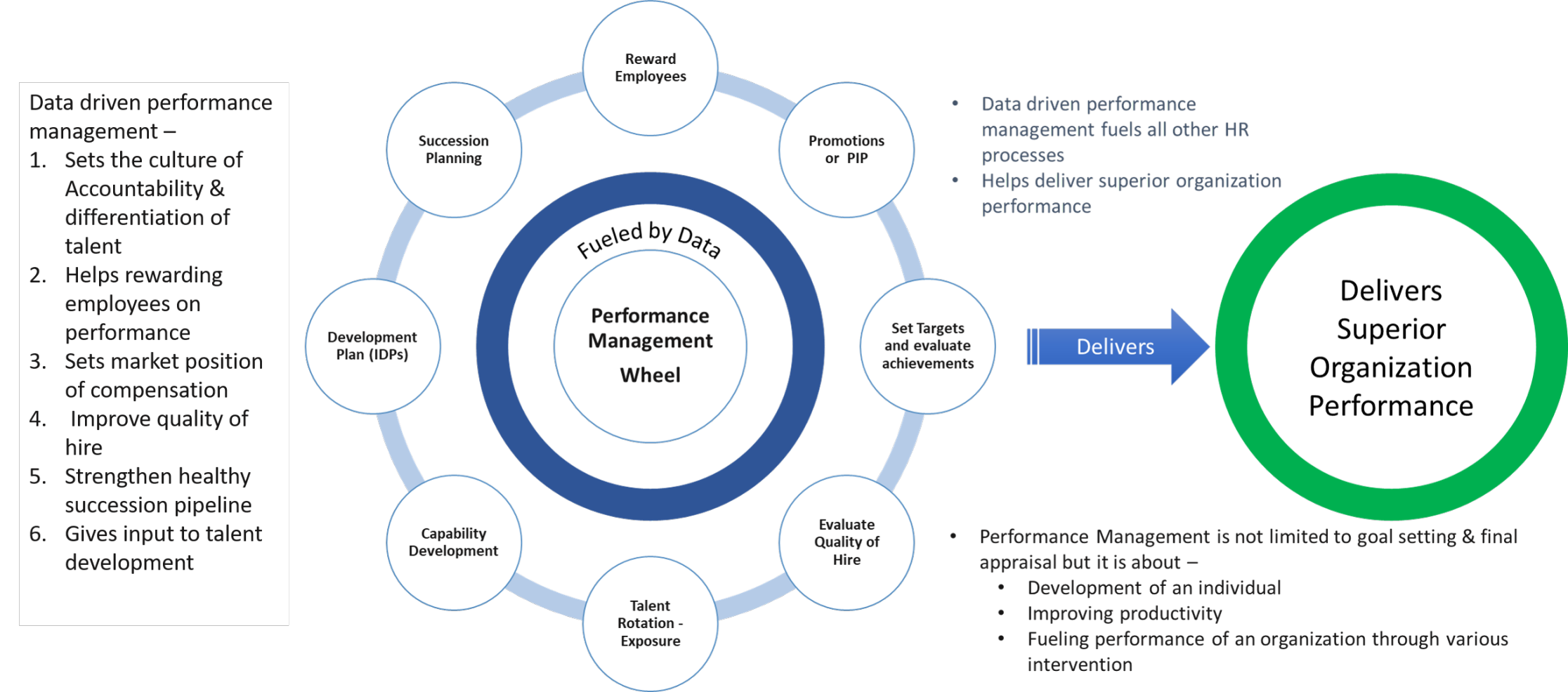
Learning About Performance Analysis Motivated by Data
Learning About Performance Analysis Motivated by Data:
Data-driven performance analysis assesses and enhances company performance using data analytics. It consists of a broad spectrum of technologies and data processing techniques to handle enormous volumes of data, identify trends, and generate valuable insights for action. Unlike traditional performance assessment approaches, which usually rely on intuition or limited data sets, this approach offers a more complete and accurate perspective of the firm’s state.
Implement Data-Driven Performance Analysis Using These Guidelines:
List the Project’s Objectives and the Key Performance Measures (KPIs).
The first phase of performing a performance analysis motivated by data is precisely identifying the objectives and key performance indicators (KPIs) that align with the company’s strategic goals. Specific and quantifiable measurements, such as key performance indicators (KPIs), provide insight into several spheres of company performance. Among these elements are sales development, customer satisfaction, operational effectiveness, and financial situation.
Key Performance Indicators include the pace of income growth, the cost of obtaining new consumers, employee productivity, and the positive net promoter score (NPS).
Getting and Combining the Data
An efficient performance analysis depends on gathering copious amounts of data from several sources. This covers records of operational activity, customer comments, transaction data, and social media engagement records. Combining data from several systems helps to produce a whole picture of performance.
The data sources comprise internal systems (including sales, marketing, and finance), customer relationship management (CRM) software, and other applications.
Analyze data using Advanced Analytics
After the data has been acquired and included, the next step is to apply more advanced analysis techniques. Descriptive analytics—which summarizes historical data—predictive analytics—which forecasts future trends—and prescriptive analytics—which advises actions based on analysis insights—can all fall under this category.
• Descriptive analytics is an analytical approach in which summary statistics and data visualization help one grasp past performance.
• “Predictive analytics” is the phrase used to describe the process of using machine learning techniques to project future results depending on past data.
• Prescriptive analytics is creating suggestions for use to enhance corporate processes.
Interpreting the Findings and Finding Chances for Development
The research will produce insights that need to be assessed in accordance with the corporate environment. This process starts with identifying patterns, deviations, and relationships that either point to underlying issues or opportunities for transformation.
• Finding supply chain constraints causing rising costs and delivery delays would be one instance of an insight.
• Developing marketing plans depends on an awareness of client behavior patterns.
• Analyzing employee performance data helps raise output and lower staff turnover by improving individual performance.
Correct the Required Changes and Monitor their Effectiveness
Once fresh ideas have been acquired, businesses might implement adjustments to improve their performance. One could incorporate technical developments, strategic priority alignment, or process optimization. Constant performance guarantees that implemented improvements are successful and that the business keeps being agile in reaction to fresh data insights.
• One of the required actions is reengineering processes to eliminate inefficiencies.
• Campaigns in marketing are being changed to more precisely target valuable customers.
• Training initiatives are in
• way to raise staff members’ competencies.
There are several benefits in analyzing performance motivated by data.
Using data-driven performance analysis will help companies in many ways, including the following:
• Data-driven insights enable more objective and better-informed decision-making beyond personal preferences.
• Finding and fixing inefficiencies drives higher productivity and cost savings.
• Modifying goods and services to fit consumer needs, made possible by analyzing consumer data, leads to better knowledge of those consumers.
What we mean when we discuss competitive advantage is being able to stay ahead of the competition by always improving, depending on data insights.
Finally, data-driven performance analysis is an indispensable tool for modern companies trying to find chances for development and reach operational excellence. Organizations may improve their decision-making processes, maximize their performance, and keep a competitive edge in their different sectors by using data and analytics methodically.

Case Study: The Vanguard Group
Situation: The Vanguard Group, one of the world’s largest investment management companies, uses benchmark analysis to evaluate and improve its investment strategies, customer service, and operational efficiency.
Application:
1. Investment Performance: Vanguard benchmarks its mutual funds and ETFs against relevant market indices and competing funds. By comparing performance metrics such as returns, volatility, and expense ratios, Vanguard ensures that its products remain competitive and attractive to investors.
2. Customer Service: Vanguard benchmarks its customer service metrics, including response times, customer satisfaction scores, and client retention rates, against industry standards and top-performing financial services firms. This helps Vanguard identify areas for improvement and adopt best practices to enhance the customer experience.
3. Operational Efficiency: Vanguard uses benchmark analysis to compare its operational processes, such as fund management, transaction processing, and IT infrastructure, against industry leaders. By identifying gaps and opportunities, Vanguard can streamline operations, reduce costs, and improve overall efficiency.
Outcome:
• Enhanced Investment Products: Through benchmarking, Vanguard consistently refines its investment strategies, leading to products that deliver strong, competitive performance. This attracts more investors and helps Vanguard maintain its reputation as a leader in low-cost, high-quality investment options.
• Improved Customer Satisfaction: By benchmarking customer service metrics, Vanguard has implemented changes that enhance the client experience, leading to higher satisfaction and loyalty. This focus on customer service helps Vanguard retain clients and attract new ones.
• Operational Excellence: Benchmarking operational processes allows Vanguard to identify inefficiencies and adopt best practices from top-performing firms. This results in cost savings, improved productivity, and the ability to offer competitive fees to clients.
Example in Practice:
• Investment Fund Comparison: Vanguard regularly benchmarks its funds against those of competitors like Fidelity and BlackRock. For instance, if a Vanguard index fund consistently underperforms a comparable fund from Fidelity, Vanguard’s analysts will investigate the reasons for the discrepancy. This might involve examining differences in portfolio composition, management fees, or trading strategies. Based on these insights, Vanguard can make adjustments to its fund management practices to improve performance.

Exercise: Benchmarking Analysis Workshop
1. Introduction
Project Studies
Project Study (Part 1) – Customer Service
The Head of this Department is to provide a detailed report relating to the Business Effectiveness process that has been implemented within their department, together with all key stakeholders, as a result of conducting this workshop, incorporating process: planning; development; implementation; management; and review. Your process should feature the following 12 parts:
01. Understanding Effectiveness
02. Assessing Effectiveness
03. Goal-Based Model
04. Resource Based model
05. Stakeholder Based model
06. Internal Based model
07. Competing values framework (CVF) Model
08. Balance Scorecard Model
09. Prioritization Techniques
10. Goal-Based Model
11. Key Performance Indicator and Metrics
12. Benchmark Analysis
Please include the results of the initial evaluation and assessment.
Project Study (Part 2) – E-Business
The Head of this Department is to provide a detailed report relating to the Business Effectiveness process that has been implemented within their department, together with all key stakeholders, as a result of conducting this workshop, incorporating process: planning; development; implementation; management; and review. Your process should feature the following 12 parts:
01. Understanding Effectiveness
02. Assessing Effectiveness
03. Goal-Based Model
04. Resource Based model
05. Stakeholder Based model
06. Internal Based model
07. Competing values framework (CVF) Model
08. Balance Scorecard Model
09. Prioritization Techniques
10. Goal-Based Model
11. Key Performance Indicator and Metrics
12. Benchmark Analysis
Please include the results of the initial evaluation and assessment.
Project Study (Part 3) – Finance
The Head of this Department is to provide a detailed report relating to the Business Effectiveness process that has been implemented within their department, together with all key stakeholders, as a result of conducting this workshop, incorporating process: planning; development; implementation; management; and review. Your process should feature the following 12 parts:
01. Understanding Effectiveness
02. Assessing Effectiveness
03. Goal-Based Model
04. Resource Based model
05. Stakeholder Based model
06. Internal Based model
07. Competing values framework (CVF) Model
08. Balance Scorecard Model
09. Prioritization Techniques
10. Goal-Based Model
11. Key Performance Indicator and Metrics
12. Benchmark Analysis
Please include the results of the initial evaluation and assessment.
Project Study (Part 4) – Globalization
The Head of this Department is to provide a detailed report relating to the Business Effectiveness process that has been implemented within their department, together with all key stakeholders, as a result of conducting this workshop, incorporating process: planning; development; implementation; management; and review. Your process should feature the following 12 parts:
01. Understanding Effectiveness
02. Assessing Effectiveness
03. Goal-Based Model
04. Resource Based model
05. Stakeholder Based model
06. Internal Based model
07. Competing values framework (CVF) Model
08. Balance Scorecard Model
09. Prioritization Techniques
10. Goal-Based Model
11. Key Performance Indicator and Metrics
12. Benchmark Analysis
Please include the results of the initial evaluation and assessment.
Project Study (Part 5) – Human Resources
The Head of this Department is to provide a detailed report relating to the Business Effectiveness process that has been implemented within their department, together with all key stakeholders, as a result of conducting this workshop, incorporating process: planning; development; implementation; management; and review. Your process should feature the following 12 parts:
01. Understanding Effectiveness
02. Assessing Effectiveness
03. Goal-Based Model
04. Resource Based model
05. Stakeholder Based model
06. Internal Based model
07. Competing values framework (CVF) Model
08. Balance Scorecard Model
09. Prioritization Techniques
10. Goal-Based Model
11. Key Performance Indicator and Metrics
12. Benchmark Analysis
Please include the results of the initial evaluation and assessment.
Project Study (Part 6) – Information Technology
The Head of this Department is to provide a detailed report relating to the Business Effectiveness process that has been implemented within their department, together with all key stakeholders, as a result of conducting this workshop, incorporating process: planning; development; implementation; management; and review. Your process should feature the following 12 parts:
01. Understanding Effectiveness
02. Assessing Effectiveness
03. Goal-Based Model
04. Resource Based model
05. Stakeholder Based model
06. Internal Based model
07. Competing values framework (CVF) Model
08. Balance Scorecard Model
09. Prioritization Techniques
10. Goal-Based Model
11. Key Performance Indicator and Metrics
12. Benchmark Analysis
Please include the results of the initial evaluation and assessment.
Project Study (Part 7) – Legal
The Head of this Department is to provide a detailed report relating to the Business Effectiveness process that has been implemented within their department, together with all key stakeholders, as a result of conducting this workshop, incorporating process: planning; development; implementation; management; and review. Your process should feature the following 12 parts:
01. Understanding Effectiveness
02. Assessing Effectiveness
03. Goal-Based Model
04. Resource Based model
05. Stakeholder Based model
06. Internal Based model
07. Competing values framework (CVF) Model
08. Balance Scorecard Model
09. Prioritization Techniques
10. Goal-Based Model
11. Key Performance Indicator and Metrics
12. Benchmark Analysis
Please include the results of the initial evaluation and assessment.
Project Study (Part 8) – Management
The Head of this Department is to provide a detailed report relating to the Business Effectiveness process that has been implemented within their department, together with all key stakeholders, as a result of conducting this workshop, incorporating process: planning; development; implementation; management; and review. Your process should feature the following 12 parts:
01. Understanding Effectiveness
02. Assessing Effectiveness
03. Goal-Based Model
04. Resource Based model
05. Stakeholder Based model
06. Internal Based model
07. Competing values framework (CVF) Model
08. Balance Scorecard Model
09. Prioritization Techniques
10. Goal-Based Model
11. Key Performance Indicator and Metrics
12. Benchmark Analysis
Please include the results of the initial evaluation and assessment.

Project Study (Part 9) – Marketing
The Head of this Department is to provide a detailed report relating to the Business Effectiveness process that has been implemented within their department, together with all key stakeholders, as a result of conducting this workshop, incorporating process: planning; development; implementation; management; and review. Your process should feature the following 12 parts:
01. Understanding Effectiveness
02. Assessing Effectiveness
03. Goal-Based Model
04. Resource Based model
05. Stakeholder Based model
06. Internal Based model
07. Competing values framework (CVF) Model
08. Balance Scorecard Model
09. Prioritization Techniques
10. Goal-Based Model
11. Key Performance Indicator and Metrics
12. Benchmark Analysis
Please include the results of the initial evaluation and assessment.

Project Study (Part 10) – Production
The Head of this Department is to provide a detailed report relating to the Business Effectiveness process that has been implemented within their department, together with all key stakeholders, as a result of conducting this workshop, incorporating process: planning; development; implementation; management; and review. Your process should feature the following 12 parts:
01. Understanding Effectiveness
02. Assessing Effectiveness
03. Goal-Based Model
04. Resource Based model
05. Stakeholder Based model
06. Internal Based model
07. Competing values framework (CVF) Model
08. Balance Scorecard Model
09. Prioritization Techniques
10. Goal-Based Model
11. Key Performance Indicator and Metrics
12. Benchmark Analysis
Please include the results of the initial evaluation and assessment.

Project Study (Part 11) – Logistics
The Head of this Department is to provide a detailed report relating to the Business Effectiveness process that has been implemented within their department, together with all key stakeholders, as a result of conducting this workshop, incorporating process: planning; development; implementation; management; and review. Your process should feature the following 12 parts:
01. Understanding Effectiveness
02. Assessing Effectiveness
03. Goal-Based Model
04. Resource Based model
05. Stakeholder Based model
06. Internal Based model
07. Competing values framework (CVF) Model
08. Balance Scorecard Model
09. Prioritization Techniques
10. Goal-Based Model
11. Key Performance Indicator and Metrics
12. Benchmark Analysis
Please include the results of the initial evaluation and assessment.

Project Study (Part 12) – Education
The Head of this Department is to provide a detailed report relating to the Business Effectiveness process that has been implemented within their department, together with all key stakeholders, as a result of conducting this workshop, incorporating process: planning; development; implementation; management; and review. Your process should feature the following 12 parts:
01. Understanding Effectiveness
02. Assessing Effectiveness
03. Goal-Based Model
04. Resource Based model
05. Stakeholder Based model
06. Internal Based model
07. Competing values framework (CVF) Model
08. Balance Scorecard Model
09. Prioritization Techniques
10. Goal-Based Model
11. Key Performance Indicator and Metrics
12. Benchmark Analysis
Please include the results of the initial evaluation and assessment.
Program Benefits
Management
- Improved accuracy
- Improved efficiency
- Better risk management
- Improved customer experience
- Better resource allocation
- Better competitive advantage
- Improved innovation
- Increased transparency
- Improved collaboration
- Better long-term planning
Business Operations
- Improved efficiency
- Better resource allocation
- Improved accuracy
- Better risk management
- Improved customer experience
- Better competitive advantage
- Improved innovation
- Increased transparency
- Improved collaboration
- Better long-term planning
Human Resources
- Improved efficiency
- Better decision making
- Increased competitiveness
- Reduced risk
- Enhanced customer experience
- Improved innovation
- Increased revenue
- Cost savings
- Better talent management
- Enhanced data security
Client Telephone Conference (CTC)
If you have any questions or if you would like to arrange a Client Telephone Conference (CTC) to discuss this particular Unique Consulting Service Proposition (UCSP) in more detail, please CLICK HERE.


